C eramic W orld
◗ Industry 4.0




◗ Finishing & Surface treatment
■ Brazil looks to the future
■ Il Brasile che guarda al futuro
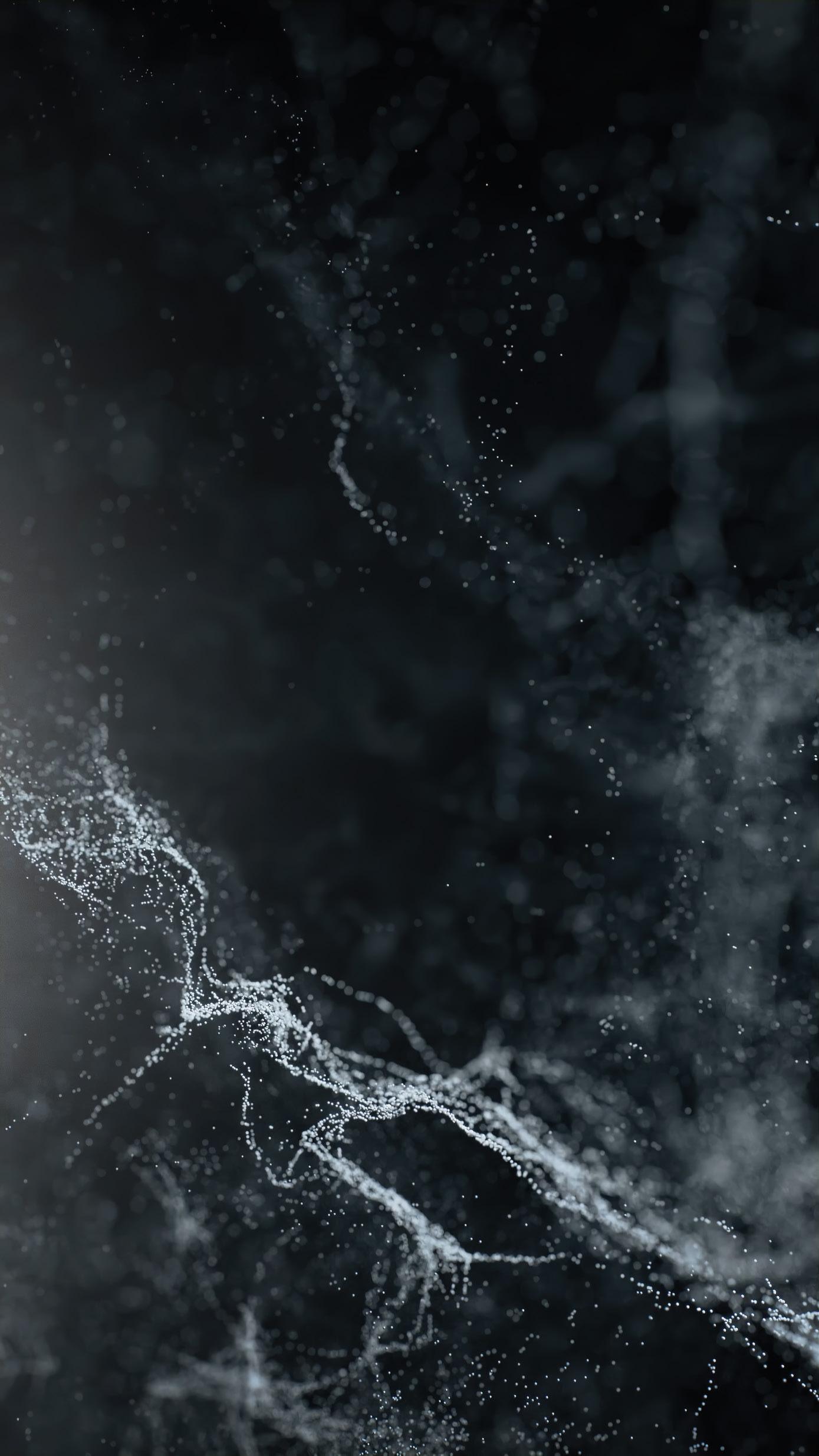












The
of natural aesthetic effects
A future reserved for the most
thinking
.
Make it incredible A new technology is already changing the way of digital decoration.
reproduction
will be essential for writing the future.
forward
minds. Amazing? No, incredible. systemceramics.com














THE FUTURE IS TODAY Thanks to our technologies your company will benefit from H2 and flexible Power and Heat solutions that are ready for both today and tomorrow’s challenges. +2Million hours with high H2 fuel up to100% H2 +16000 Gas Turbines sold For more information and to locate the office nearest you: visit solarturbines.com; Call +41 91 851 1511 (Europe) or +1 619 544 5352 (US) email infocorp@solarturbines.com | www.solarturbines.com CHANGING the rules of the game


www.efi.com · cretaprintsales@efi.com robust, reliable and performing inkjet printers inkjet decoration EFI Cretaprint P5 is a compact printer for tiles up to 1440 mm wide on your regular production line. EFI Cretaprint P5+, with up to 12 decoration printing bars and e ects, it is the perfect t for superior quality ceramic tiles.
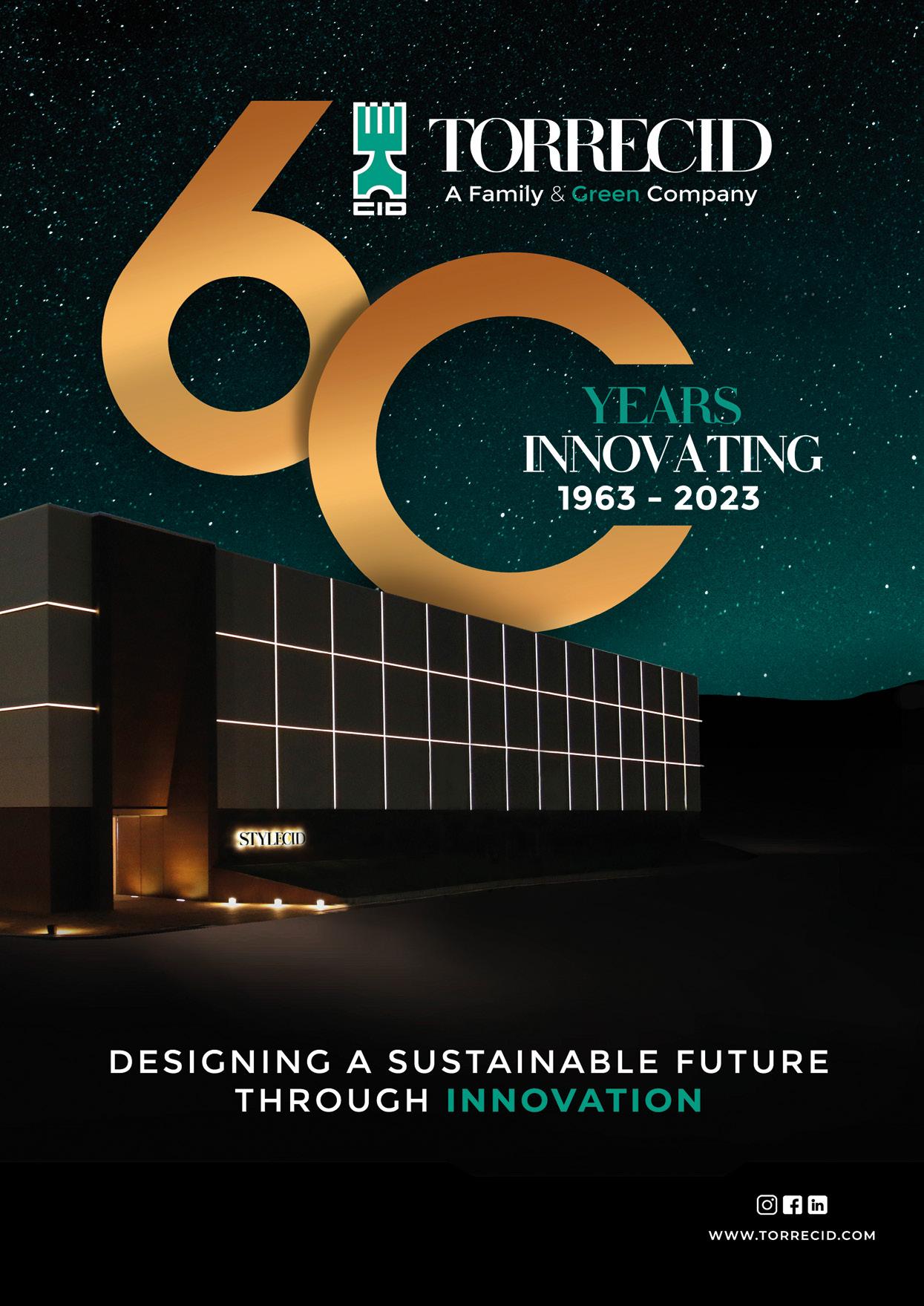
VERY HIGH PRODUCTIVITY: 24.000 SMQ/DAY DEEP AND WEEL-DEFINED STRUCTURES
DEEP
VERY LOW % OF SCRAPS
-50% OPERATION COSTS
 Pradelli
Pradelli
Year 33, N° 152
July/August 2023
Bimonthly review
Anno 33, n° 152
Luglio/Agosto 2023
Periodico bimestrale
9 E ditorial
Ceramics machinery, a healthy industry
Paola Giacomini Macchine per ceramica, un comparto in salute 10
30 EcoNomics
Roca Group consolidates its leadership position
Il Gruppo Roca consolida il suo primato 34
38
42
Lamosa sees slowdown in first quarter Lamosa rallenta nel primo trimestre
European construction market forecasts to 2025
Thomas Endhoven Costruzioni in europa: outlook al 2025
Slowdown for Italian tile industry after record 2022
Il made in Italy frena dopo un 2022 da record 46
48
52 i N t E rvi EW
58
Countdown to the 40th Cersaie
Milena Bernardi Aspettando il 40° Cersaie
Florim reports growth in all sustainability indicators
Milena Bernardi Florim: in crescita tutti gli indicatori di sostenibilità
Italcer: new investments ahead
Paola Giacomini Italcer, nuovi investimenti in vista
Brazil looks to the future
Paola Giacomini Il Brasile che guarda al futuro 62
Digitisation: what’s in store?

Danilo Mascolo Digitalizzazione, cosa attendersi?
The new business models of digital servitization
Mario Rapaccini I nuovi modelli di business della digital servitization 72
Novabell, when a ceramic tile factory goes digital
Milena Bernardi Novabell, quando l’impianto ceramico diventa digitale
LATEST TECHNOLOGIES industry 4.0
LATEST TECHNOLOGIES end of line 82
FOCUS ON finishing & surface treatment

A digital and sustainable ecosystem for ceramic surface finishing BMR’s R&D Department Un ecosistema digitale e sostenibile per la finitura di superfici
Greater quality, efficiency and productivity in the finishing department Ancora Più qualità, efficienza e produttività nel reparto finitura
Target net zero: Apulum rises to the challenge
Milena Bernardi Obiettivo net zero: Apulum accoglie la sfida
Circular economy: from waste to recycling
Minerali Industriali Engineering Economia circolare: dallo scarto al riciclo
Cover picture by: Giancarlo
World
NEWs
66
76
78
86
90
98 t abl EWar E
LATEST TECHNOLOGIES
t E ch N ology
100
102 advErtisErs’ list contents 5 CWR 152/2023
ON industry 4.0
FOCUS
Publisher / Editore:
Administration and Editorial Office
Amministrazione e Redazione
KAIROS MEDIA GROUP srl
Via Fossa Buracchione, 84 41126 Baggiovara (MO) - Italy
Tel. +39 059 512103 Fax +39 059 512157 info@tiledizioni.it
Iscritto al registro delle imprese di Modena C.F./P.IVA IT02778050365

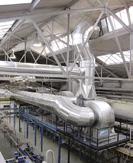


Capitale Sociale: € 51.400,00
R.E.A. 329775. Iscrizione ROC n. 9673 Periodico bimestrale registrato presso il Tribunale di Modena al n. 21/17 in data 10/08/2017
• CEO: Gian Paolo Crasta g.crasta@tiledizioni.it
• Editor / Direttore responsabile: Paola Giacomini p.giacomini@tiledizioni.it
• Editorial Board / Comitato Editoriale: Luca Baraldi, Milena Bernardi, Cristian Cassani, Omar Gubertini, Francesco Incerti, Paola Rolleri
• Advertising / Pubblicità: KAIROS MEDIA GROUP: Tel. +39 059 512103 Fax +39 059 512157
• Paola Giacomini mobile +39 335 1864257 p.giacomini@tiledizioni.it
• Silvia Lepore mobile +39 345 7218245 s.lepore@tiledizioni.it
• Elisa Verzelloni mobile +39 338 5361966 e.verzelloni@tiledizioni.it
• Translation / Traduzioni: John Freeman, Geoff Day
• Subscriptions / Abbonamenti: www.tiledizioni.it/subscription
• Each copy / una copia € 4
• Annual subscription (5 issues)
Abbonamento annuale (5 numeri) Italy: € 50; International: €70; Special tariffs for group subscriptions are available on request. Tariffe speciali per abbonamenti collettivi sono disponibili su richiesta.

Spedizione in a.p. art. 1 comma 1 DL 353/2003 DCB MODENA
L’IVA sugli abbonamenti, nonché sulla vendita dei fascicoli separati, è assolta dall’Editore ai sensi dell’art. 74 primo comma lettera C del DPR 26.10.72 N. 633 e successive modificazioni e integrazioni.

• Graphic Layout / Progetto Grafico Sara Falsettis.falsetti@tiledizioni.it
• Printer / Stampa

Faenza Printing Industries SpA Via Vittime Civili di Guerra 35 48018 Faenza (RA)

• Photolits / Typesetting
Fotolito/Fotocomposizione
Vaccari Zincografica S.r.l. Via Salgari, 61 - 41123 Modena
Entire contents copyright Kairos Media Group. All rights reserved. Opinions expressed by writers are not necessarly those held by the publisher who is not held responsible. Editorial material, manuscripts, photographs, transparencies and artwork will not be returned. Tutti i diritti di riproduzione e traduzione degli articoli pubblicati sono riservati È vietata la riproduzione anche parziale senza l’autorizzazione dell’Editore. Manoscritti, disegni, fotografie e altro materiale inviato in redazione, anche se non pubblicati, non verranno restituiti. La Direzione non assume responsabilità per le opinioni espresse dagli autori dei testi redazionali e pubblicitari.
date of going to press / chiuso in redazione il: 10/07/2023

KAIROS MEDIA GROUP S.r.l., in conformità al “Testo unico sulla privacy”, garantisce la riservatezza dei dati usati per gli abbonamenti e per gli scopi tipici della stampa specializzata e la possibilità di modificarli o cancellarli (art. 7 del D.L. 196/2003) a mezzo richiesta scritta.

promoted by
kairos media group also publishes:
ADVERTISING
ENEA green
Original Air-Oil cooler






ENEAgreen is the first cooling system for presses oil in ceramic industry to use the variable ventilation technology.




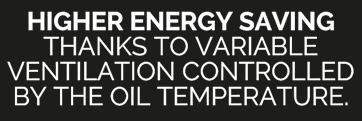
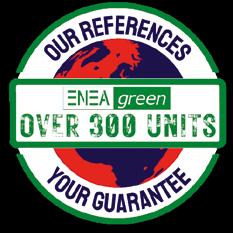

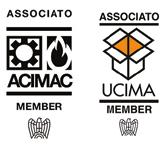




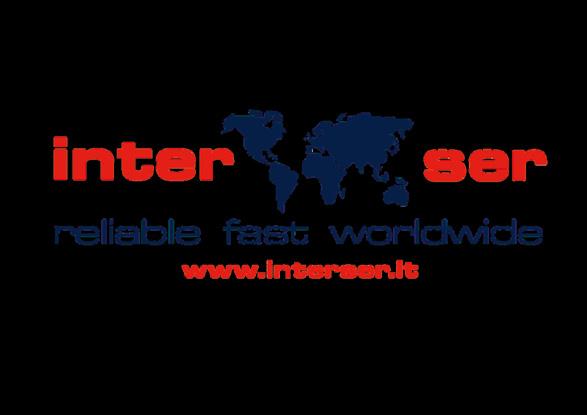



WIND OF CHANGE.

SUPERA RAPIDA
WIZARD PRO
TORNADO
TITANIUM
MAGISTER
DRYFIX POWERLUX
 The press without mould for traditional tiles and big slabs
The original stacking machine for traditional and extra-large sizes
The high productivity digital printer with exclusive FD1 printhead
The ultra-high productivity and fully automated squaring machine
The innovative firing technology powered by hydrogen
The new packaging system for big size ceramic tiles
The worldwide success for grits digital application
The new technology for Super Gloss treatment
The press without mould for traditional tiles and big slabs
The original stacking machine for traditional and extra-large sizes
The high productivity digital printer with exclusive FD1 printhead
The ultra-high productivity and fully automated squaring machine
The innovative firing technology powered by hydrogen
The new packaging system for big size ceramic tiles
The worldwide success for grits digital application
The new technology for Super Gloss treatment
CERAMICS MACHINERY, A HEALTHY INDUSTRY



PER CERAMICA, UN COMPARTO IN SALUTE
The Italian ceramics machinery and equipment manufacturing industry closed 2022 with another record-breaking turnover, up 14.5% on an excellent 2021, to €2,350 million “This is an extraordinary achievement”, commented Paolo Lamberti, Chairman of Acimac , the Italian association of ceramic machinery manufacturers. Not only did this result surpass expectations, and the €2.16 billion estimate forecast in the interim period, but it was also achieved in a year marked by multiple negative factors and tensions on the global market.
“What kind of performance would we have reached without the shortage of raw materials and the increase in energy costs, which so adversely impacted the whole of 2022?”, stated Lamberti , clearly proud to lead an industry that “has demonstrated not only a structural health that ensured it withstood the effects of the pandemic and its economic repercussions, but also the ability to start back up, to be ready to go again. This is without doubt due to technologies that offer customers around the world a series of advantages that cannot be found elsewhere, such as quality and energy efficiency, with the latter proving to be a particularly key driver for our customers over the past year. It is common for our businesses to be able to provide solutions, straight away, meeting the needs of the global ceramics market”.
With their 7,325 workers, the 137 companies which make up the Italian ceramics machinery industry can celebrate a double historical record. Exports , accounting for 72% of total turnover, reached a value of €1.69 billion (+9.9% on 2021) , and were boosted by the strong demand in North America (+123%), European Union (+27%) and Middle East (+23%), which more than compensated for the decline in Asia, Africa and Eastern Europe. The leap on the Italian market was also astonishing, with sales rising by 27.4% from €515 million in 2021 to €656 million
Another positive factor was the increase of sales in all customer sectors making up the ceramic industry: not just ceramic tiles (+13.5%), but also sanitaryware (+21.4%), heavyclay bricks (+11%), refractory materials (+25.5%), tableware (+17%) and technical ceramics (+115%).
What to expect, now? According to the Acimac survey, almost 74% of member companies forecast either further growth or stability in 2023. “This gives us hope both for this year and for the medium term, although threats and dramatic circumstances are becoming increasingly frequent, so we will have to remain alert”, added Lamberti ◼
È ancora record per l’industria italiana delle macchine per ceramica. Nel 2022 i ricavi del settore sono cresciuti nuovamente a doppia cifra, raggiungendo quota 2.350 milioni di euro (+14,5% su un già ottimo 2021)
“Un risultato straordinario”lo definisce così il presidente di Acimac Paolo Lamberti – non solo perché ha superato le aspettative, infrangendo anche la stima dei preconsuntivi di 2,16 miliardi, ma anche perché è stato ottenuto in un anno caratterizzato da molteplici fattori negativi e tensioni sul mercato globale.
“Quali performance avremmo registrato senza lo shortage di materie prime e l’incremento dei costi energetici che hanno zavorrato l’intero 2022?”, si chiede Lamberti, palesemente orgoglioso di guidare un settore che “dimostra non solo una salute strutturale che ha permesso di reggere i colpi della pandemia e dei suoi riverberi economici, ma anche la capacità di rilanciare, di farsi trovare pronto. Questo grazie a tecnologie che permettono ai clienti in giro per il mondo tutta una serie di vantaggi che da altre parti non trovano, come la qualità e l’efficienza energetica, un driver quest’ultimo a cui i nostri clienti hanno sicuramente prestato particolare attenzione nell’ultimo anno. Le nostre aziende si
trovano spesso nella situazione di riuscire a dare risposte ultra-tempestive alle esigenze del mercato mondiale della ceramica”.
Con i loro 7.325 addetti complessivi, le 137 imprese che compongono l’industria italiana delle macchine e attrezzature per ceramica festeggiano un duplice record storico. L’export, pari al 72% del fatturato totale, ha raggiunto la cifra di 1,69 miliardi di euro (+9,9% sul 2021), trainato dalla forte domanda in Nord America (+123%), Unione Europea (+27%) e Medio Oriente (+23%) che ha più che compensato la contrazione in Asia, Africa ed Est Europa. Ma sbalorditivo è anche il risultato sul mercato domestico, con vendite volate a 656 milioni di euro (+27,4% sui 515 milioni di euro del 2021).
Altro elemento positivo è l’incremento di vendite in tutti i settori attivi nella produzione di ceramica: non solo piastrelle (+13,5%), quindi, ma anche sanitari (+21,4%), laterizi (+11%), refrattari (+25,5%), stoviglieria (+17%) e ceramica tecnica (+115%).
Quali aspettative, ora? Secondo le rilevazioni di Acimac, quasi il 74% delle aziende associate stima un 2023 stabile o in ulteriore crescita. “Questo ci fa ben sperare sia per quest’anno sia per il medio periodo – conclude Lamberti - anche se siamo abituati ormai a una certa frequenza di minacce ed eventi shock, quindi l’allerta deve sempre restare alta”. ◼
by Paola Giacomini, Editor - p.giacomini@tiledizioni.it
www.CeramicWorldWeb.it Follow us also on Social. Daily updates! Search “Ceramic World Web” and “Tile Edizioni” editorial 9 CWR 152/2023 MACCHINE
PROJECTA SHOWCASES NEW DIGITAL PRINTERS AT THINK PRO

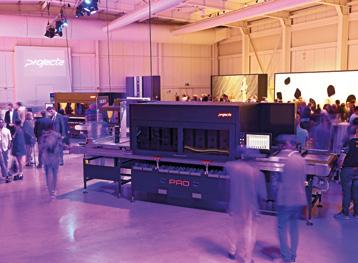
Think Pro, the event organised by Projecta together with Digital Design (both members of Gruppo B&T) on 14 June to present new digital printers, proved a big success. More than 200 guests including customers, journalists and politicians converged on the bt-SPACE for the event, where they had the opportunity to find out more about the company’s latest goals, namely consolidating its international market position and becoming a go-to global supplier of digital printing solutions, especially for the ceramic industry. Four flagship technologies were launched at the event: the exclusive FD1 printheads, the new Pro and Ikon digital printers, and the brand new Digifix solution for microstructures, effects application and functional fluids, all of which are high-performance systems developed by the Projecta R&D department to serve the global market.
“Projecta stands for talent & technology, efficiency & speed, aesthetics & electronics,” commented Projecta’s CEO Luca Fanara when describing the company’s development. “Our aim is to consolidate our position as a leading player by improving constantly and by assuring markets that choosing

Projecta means having the guarantee of high-quality production thanks to our in-house Italian expertise, a first-rate, punctual and professional after-sales service and immediate spare parts availability worldwide.”
“This evening’s event testifies to the important R&D efforts that are written into Gruppo B&T’s DNA,” added Fabio Tarozzi, Chairman and CEO of Gruppo B&T. “We are a highly cohesive team, with skills and technologies covering the entire ceramic production chain and a constant focus on the future. We are well aware of the importance of investments and innovations for responding to market changes and for this reason always strive to regenerate all Group companies. Projecta is an outstanding example of growth. It is investing in young people and will continue to work to be a go-to partner for customers globally.”
Two other Gruppo B&T flagship technologies were showcased during the evening: the new ultra-high productivity Rapida version of the Supera® mouldless pressing system and Tornado, the new high-speed dry squaring machine developed by Ancora.
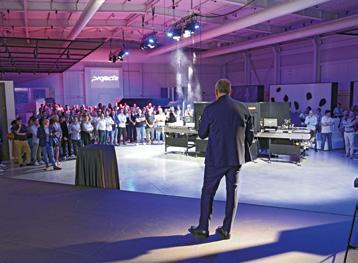
LE NUOVE STAMPANTI DIGITALI PROJECTA IN MOSTRA A THINK PRO
Successo di pubblico a Think Pro, l’evento che Projecta ha organizzato il 14 giugno scorso insieme a Digital Design (entrambe parte di Gruppo B&T) per presentare le nuove stampanti digitali. Presso il bt-SPACE di Ubersetto sono intervenuti oltre 200 ospiti tra clienti, giornalisti ed esponenti del mondo della politica a cui sono stati illustrati anche i nuovi obiettivi aziendali: consolidarsi sui mercati internazionali, diventando punto di riferimento per la stampa digitale a livello mondiale, in primis nel settore ceramico.
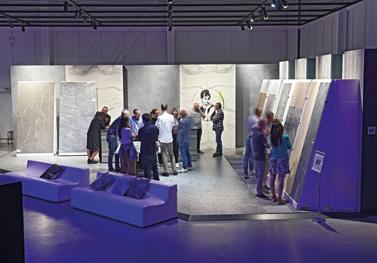
Quattro le tecnologie di punta lanciate nell’occasione: le esclusive testine FD1, la nuova stampante digitale Pro e Ikon e la nuovissima Digifix per microstrutture, applicazione di effetti e fluidi funzionali, tutti sistemi ad alte prestazioni generati dal reparto R&D Projecta, per servire al meglio il mercato globale. “Projecta è talento & tecnologia, efficienza & velocità, estetica & elettronica”, ha commentato Luca Fanara, CEO di Projecta nel descrivere l’evoluzione della società. “Il nostro obiettivo è quello di consolidarci come eccellenza continuando
a migliorare e dimostrando ai mercati che affidarsi a Projecta significa avere la garanzia di una produzione di qualità grazie ad un know-how italiano completamente home-made, con un’assistenza post-vendita di primo livello, con ricambistica immediata disponibile world-wide”. “Questa serata è la testimonianza dell’importate attività di ricerca e sviluppo che è il DNA di Gruppo B&T”, ha aggiunto Fabio Tarozzi, Presidente e Amministratore Delegato di Gruppo B&T. “Siamo una squadra sinergica, che ha competenze e tecnologie per l’intera filiera produttiva ceramica, e che guarda costantemente al futuro. Siamo consapevoli dell’importanza degli investimenti e delle innovazioni per rispondere ai cambiamenti del mercato e per questo cerchiamo sempre di rigenerare tutte le aziende del Gruppo. Projecta è un esempio virtuoso di crescita, sta investendo sui giovani e continuerà a lavorare per essere un punto di riferimento per la clientela a livello globale”. Spazio durante la serata anche ad altre due tecnologie di punta di Gruppo B&T: Supera®, il sistema di pressatura senza stampo nella nuova versione Rapida ad altissima produttività, e Tornado, la nuova squadratrice a secco ad alta velocità sviluppata da Ancora.
10 CWR 152/2023 world news


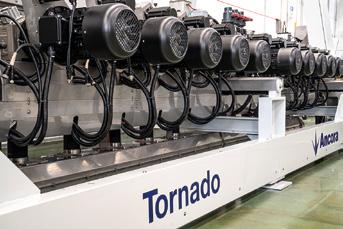


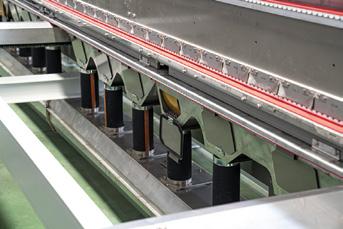
ATLAS CONCORDE: THE NEW PLANT FOR LARGE SLABS TAKES SHAPE
Work continues in Finale Emilia (Modena) on the new Atlas Concorde factory dedicated to the production of large slabs, with production scheduled to start by the summer.

Announced in July 2022, the project has required an investment of about €60 million. The new facility will develop over more than 35,000 m² and will help consolidate Atlas Concorde’s leadership as the international partner of choice for all ceramic surfaces. The new hub will be able to produce large-format porcelain slabs
Made in Italy in sizes 120x278 cm, 120x240 cm and 160x320 cm in different thicknesses based on market demands. It will be built with the most advanced production technologies and will achieve the highest standards of sustainability in the ceramic industry thanks to the introduction of green technologies such as the large photovoltaic array consisting of more than 8,400 panels, allowing for the reduction of 2,000 tons of CO2 per year, equivalent to the amount of
SACMI SUPPLIES COMPLETE PLANT TO ALGERIAN COMPANY BCERAM


A new complete plant supplied by Sacmi for the production of large-format tiles was recently started up at the facility of Algerian company Bceram in Guidjel in the province of Sétif and is now fully operational. The plant doubles the company’s production capacity in the high-end segment and is equipped with latest-generation technology for all stages of the production process, from body preparation to the PH3800 press, the multi-level ECP dryer, the kiln and glazing lines, as well as com-
CO2 absorbed annually by 80,000 trees. The kiln will also be ready for hydrogen fueling. Thanks to this project, Atlas Concorde will be able to introduce technologically advanced lines into its production capable of enabling a degree of automation that guarantees among the highest quality standards in the industry. The plant will include an automated section for the backing stage, improving the mechanical strength of the slabs, also reducing the risk of breakage during transportation and improving the workability of the slab for the benefit of customers and installers. Furthermore, in order to achieve multiple finishes with elegant esthetics, boosting the colors and brightness of the porcelain slabs, the plant will include a high-tech surface polishing line.
ATLAS CONCORDE: PRENDE FORMA IL NUOVO STABILIMENTO GRANDI LASTRE
A Finale Emilia sono in dirittura d’arrivo i lavori del nuovo stabilimento grandi lastre di Atlas Concorde che inizierà la produzione
entro questa estate. Annunciato a luglio 2022, l’investimento, circa 60 milioni di euro, contribuirà a consolidare la leadership dell’azienda di Fiorano come partner di riferimento internazionale per tutte le superfici ceramiche. Il nuovo polo (35.000 m² di superficie) sarà in grado di produrre lastre made in Italy in gres porcellanato di grandi dimensioni nei formati 120x278, 120x240 e 160x320 cm con spessori differenti.
Allo scopo saranno introdotte le più avanzate tecnologie disponibili sul mercato che consentiranno di raggiungere i più elevati standard produttivi e di sostenibilità, grazie anche all’introduzione dell’ampio parco fotovoltaico (già completato) composto da oltre 8.400 pan-
nelli che si estende sull’intera superficie e che permetterà la riduzione di 2.000 tonnellate di CO2 all’anno, equivalente alla quantità di CO2 assorbita annualmente da 80.000 alberi.
Alto il livello di automazione delle linee produttive in fase di installazione, con una sezione dedicata alla fase di stuoiatura che andrà ad aumentare la resistenza meccanica delle lastre prodotte per ridurre il rischio di rottura in fase di trasporto e a migliorare la lavorabilità delle superfici. Il forno di cottura sarà inoltre predisposto per l’alimentazione a idrogeno, mentre per raggiungere una molteplicità di finiture estetiche sarà introdotta una linea di lappatura superficiale altamente innovativa.
plete sorting, packaging and palletising solutions designed by Sacmi.
Bceram is one of Algeria’s most dynamic ceramic tile producers and with this latest investment aims to strengthen its position in the domestic market and increase its export share.
IMPIANTO COMPLETO SACMI PER L’ALGERINA BCERAM
A Guidjel, nella provincia algerina di Sétif, la Sarl Bceram ha già avviato e portato a regime il nuovo impianto completo fornito da Sacmi e dedicato alla produzione di piastrelle di grande formato. L’impianto, che raddoppia la capaci-
tà produttiva dell’azienda nel segmento di alta gamma, è equipaggiato con tecnologie di ultima generazione per tutte le fasi del processo, dalla preparazione impasti alla pressa PH3800, all’essiccatoio ECP multipiano, fino al forno e alle linee di smaltatura e di scelta, con soluzioni complete di smistamento, confezionamento e pallettizzazione progettate da Sacmi.
Tra le aziende ceramiche più attive e dinamiche nel contesto algerino, Bceram punta così a rafforzarsi sul mercato interno e ad ampliare la quota di prodotto destinata all’export.
12 CWR 152/2023 world news
Data flows, technology remains INTO THE FUTURE
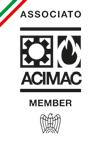



13 CWR 152/2023 www.bmr.it
ARGENTA CERÁMICA
INSTALLS MORE THAN 92,000 SQUARE METRES OF PHOTOVOLTAIC PANELS

Argenta Cerámica, a leading Spanish ceramic tile manufacturer based in Villareal (Castellón), recently took a step forward in its ambitious decarbonisation plan with the installation of powerful photovoltaic generation plants at its five production facilities in
Onda, Vilafamés and Vall d’Alba. Confirming its goal of reaching a peak power of 19.2 MWp and an annual generation capacity of 26,727 MWh, Argenta has completed a photovoltaic array comprising a total of 35,218 modules occupying a total area of 92,020 square metres across its various sites. The photovoltaic system will cover 26% of the company’s electricity consumption, thereby cutting costs by 29% and reducing indirect CO2 emissions by 6,922 tonnes/year. The project is part of Argenta’s environmental improvement policy, which already includes kiln heat recovery systems, wastewater and
CERTECH GROUP REORGANISES ITS CERAMIC DIVISION’S SALES STRUCTURE
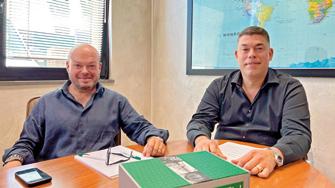
The Casalgrande-based Certech Group has undertaken a major internal reorganisation of its ceramics division consisting of Certech, Vibrotech and Novatech, the latter of which was set up in September 2022 and specialises in raw material treatment plants.
As of 1 May, the commercial activities of the three companies have been placed under a single management structure headed by Ivan Bondani, sales director of Vibrotech since June 2016.
Bondani’s remit will be to reorganise, strengthen and coordinate the activities of the various structures to ensure greater market penetration across the group’s entire range of technology offerings. Bondani has also been appointed operations director of
the foreign branches Certech Impianti de Mexico (CD Guadalupe, NL), Certech USA (Lebanon, TN) and Certech Spain (Onda, Castellón).
“In the last two years, Certech Group has significantly stepped up the pace of its development and we now require more efficient and effective organisational methods to enable us to exploit new market opportunities and at the same time offer our customers an even better service,” commented CEO Alberto Palladini
“Following recent years’ growth, the Certech Group is now a leading supplier of plants, machinery and accessories for ceramic production and offers a constantly expanding portfolio of products for milling, spray drying, glazing and waste recovery along with a level of quality that is increasingly recognised not only in Italy but worldwide,” said Bondani “Our aim now is to create effective synergies between the group’s various companies and to launch coordinated commercial policies that will enable us to provide our customers with high-quality, timely and exhaustive solu-
ceramic sludge recycling solutions and continuous investments in high-efficiency technologies.
ARGENTA CERÁMICA INSTALLA OLTRE 92MILA MQ DI IMPIANTI FOTOVOLTAICI
Argenta Cerámica, tra i più importanti produttori spagnoli di piastrelle ceramiche con sede a Villareal (Castellon), ha recentemente portato a termine un ulteriore capitolo del suo ambizioso piano di decarbonizzazione, con l’installazione di potenti impianti fotovoltaici nei suoi cinque stabilimenti produttivi di Onda, Vilafamés e Vall d’Alba. Confermando l’obiettivo di raggiungere i 19,2 MWp di
potenza di picco e una capacità di generazione annua di 26.727 MWh, Argenta ha completato un parco fotovoltaico che conta 35.218 moduli in totale, suddivisi tra i vari siti, e che occupa una superficie complessiva di 92.020 mq. L’impianto andrà a soddisfare il 26% del consumo di energia elettrica delle fabbriche, abbattendo i costi del 29% e riducendo le emissioni indirette di CO2 di ben 6.922 tonnellate/anno. L’investimento rientra nella politica di miglioramento ambientale intrapresa da Argenta che già prevede sistemi di recupero del calore dai forni, riciclaggio delle acque reflue e dei fanghi ceramici e il continuo ricorso alle tecnologie più efficienti.
tions and achieve an even greater degree of internationalisation. For this purpose, the staff at our foreign branches will also be expanded.”
CERTECH GROUP RIORGANIZZA LA STRUTTURA COMMERCIALE DELLA DIVISIONE CERAMICA
Certech Group di Casalgrande ha avviato una importante riorganizzazione interna della sua divisione ceramica, composta da Certech, Vibrotech e Novatech, quest’ultima creata nel settembre 2022 e specializzata negli impianti per il trattamento delle materie prime.
Dal 1° maggio scorso, l’attività commerciale delle tre società fa riferimento ad un’unica direzione, affidata ad Ivan Bondani, già direttore commerciale di Vibrotech dal giugno 2016.
Compito di Bondani sarà riorganizzare, potenziare e coordinare in maniera sinergica l’attività delle varie strutture, per assicurare una maggiore penetrazione dei mercati con l’intera gamma di proposte tecnologiche offerte dal gruppo. A Bondani è stato assegnato anche il ruolo di direttore operativo delle filiali
estere: Certech Impianti de Mexico (CD Guadalupe, NL), Certech USA (Lebanon, TN) e Certech Spain (Onda, Castellon).
“Nell’ultimo biennio Certech Group ha saputo imprimere una forte accelerazione al proprio sviluppo, che ora richiede modalità organizzative più efficienti ed efficaci per consentirci di cogliere nuove opportunità di mercato e al contempo offrire ai nostri clienti un servizio ancora migliore”, ha commentato il CEO Alberto Palladini
“La crescita di questi ultimi annisottolinea Bondani - sta collocando Certech Group tra i protagonisti della fornitura di impianti, macchine e accessori per la produzione ceramica, con un catalogo prodotti sempre più ampio per le fasi di macinazione, atomizzazione, smaltatura e recupero, e una qualità sempre più riconosciuta non solo in Italia ma a livello globale. L’obiettivo ora è creare le giuste sinergie tra le varie aziende del gruppo e impostare politiche commerciali coordinate che ci consentiranno di dare ai nostri clienti risposte ancor più qualificate, puntuali ed esaustive e favorire una maggiore internazionalizzazione. In quest’ottica saranno anche potenziati gli staff delle nostre filiali estere”.
14 CWR 152/2023 world news


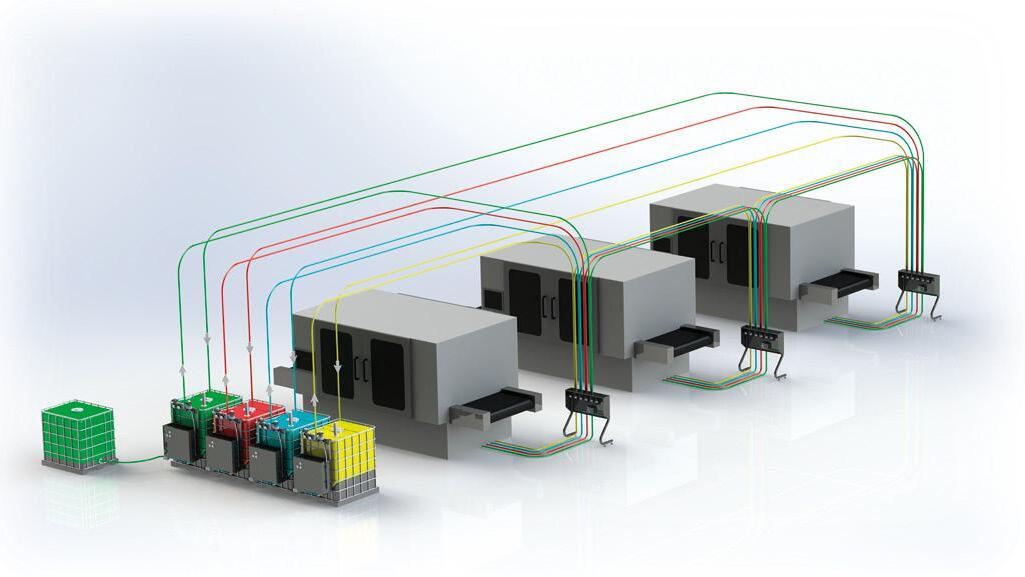


Gruppo valvole a servizio della stampante Valve unit for servicing the printer Cisterna di rifornimento Refilling tank Dispenser Dispenser EXPERIENCE AND INNOVATION I n k Refill Technology Refill your col ours Equipment and systems for suppling inks to digital ceramic printers ® VIBROTECH S.R.L. CERTECH GROUP Sede Legale: Via Racchetta, 2 int. 20 - C.P. 41049 Sassuolo (MO) Italy Sede Operativa: Via Don Pasquino Borghi, 4 - C.P. 42013 S. ANTONINO DI CASALGRANDE (RE) Italy Tel. +39 0536 823776 - Fax +39 0536 812009 - www.vibrotech.biz - info@vibrotech.biz
In memory of Piero Zanoni

Piero Zanoni passed away on 31 May at the age of 80. A visionary entrepreneur, he was one of the best known figures in the ceramic industry for more than half a century and the driving force behind Inter Ser since 1996 alongside his sons Gian Luca and Paolo.
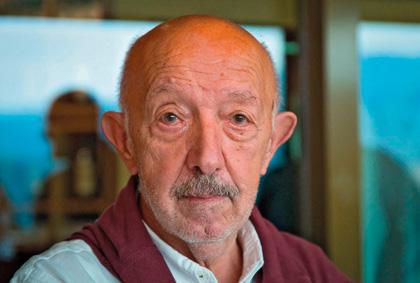
Piero Zanoni began his career in 1966 at Monter (Montedison group) in Novara, first as a kiln testing technician for the ceramic industry in Italy and abroad, then until 1978 as sales manager for the Sassuolo area and Eastern European countries. After working as the South America Area Manager for Sacmi, in 1980 he became a managing partner of Intercer in Milan and continued to work alongside customers in Latin America.
In 1996, he founded Inter Ser together with his two sons Gian Luca and Paolo, who have been running the company for the past decade. He always maintained close connections with South America and had a special fondness for Argentina and Colombia, where he was one of the first to promote Italian technology and continued to work with customers, who in the meantime had also become great friends.
A gentleman, a talented entrepreneur and a loving father, Piero Zanoni handled the company’s generational succession without difficulty. “He was always willing to give advice but never forced his ideas on us,” recall his sons Paolo and Gian Luca. “He always trusted us and left us to make important decisions within the company from the earliest years. He was our guide and role model, both in our private lives and at work, passing on values such as professionalism, reliability, honesty and resourcefulness, which he put into practice on a daily basis.”
A lover of bridge and a big fan of Torino Football Club, Piero Zanoni was passionate about his work and deeply devoted to his family – his wife Maura, his children Sandra, Annalisa, Gian Luca and Paolo, and his granddaughters Violante, Virginia, Margherita and Caterina.
Our editorial team offer their heartfelt condolences to his family and colleagues.
DURAVIT FRANCE INVESTS IN SACMI ROBOTGLAZE WITH ANTI-BACTERIAL KIT
Following the recent installation of a Sacmi AVI cell and dryer in the casting department, the French branch of the Duravit Group, a multinational producer of top quality sanitaryware, is now continuing its investments in
technological modernisation of the glazing department.
A latest-generation Sacmi-Gaiotto GA2000 robot has been installed at the Bischwiller factory in the Alsace region to replace a previous model, also supplied by Sacmi. This is the third GA2000 robot in operation at the production facility. The system will be equipped with the new anti-bac-
In ricordo di Piero Zanoni
Lo scorso 31 maggio è mancato Piero Zanoni, 80 anni, imprenditore illuminato, tra i protagonisti dell’industria ceramica per oltre mezzo secolo e dal 1996 anima di Inter Ser, insieme ai figli Gian Luca e Paolo. La carriera di Zanoni inizia nel 1966 alla Monter (gruppo Montedison) di Novara, prima come tecnico collaudatore di forni per l’industria ceramica in Italia e all’estero, poi, fino al 1978, come responsabile commerciale per il distretto di Sassuolo e i paesi dell’Est Europa. Dopo un’esperienza in Sacmi come Area Manager Sud America, dal 1980 è socio amministratore della Intercer di Milano per la quale continua a seguire la clientela in America Latina.
Nel 1996, insieme ai due figli, fonda la Inter Ser, tracciandone la via per poi affidarla a Gian Luca e Paolo che la guidano ormai da un decennio. Al Sud America è rimasto sempre legato, con una passione speciale per l’Argentina e la Colombia dove è stato tra i primi a promuovere la tecnologia Made in Italy e dove ha continuato a seguire i suoi clienti, divenuti nel frattempo anche grandi amici.
Gentiluomo d’altri tempi, grande imprenditore e padre, Piero Zanoni ha gestito il passaggio generazionale dell’azienda senza difficoltà: “Sempre pronto a dare consigli ma senza mai imporre le sue idee, si è sempre fidato di noi e ci ha lasciato prendere decisioni importanti in azienda sin dai primi anni”, raccontano i figli Paolo e Gian Luca. “Per noi è stato un esempio e una guida sia nella vita privata che sul lavoro, trasmettendoci valori come serietà, affidabilità, onestà ed intraprendenza che metteva in pratica quotidianamente”.
Amante del bridge e grande tifoso del Torino, la passione di Piero Zanoni, oltre al lavoro, era la sua famiglia: la moglie Maura, i figli Sandra, Annalisa, Gian Luca e Paolo e le nipoti Violante, Virginia, Margherita e Caterina.
A loro e ai collaboratori le condoglianze sincere della nostra redazione.
terial glaze application kit, a solution that uses digital application to ensure optimal uniformity and repeatability while minimising consumption of materials.
A second robot of the same type already in operation at Duravit France will also be equipped with the new anti-bacterial application. In technological terms, it represents an additional channel
in the well-established mass control system used for controlling the flow rate and quantity of applied glaze.
Due to reach full capacity over the coming months, the solution represents a further step forward in the relationship between the two companies and confirms Sacmi’s leadership in the field of robotised sanitaryware glazing.
16 CWR 152/2023
DURAVIT FRANCIA INVESTE SU SACMI ROBOTGLAZE CON KIT ANTIBATTERICO

Dopo la recente installazione di una cella AVI e di un essiccatoio Sacmi nel reparto di colaggio, la sede francese del Gruppo Duravit, multinazionale del sanitario di qualità e design, prosegue gli investimenti di ammodernamento tecnologico nel reparto smaltatura. A fare il proprio ingresso nel-
NEW ORDERS FOR ENEAGREEN TECHNOLOGY IN MEXICO AND BRAZIL
Two of the world’s largest tile manufacturers recently placed orders for ENEAgreen, the variable ventilation oil cooling technology for hydraulic presses produced by FIMO and distributed exclusively by Inter Ser in South America and most Asian countries.

Mexican group Lamosa has purchased 10 ENEAgreen systems for its facilities in Mexico and Peru, while Brazilian group Cedasa Incopisos has commissioned a further 19 for its factories in the Santa Gertrudes district, SP. ENEAgreen, which now boasts
SIGMADIAMANT READY FOR CERSAIE 2023
The Castellón-based company Sigmadiamant has chosen Cersaie again this year as the principal platform for showcasing its wide range of large-size tile polishing, honing and cutting tools, a field in which it has gained enormous expertise by working with leading ceramic tile manufacturers both in Spain and worldwide. Thanks to the intensive research activities of SigmaLab, the Castellón-based company is developing increasingly sustainable, high-performance solutions. In keeping with the latest trends in
la sede di Bischwiller, in Alsazia, è un robot GA2000 Sacmi-Gaiotto di ultima generazione, che andrà a sostituire un precedente robot, sempre di fornitura Sacmi, e che porterà a tre il numero dei GA2000 in esercizio presso l’unità produttiva. Il sistema sarà equipaggiato con il nuovo kit per l’applicazione dello smalto antibatterico che consente, attraverso la digitalizzazione dell’applicazione, di ottimizzare il trattamento garantendo la migliore uniformità, ripetibili-
more than 320 installations worldwide, is the latest sustainable version of ENEA technology, first developed back in the 1980s to replace water cooling with air cooling and superseded in the following decade by the higher performance ENEAplus model. With its variable ventilation technology, ENEAgreen reduces energy consumption by at least 30% and further improves performance of the system.
NUOVE CONFERME IN MESSICO E BRASILE PER LA TECNOLOGIA ENEAGREEN
Due tra i maggiori produttori mondiali di piastrelle hanno recente-
ceramic tile production, Sigmadiamant’s latest innovations include new tools for finishing decorated surfaces with digital application of materials (glazes, inks, microgrits, etc.), developed in cooperation with the leading frit and glaze producers.
The company has also recently expanded its SigmaTech range, a family of chemicals used to protect polished surfaces and produce special pieces.

SIGMADIAMANT PRONTA PER CERSAIE 2023
Anche nel 2023 Sigmadiamant ha scelto Cersaie come vetrina per
tà, ottimizzazione del consumo di materiale. Anche un secondo robot analogo, già operativo presso Duravit Francia, sarà equipaggiato con la nuova applicazione antibatterica che, sotto il profilo tecnologico, rappresenta un ulteriore “canale” del consolidato sistema “mass control” per il controllo della portata e quantità di smalto erogate.
A regime nei prossimi mesi, la soluzione rappresenta
mente siglato accordi di fornitura della tecnologia ENEAgreen, il sistema di raffreddamento a ventilazione variabile per olio nelle presse idrauliche realizzato da FIMO e commercializzato in esclusiva da Inter Ser in Sud America e nella maggior parte dei Paesi Asiatici.
Dieci ENEAgreen sono stati acquistati dal gruppo messicano Lamosa per i suoi stabilimenti in Messico e Perù, mentre altri 19 sono stati commissionati dal gruppo brasiliano Cedasa Incopisos per gli impianti situati nel distretto di Santa Gertrudes, SP.
ENEAgreen, che vanta oggi oltre 320 installazioni nel mondo, rappresenta l’evo-
un ulteriore step della collaborazione tra le due società e conferma la leadership tecnologica Sacmi nella smaltatura robotizzata del sanitario.
presentare la sua vasta gamma di utensili per la lucidatura, la levigatura e il taglio di piastrelle di grande formato, campo in cui l’azienda spagnola detiene un grande knowhow, acquisito anche grazie alla collaborazione con i grandi produttori di lastre ceramiche sia in Spagna che sui mercati internazionali. Grazie all’intensa attività di ricerca del SigmaLab, l’azienda di Castellon sta sviluppando soluzioni sempre più performanti e orientate alla sostenibilità. In linea con le tendenze più attuali della produzione ceramica, Sigmadiamant propone, tra le ultime novità, nuovi utensili idonei alla finitura
luzione in chiave sostenibile della tecnologia ENEA, nata negli anni ’80 per sostituire il raffreddamento ad acqua con quello ad aria e potenziata nel decennio successivo con la versione più performante ENEAplus. ENEAgreen, a ventilazione variabile, consente di ridurre di almeno il 30% il consumo di energia, oltre a migliorare ulteriormente le prestazioni del sistema.
di superfici decorate con applicazione digitale di materie (smalti, inchiostri, micrograniglie, ecc.), sviluppati interagendo con i principali produttori di fritte e smalti.
L’azienda ha recentemente ampliato anche la gamma SigmaTech, una famiglia di prodotti chimici per la protezione dei materiali lucidati e la fabbricazione di pezzi speciali.
world news
17 CWR 152/2023
WHERE GROWING YOUR BUSINESS IS OUR PURPOSE.
Joe Lundgren is a globally recognized product and marketing expert in the ceramic and stone worldwide markets. His specialty is Business Development, Product Management, and Marketing.
Joe has developed his expertise in strategic planning, new product development, and marketing strategy for North America during his 27 year career at Dal-Tile, a subsidiary of Mohawk Industries.

Joe has extensive experience in multiple sales channels including distribution and Home Centers.
Additionally, Joe represents the Tile Council of North America (TCNA) for its testing laboratories, which has Joe at the epicenter of the industry for all new initiatives.
Please contact Joe Lundgren for a free consultation proposal!
NOVAREF MAKES NEW INVESTMENTS
Novaref, a Verona-based manufacturer of refractory rollers for the ceramic industry, is pushing ahead with its investment programme. The projects planned for 2023 are aimed at increasing production capacity (already more than 500,000 large rollers per year) and further improving the efficiency of the production department following the start-up in the last two years of a new fully automated extrusion plant which has brought an improvement in terms of roller linearity. This year’s first investment was completed in June and involved the installation of a new roller slotting and turning centre, which will allow for even higher precision machining with shorter cycle times. An integrated station will allow for the production of corrective rollers of any length and taper for correcting the misalignment of tiles as they proceed through the kiln firing zone.

A kiln revamp will also be completed by next autumn, involving modification of the combustion system and a consequent increase in thermal output allowing for high temperatures and improved temperature control. This is expected to lead to an increased output of high-end rollers, which guarantee consistent product quality over time thanks to their high technical performance.
since 1987 and has a particularly strong presence in Italy, Spain and the Americas where its high-performance rollers are used by leading ceramic tile and slab manufacturers.
NUOVI INVESTIMENTI ALLA NOVAREF
Continuano gli investimenti di Novaref, azienda veronese produttrice di rulli refrattari per l’industria ceramica. Gli interventi programmati per il 2023 sono finalizzati ad incrementare la capacità produttiva (già superiore ai 500.000 pezzi/anno sui rulli di grandi dimensioni) e ad efficientare ulteriormente il reparto produttivo, dove nell’ultimo biennio era già stato avviato il nuovo impianto di estrusione completamente automatizzato, che ha migliorato la linearità dei rulli prodotti.
giungere temperature elevate ed un miglior controllo delle stesse. Il risultato atteso è una maggiore produzione dei rulli di più alta gamma, che, grazie alle performance tecniche elevate, garantiscono una qualità costante del prodotto nel tempo.
Il programma di investimenti di Novaref proseguirà poi nei prossimi anni: già allo studio l’ampliamento del reparto controllo e taglio e una rivisitazione del layout impiantistico di fine linea per efficientare la produzione.
Novaref opera dal 1987 sui principali mercati internazionali e vanta una forte presenza soprattutto in Italia, Spagna e nelle Americhe, dove i suoi rulli più performanti sono utilizzati dai maggiori produttori di piastrelle e lastre ceramiche.
+1.214.641.7773
JOSEPHLUNDGRENCONSULTING.COM
Novaref’s investment programme is set to continue over the next few years. Projects under consideration include expansion of the control and cutting department and reorganisation of the end-of-line plant layout to improve production efficiency.
Novaref has been operating in major international markets


Il primo intervento di quest’anno, già completato nel mese di giugno, ha riguardato l’installazione di un nuovo centro di asolatura e tornitura rulli che consentirà lavorazioni ancora più precise ed accurate con tempi ciclo ridotti; una stazione integrata permetterà la produzione di rulli correttori, di qualsiasi lunghezza e conicità, per modificare eventuali disallineamenti delle piastrelle durante l’avanzamento nella zona di cottura dei forni.
Entro il prossimo autunno si concluderà anche il revamping di un forno di cottura, con la modifica dell’impianto di combustione e conseguente aumento della potenza termica che consentiranno di rag-
ADVERTISING world news






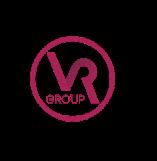


SDR CERAMICA STARTS UP A NEW COEL SHUTTLE KILN
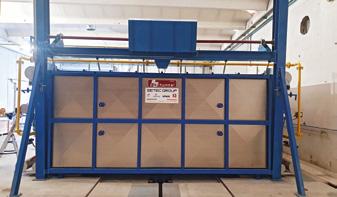
As part of plans to modernise its factory in Civita Castellana (Viterbo), Italian sanitaryware manufacturer SDR Ceramiche has installed a new shuttle kiln designed and built by Setec Group member company Coel. The order follows SDR’s adoption of a Rapid Dry model drying machine supplied by Setec and has the same goal of reducing consumption while increasing productivity. The new kiln is capable of firing and refiring 300-350 pieces per cycle and stands out for its low levels of energy consumption as well as the reliability and quality of the finished products. These levels of performance are largely achieved by the patented burner, which can also operate with preheated air. The burner not only reduces the quantity of air introduced (thereby minimising consumption) but also ensures optimal control of the kiln atmosphere, which in turn brings bene-
GEMICA AND KMK GRANIT RELAUNCH NEW SPICA
The acquisition of Civita Castellana-based ceramic sanitaryware body producer Spica was completed on 3 May. The company was sold by Imerys Ceramics Italy to its agent and longstanding partner Gemica and to Kmk Granit, a Czech company specialising in the extraction and processing of minerals including feldspar for the ceramic industry. Renamed New Spica, the company is now headed by Gemica’s CEO Ermanno Gagliardi, who aims to expand the business into the tableware, clay roof tile, ornamentalware and ceramic stove sectors, segments where Gemica has forty years’ experience as a supplier of glazes, raw materials, bodies and auxiliaries.
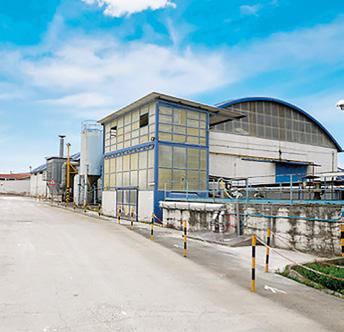


The company will continue to
fits in terms of glaze quality. Coeltunnel, part of the Setec Group since 2015, is a long-running company that has been designing and building tunnel and shuttle kilns for the ceramic industry for over 50 years. Thanks to its in-depth technological knowledge of the process, Coel is able to deliver cutting-edge ceramic firing solutions together with the expertise and equipment necessary to ensure high-quality, cost-effective production.
AVVIATO ALLA SDR CERAMICA IL NUOVO FORNO INTERMITTENTE COEL
Prosegue la collaborazione virtuosa tra Setec Group e SDR Ceramiche, importante azienda italiana produttrice di sanitari. Nell’ambito del programma di ristrutturazione dell’impianto di Civita Castellana (Viterbo), SDR ha scelto il nuovo forno intermittente progettato e costruito da Coel, azienda del Gruppo Setec. La fornitura della macchina termica se-
gue quella realizzata da Setec relativamente all’impianto di essiccazione Rapid Dry e conferma l’obiettivo, anche in questo caso, di garantire minori consumi aumentando al contempo le rese produttive.
Il nuovo forno consente la cottura e la ricottura di 300/350 pezzi/ciclo e, oltre che per il contenimento dei consumi energetici, si distingue per l’affidabilità e la qualità dei prodotti ottenuti. Tali prestazioni sono possibili soprattutto grazie al bruciatore brevettato e funzionante anche con aria preriscaldata. Quest’ultimo, infatti, non solo permette di ridurre la quantità d’aria introdotta (minimizzando appunto i consumi), ma garantisce anche un controllo ottimale dell’atmosfera
del forno con conseguenti benefici sulla qualità dello smalto. Coeltunnel, parte del Gruppo Setec dal 2015, è un’azienda storica che da oltre 50 anni progetta e produce forni a tunnel e intermittenti per l’industria ceramica. Grazie alla profonda conoscenza tecnologica del processo, Coel è in grado di fornire non solo le più moderne soluzioni per la cottura ceramica, ma anche il know-how e le attrezzature necessarie per assicurare una produzione di qualità ed economica
cooperate with Imerys in the future. To guarantee the same level of product quality for its longstanding customers in the Italian sanitaryware district, the French multinational will not only continue to supply New Spica with its complete portfolio of sanitaryware raw materials (kaolin, ball clay, chamotte, wollastonite, pegmatite and kiln refractories), but will also manage its storage facility.
GEMICA E KMK GRANIT RILANCIANO NEW SPICA
Si è conclusa il 3 maggio scorso l’operazione di acquisizione della Spica di Civita Castellana, attiva nella produzione di impasti per sanitari. La società è stata infatti ceduta da Imerys Ceramics Italy al suo agente e storico partner Gemica, e a Kmk Granit, re-
altà ceca specializzata nell’estrazione e lavorazione dei minerali, tra cui il feldspato destinato al settore ceramico.
Rinominata “New Spica”, l’azienda è ora guidata da Ermanno Gagliardi, CEO di Gemica, che punta ad espanderne l’attività anche ai settori della stoviglieria, delle tegole in laterizio, dell’oggettistica e delle stufe in ceramica, segmenti in cui Gemica vanta un’esperienza quarantennale come fornitore di smalti, materie prime, impasti e ausiliari. La collaborazione con Imerys proseguirà anche nei prossimi anni. Per garantire la stessa qualità di prodotti destinati alla clientela storica del distretto italiano del sanitario, la multinaziona-
le francese non solo continuerà a fornire a New Spica il suo portafoglio completo di materie prime per sanitari (caolini, ball clay, chamotte, wollastonite, pegmatite e refrattari per il forno), ma ne gestirà anche l’impianto di stoccaggio
20 CWR 152/2023
KERAMISCHER OFENBAU WINS LOWER SAXONY FOREIGN TRADE AWARD
Keramischer OFENBAU (KOG), a leading German manufacturer of high-efficiency ceramic kilns, has been honoured with the Lower Saxony Foreign Trade Award for its excellent performance in international markets.
Olaf Lies, the regional Minister for Economics, Transport, Building and Digitalisation, presented the award to the company’s managing directors Thomas Alten and Dave McGuinness during the Hannover Messe Foreign Trade Day in April.

Keramischer OFENBAU prevailed against the other candidates due to its outstanding performance in a number of foreign markets, largely as a result of the high energy efficiency of its range of gas, electric and 100% hydrogen-ready kilns for firing tiles, sanitaryware, tableware and technical
ceramics. Keramischer OFENBAU has invested constantly in innovation in recent years to improve the level of excellence of its solutions, especially EnerViT technology which allows for energy savings of up to 50%.
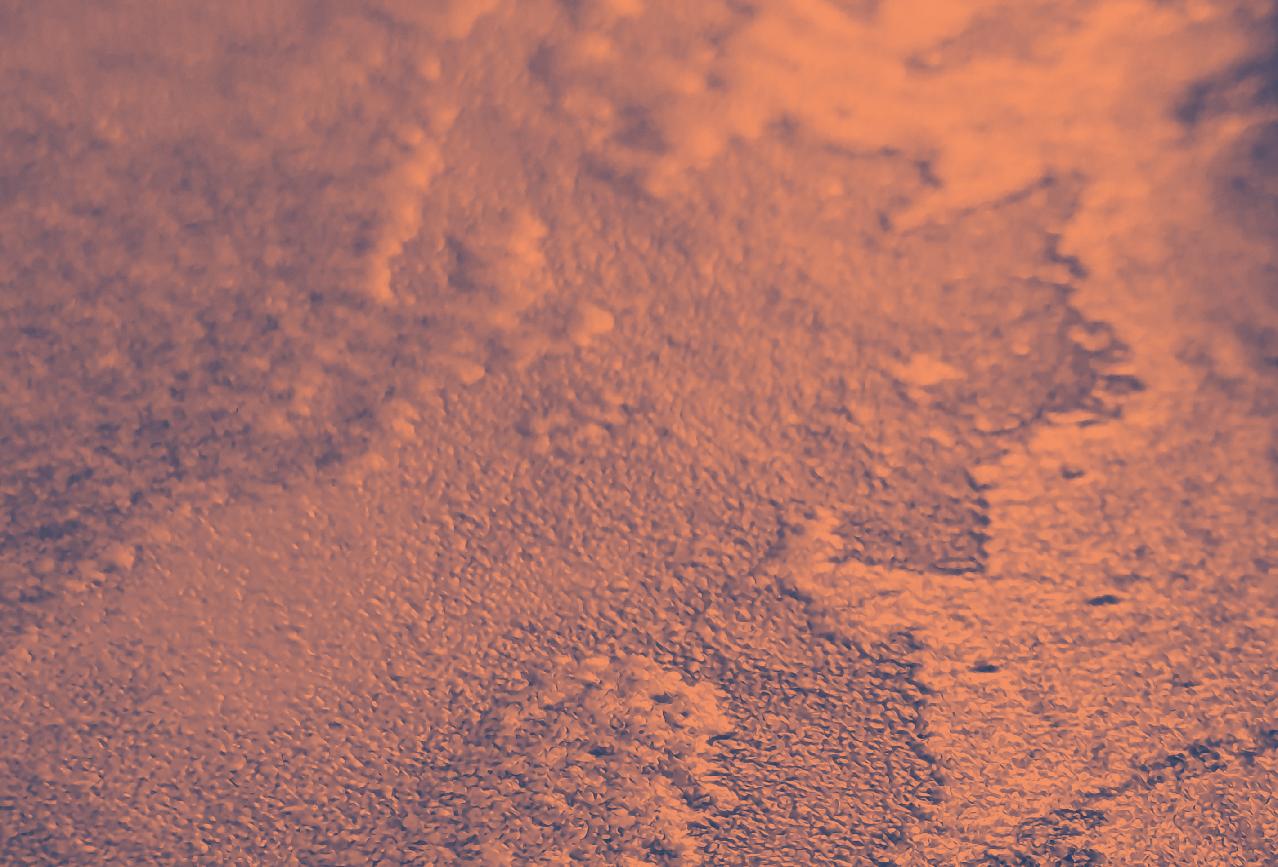
Despite the challenging macroeconomic environment, the company has not only maintained its global position but has even succeeded in improving it, overcoming supply chain difficulties and proving itself to be a strong and reliable partner.
A KERAMISCHER OFENBAU IL PREMIO PER IL COMMERCIO ESTERO DELLA BASSA SASSONIA
Keramischer OFENBAU (KOG), tra i principali produttori tedeschi di forni per ceramica ad alta efficienza, è stato insignito del premio per il commercio estero della Bassa Sassonia per le sue eccel-
lenti performance sui mercati internazionali.
Il riconoscimento è stato consegnato ad aprile dal Ministro regionale dell’Economia, Trasporti, Edilizia e Digitalizzazione, Olaf Lies, durante il Foreign Trade Day di Hannover Messe: a riceverlo Thomas Alten e Dave McGuinness, amministratori delegati della società.
Keramischer OFENBAU si è distinto rispetto agli altri candidati per i brillanti risultati sui diversi mercati esteri, ottenuti soprattutto grazie all’alta efficienza energetica dei suoi forni per la cottura di piastrelle, sanitari, stoviglieria e ceramica
tecnica, una gamma che comprende diverse tipologie di alimentazione: forni a gas, elettrici e 100% hydrogen-ready. Negli ultimi anni, Keramischer OFENBAU ha investito costantemente in innovazione, aumentando l’eccellenza delle proprie soluzioni a partire dalla tecnologia EnerViT che consente un risparmio di energia fino al 50%. Nonostante il difficile contesto macroeconomico, l’azienda è riuscita non solo a mantenere il suo posizionamento a livello globale, ma addirittura a migliorarlo, superando le difficoltà della catena di fornitura e rivelandosi un partner forte e affidabile.
ceramics.lamberti.com
A
complete range of media for micro grits.
The
right additive is key to success of materic and special aesthetic effects.
Binder effect Wide particle size range Application homogeneity Anti hydro repellence effect Right rheology world news
ADVERTISING
VITRA INVESTS IN RENEWABLE ENERGY
Eczacıbaşı Building Products has announced the installation of a giant solar array on the roof of its sanitaryware factory at the VitrA Production Campus in Bozüyük (Bilecik) for an investment of 45 million Turkish lira (more than €1.7 billion). The system has an installed capacity of 4.29 MWp generated by 8,096 panels and 40 inverters and is expected to produce 5.4 million kWh of energy in 2023.

According to CEO Özgen Özkan, EBP intends to extend its photovoltaic coverage to all of its sites by the end of 2025 (112,000 square metres in total) to reach a total installed capacity of 19.7 MWp, which will enable it to meet approximately 30% of its annual electricity needs. The remaining
70% will be met by I-REC certified green electricity, which the company began purchasing in 2022.
“The project demonstrates our commitment to reducing our carbon footprint,” said Özkan, who hopes that this will serve as a positive example for other companies in the industry.
Photovoltaic systems have also been installed at EBP outlets in Ankara, Bodrum and Suadiye.
“The next step will involve the tap and concealed cistern factories,” added the manager. The group’s commitment to sustainability will not end with the use of green energy, he explained, but will continue through planned investments in innovative technologies and energy-efficient practices in existing production processes.
In 2022, EBP compiled its first sustainability report as an independent organisation within the Ec-
zacıbaşı Group. This report was indexed by the Global Reporting Initiative (GRI) and aligned with the parameters of the World Economic Forum (WEF).
VITRA INVESTE IN ENERGIA RINNOVABILE
Con un investimento pari a 45 milioni di lire turche (oltre €1,7 miliardi), Eczacıbaşı Building Products ha annunciato l’installazione di un mega impianto solare sul tetto dello stabilimento per la produzione di sanitari del VitrA Production Campus di Bozüyük (Bilecik). L’impianto ha una capacità installata di ben 4,29 MWp, generata da 8.096 pannelli e 40 inverter che nel 2023 dovrebbero produrre 5,4 milioni di kWh di energia.
Secondo il CEO di EBP Özgen Özkan, l’azienda intende estendere la copertura di impianti fotovoltaici a tutte le sue sedi entro la fine del 2025 (112mila mq in totale), raggiungendo una capacità complessiva installata pari a 19,7 MWp che consentirà di soddisfare circa il 30% del fabbisogno annuale di ener-

CHINESE COLOSSUS NEW PEARL PURCHASES FOUR SACMI CONTINUA+ LINES
Founded in 1993 and now one of the global ceramic industry’s top players with an output capacity of over 200 million sqm/ year, the Chinese colossus New Pearl has purchased four new Sacmi Continua+ lines for installation at its plant in Sanshui, Guangdong province.
A longstanding Sacmi client in the field of forming technology, New Pearl chose two PCR 2000’s and two PCR 2180’s for this latest investment in the slab segment. The second of these is capable of producing up to
21,500 sqm/day of fired and rectified surfaces with widths of up to 1800 mm.
The four lines supplied by Sacmi are integrated with cutting machines and guarantee outstanding productivity, fast changeovers and ultra-flexible management of production flows for both slabs and sub-sizes.
Continua+ is also competitive in terms of sustainability and process efficiency, with less than 1.5% waste regardless of size and a specific consumption of no more than 0.05 kWh/sqm. Further advantages include its greatly reduced hydraulic oil requirements (90% less than on a discontinuous press) and the
fact that it does not require foundations, allowing it to be installed even on service floors or on the second floor of buildings. The new lines have already been installed and tested in close coordination with the technical team of the local branch Sacmi Nanhai and are expected to be fully operational by the end of 2023, further strengthening New Pearl’s leadership and competitiveness in the largesize tile segment.
This recent installation brings the number of Continua+ lines sold by Sacmi worldwide to more than 170, including around 40 installed by leading market players in China
gia elettrica. Il rimanente 70% rimanente sarà coperto da elettricità verde certificata I-REC che l’azienda aveva già iniziato ad acquistare nel 2022.
“Il progetto dimostra il nostro impegno nella riduzione dell’impronta di carbonio”, ha affermato Özkan, auspicando di poter rappresentare un esempio positivo anche per le altre aziende del settore.
Ad oggi, impianti fotovoltaici sono già stati installati anche nei punti vendita EBP di Ankara, Bodrum e Suadiye e “il prossimo step vedrà coinvolti gli stabilimenti per la produzione di rubinetteria e cassette a incasso”, ha aggiunto il manager, sottolineando che l’impegno del gruppo in termini di sostenibilità non si esaurirà con l’utilizzo di energia verde, ma continuerà attraverso investimenti già programmati in tecnologie innovative e pratiche di efficienza energetica nei processi produttivi esistenti.
Nel 2022, EBP ha redatto il suo primo bilancio di sostenibilità come organizzazione indipendente all’interno del gruppo Eczacıbaşı, relazione indicizzata dal Global Reporting Initiative (GRI) e allineata ai parametri del World Economic Forum (WEF).
This important order from New Pearl was announced shortly before Uniceramics Expo 2023 (held in Foshan from 30 May to 2 June), where Sacmi was present with a large exhibition space to showcase its range of technologies and services. It also displayed examples of slabs produced using Continua+ technology and digitally glazed and/or decorated on the Sacmi Deep Digital line.
Sacmi maintains a presence in the strategic Chinese market through Sacmi Nanhai, which has been operating for thirty years with a staff of 350 people.
22 CWR 152/2023
QUATTRO LINEE SACMI CONTINUA+ PER IL COLOSSO CINESE NEW PEARL
Sul mercato ceramico dal 1993, e tra i top player globali con una capacità produttiva di oltre 200 milioni di mq/anno, il colosso cinese New Pearl ha acquistato 4 nuove linee Continua+ da installare nello stabilimento di Sanshui, nel Guangdong.

Da sempre partner primario di Sacmi nelle tecnologie di formatura, per questo investimento sul segmento lastre New Pearl ha scelto 2 PCR 2000 e 2 PCR 2180, quest’ultima in grado di lavorare fino a 21.500 mq/giorno di superfici in formati sino a 1800 mm di larghezza, cotti e rettificati. Le
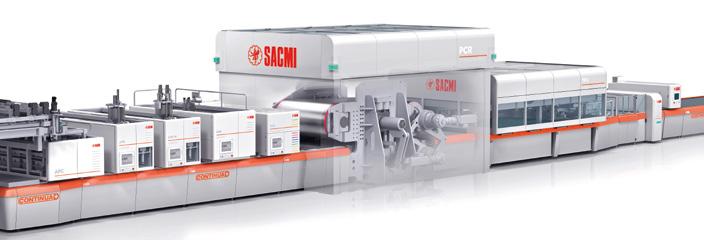

quattro linee, fornite da Sacmi integrate con le macchine di taglio, garantiscono un’elevata produttività, rapidità nel changeover e massima flessibilità nella gestione dei flussi produttivi di lastre e sottoformati.
Continua+ è inoltre competitiva sotto il profilo della sostenibilità e dell’efficienza di processo, grazie a scarti inferiori all’1,5% indipendentemente dal formato e un consumo specifico che non supera i 0,05 kWh/mq. Vantaggi che si sommano al ridotto fabbisogno di olio idraulico – inferiore del 90% rispetto a una pressa discontinua
– e all’assenza di fondazioni, che ne rendono possibile l’installazione anche su piani di servizio o al secondo piano degli edifici. Le nuove linee, già installate e collaudate in stretto coordinamento con il team tecnico della filiale locale Sacmi Nanhai, entreranno a regime entro il 2023, rafforzando ulteriormente la leadership e la competitività di New Pearl nel settore dei grandi formati. Con questa recente installazione salgono a oltre 170 le linee Continua+ vendute da Sacmi nel mondo, di cui una quarantina operative in Cina presso
i primari player del mercato L’annuncio dell’importante commessa per New Pearl è stato dato alla vigilia della fiera Uniceramics Expo 2023 (a Foshan dal 30 maggio al 2 giugno), dove Sacmi ha partecipato con un ampio spazio espositivo per mostrare la sua offerta di tecnologie e servizi. In mostra anche alcune lastre realizzate con Continua+ e smaltate e/o decorate digitalmente sulla linea Sacmi Deep Digital. Il presidio dello strategico mercato cinese è garantito da Sacmi Nanhai, attiva ormai da trent’anni con uno staff di 350 persone.
ONI machines donatonigroup.com 5
axis. ocesses. Complete oduction process ocessing times e and small world news ADVERTISING
interpolated
POPPI CLEMENTINO TAKES PART IN UNICERAMICS EXPO
Poppi Clementino participated this year in Uniceramics Expo, the ceramic industry technology exhibition held in Foshan, China from 30 May to 2 June.
China is an important market for the Reggio Emilia-based company specialising in energy saving and energy recovery plants due to the sheer size of the market and the current popularity of factory conversion and modernisation processes aimed at achieving greater environmental sustainability. This makes the market highly receptive to Poppi Clementino’s technological offerings, which include smart solutions for reducing energy consumption and CO2 emissions by improving process efficiency.
Backed by its many years of experience in the ceramic industry,
SYSTEM ELECTRONICS STEPS UP THE PACE OF INNOVATION ON MODULA

As part of its focus on customisation, System Electronics – a System Ceramics company and now a brand of Coesia Group – has rolled out a new project for Modula that will further raise the level of technological innovation of its logistics solutions. The system consists of an industrial touchscreen PC housing the operator interface together with in-machine control electronics that execute all commands for automated warehouse operations. Tailored to the specific needs of Modula, the solution offers numerous advantages in terms of performance and efficiency as well as an excellent price/performance ratio. As a key technology partner of Modula, System Electronics has designed all the client’s electronics and produces the components and HMIs (Human-Machine Interfaces) as well as an LED display
Poppi Clementino develops complete, integrated systems that ensure consistently high levels of energy recovery. Each plant is customised to the company’s specific needs and designed for maximum flexibility. The recovered energy can be conveyed fully automatically to the user devices that are best able to receive it at that time, in other words excluding machines that are temporarily paused or switched off. The resultant cost savings also allow for a rapid return on the investment.
POPPI CLEMENTINO A UNICERAMICS EXPO
Poppi Clementino ha partecipato quest’anno ad Uniceramics Expo, la fiera dedicata alle tecnologie per l’industria ceramica svoltasi a Foshan, in Cina, dal 30 maggio al 2 giugno. Per l’azienda reggiana, specializzata nella realizzazione di


impianti per il risparmio e recupero energetico, la Cina riveste un’importanza strategica, sia per le dimensioni del mercato, sia per l’attuale processo di trasformazione e ammodernamento delle fabbriche anche in chiave di una maggiore sostenibilità ambientale. Un mercato quindi ricettivo alla proposta tecnologica di Poppi Clementino, che propone soluzioni smart per ridurre i consumi energetici e le emissioni di CO2, efficientando il processo.
Forte di un’esperienza pluriennale nel settore ceramico, Poppi Clementino sviluppa sistemi comple-
ti e integrati che assicurano un recupero energetico costante e ottimale. Ogni impianto è personalizzato sulle specifiche esigenze dell’azienda e progettato per essere flessibile: in maniera totalmente automatica, l’energia recuperata può essere convogliata verso le utenze che in quel momento possono riceverla nel modo più adeguato (escludendo quindi macchine temporaneamente in pausa o spente).
L’importante risparmio economico che ne consegue permette inoltre un veloce rientro dell’investimento.
that meets specific criteria for operation in any industrial context. The project demonstrates System Electronics’ ability to add value to production processes as well as its commitment to working closely with customers to achieve their automation goals.
SYSTEM ELECTRONICS ACCELERA L’INNOVAZIONE DI MODULA


Fortemente orientata alla customizzazione, System Electronics, azienda di System Ceramics e oggi brand di Coesia, ha implementato per Modula un nuovo progetto che spingerà l’innovazione tecnologica delle sue soluzioni logistiche. La soluzione è basata su un PC Industriale touch screen che ospita l’interfaccia operatore e un’elettronica di controllo all’interno della macchina che esegue tutti i comandi per le operazioni del magazzino automatico. Cucita
su misura sulle esigenze di Modula, la soluzione presenta numerosi vantaggi in termini prestazionali e di efficienza, oltre a un ottimo rapporto qualità/prezzo.
Partner tecnologico chiave di Modula, System Electronics ha progettato per il cliente tutta l’elettronica e ne produce la componentistica, oltre all’HMi (Human-Machine Interfaces) e un display Led studiato per rispettare alcuni criteri specifici per poter lavorare in qual-
siasi contesto industriale. Il progetto conferma la capacità di System Electronics di aggiungere valore ai processi produttivi nonché il suo forte orientamento al cliente con cui collabora fattivamente per il raggiungimento degli obiettivi di automazione.
24 CWR 152/2023 world news





AVM IS THE WORLD’S BEST-SELLING CASTING CELL
With a total of 260 machines sold worldwide, AVM is the best selling Sacmi RobotCasting solution in today’s sanitaryware market. Renowned for its efficiency, ruggedness and versatility in handling the casting process, it also has the advantages of a modular platform centred around the mould and allows maximum freedom in managing automation and auxiliary equipment.
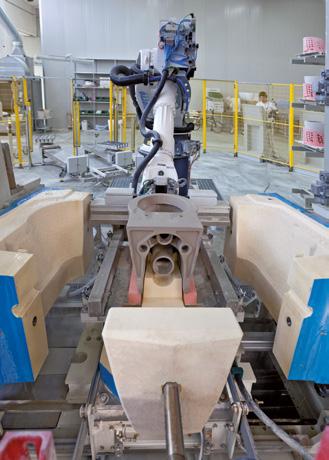
Ideal for the production of complex WCs, the AVM machines work in synergy with the robot, which performs all the operations of mould assembly and demoulding, piece transfer to the pre-dryer and piece loading onto cars for transfer to the subsequent processes. The entire cycle is performed in programmable stages to allow for maximum customisation of all production variables and shorter product changeover times.
The latest milestone of 260 units sold worldwide demonstrates the success of Sacmi’s strategy of developing high-pressure
ANFFECC WARNS OF RELOCATION RISK
The Annual General Meeting of ANFFECC, the Spanish ceramic frit, glaze and colour producers’ association, was held in Castellón on 9 June. The introductory speech by Chairman Fernando Fabra and the ensuing debate focused on the difficult situation facing the sector, which is being severely tested by the effects of the energy crisis and the lack of government support - especially in terms of loss of competitiveness and falling demand – as well as the fallout from the diplomatic crisis between Spain

casting solutions equipped with state-of-the-art automation and capable of being customised and configured according to individual needs. What makes this solution different is its ability to increase the level of automation of the sanitaryware production process, guaranteeing quality and a shorter time-to-market even when manufacturing the most complex articles.
Another important advantage of the AVM is its ability to provide a complete modelling service (D4P, digital for product). By using the most modern digital technology (“by tooling” mould production using a numerically controlled CNC cell), it offers sanitaryware manufacturers a complete product development service, including hydraulic functionality tests.
È AVM LA CELLA DI COLAGGIO PIÙ VENDUTA NEL MONDO
Con 260 macchine vendute in tutto il mondo, AVM è la soluzione Sacmi RobotCasting oggi più venduta sul mercato del sanitario, premiata per le doti di efficienza, robustezza e versatilità nella ge-
stione del processo di colaggio, a cui si aggiungono i vantaggi di una piattaforma modulare che mette al centro lo stampo e consente la massima libertà nella gestione dell’automazione e degli asservimenti.
Ideali per la produzione di vasi complessi, le macchine AVM funzionano in sinergia con il robot, che procede a tutte le operazioni di montaggio dello stampo, sformatura, consegna del pezzo al pre-dryer e carico su carri per il trasporto alle lavorazioni successive. L’intero ciclo avviene a fasi programmabili, per consentire la massima personalizzazione di tutte le variabili produttive, riducendo i tempi di cambio prodotto.
Il traguardo delle 260 soluzioni vendute premia la strategia Sacmi mirata allo sviluppo di soluzioni per il colaggio in alta pressione che si avvalgono di automazioni di ultima generazione, con ampie possibilità di personalizzazione e configurabilità in base alle singole esigenze. A fare la differenza è la possibilità di ripensare il pro-
cesso produttivo del sanitario nella direzione dell’automazione, con garanzia di qualità e riduzione del time-to-market anche nella produzione degli articoli più complessi. Altrettanto premiante è anche la capacità di fornire un servizio di modellazione completa – D4P, digital for product – che, anche attraverso le più moderne tecniche digitali (produzione stampo by tooling, mediante cella CNC a controllo numerico), consente di offrire al produttore di sanitario uno sviluppo prodotto completo, compresi test di funzionalità idraulica.
and Algeria.
“So far our companies have succeeded in overcoming this complicated situation thanks to their resilience and leadership,” said Fabra. “However, the progressive loss of competitiveness within Spain, the sharp decline in domestic demand and the consequent contraction in our production are all clearly visible factors, especially when faced by competitor countries that have received support from their governments.”
As a result, “the multinationals in our sector are considering major changes in strategy that may include relocating their
production activities,” continued Fabra. “This is an undesirable outcome that would have negative repercussions for the district’s economy, as the public administration has repeatedly been warned.”
During the meeting, ANFFECC’s leaders also presented the activities carried out during the year, focusing in particular on the numerous decarbonisation pro-
jects in which the sector is involved, including Orange Bat and the ceramic cluster pilot project. This continuous, con-
26 CWR 152/2023
crete commitment on the part of sector companies has resulted in a 45% reduction in emissions since 2007.
ANFFECC METTE IN GUARDIA SUL RISCHIO DELOCALIZZAZIONE
Si è svolta a Castellón il 9 giugno scorso l’assemblea generale annuale di ANFFECC, l’associazione dei produttori spagnoli di fritte, smalti e colori ceramici. Al centro del dibattito e della relazione introduttiva del Presiden-
CERAMICA CIELO REPORTS STRONG GROWTH
Ceramica Cielo, a leading Italian manufacturer of designer ceramic sanitaryware based in Civita Castellana, posted revenues of €37.5 million in 2022, bringing the company’s total growth over the last three years to 38% and enabling it to maintain its strong market position. Ceramica Cielo is 100% owned by Italian Bathroom Design (IBD), a company that in turn is majority controlled by the Mittel Group.
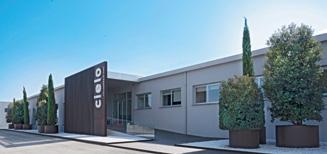

“Research and selection of the best materials, high quality standards and attention to detail are the guiding principles that have enabled us to achieve this important result,” explains Dimitri Mei, CEO of Ceramica Cielo.
“Our goal now is to expand our foreign sales, which currently account for about 40% of revenues, with special attention to markets in Central and Northern Europe and South America.”
The company also aims to establish a stronger presence in the contract furnishing market, adds Mei: “The contract segment is an essential area of business for our development. Although we do not yet have a significant presence in this segment, the sheer breadth of our portfolio
te Fernando Fabra, l’analisi della difficile situazione in cui si trova il comparto, messo a dura prova dagli effetti della crisi energetica e dal mancato sostegno del Governo – in primis perdita di competitività e calo della domanda -, nonché penalizzato dalle conseguenze della crisi diplomatica tra Spagna e Algeria.
“Questa complicata situazione –ha affermato Fabra - è stata affrontata finora grazie alla resilienza e alla leadership delle nostre imprese, ma la progressiva perdita di competitività sul territorio spa-
gnolo, il forte calo della domanda interna e la conseguente contrazione della nostra produzione sono evidenti, soprattutto di fronte alla minaccia dei paesi concorrenti che invece sono stati sostenuti dai loro Governi”.
Alla luce di ciò, ha puntualizzato Fabra: “le multinazionali del nostro comparto stanno studiando cambiamenti importanti di strategia, che passano anche per una delocalizzazione della produzione, una scelta indesiderata che, come fatto più volte presente all’Amministrazione pubblica, avrà riper-
cussioni negative sull’economia del distretto”.
for both housing and hospitality allows us to handle projects all over the world and makes Ceramica Cielo an important partner for real estate developers. Our goal is for this segment to account for 30% of our revenues over the next three years.”
Thanks to the sophisticated and unique style created by artistic directors Andrea Parisio and Giuseppe Pezzano, Cielo products are used all over the world and have won major international design awards.
“We’re delighted with the performance of Ceramica Cielo,” concludes Dimitri Mei “Despite significant headwinds over the past two years, including soaring energy costs, unstable geopolitical conditions and severe inflation, the company has demonstrated strong structural resilience that allows us to look to the future with optimism.”
CRESCITA ESPONENZIALE PER CERAMICA CIELO
Una crescita esponenziale quella di Ceramica Cielo, azienda leader nella produzione di ceramica per l’arredo bagno di design, che ha chiuso il 2022 con un fatturato di 37,5 milioni di euro confermando il suo posizionamento distintivo nel settore. Per il produttore di Civita Ca-
stellana (Viterbo), parte di Italian Bathroom Design (Ibd) controllata dal Gruppo Mittel, il risultato conferma un incremento del 38% negli ultimi 3 anni.
“La ricerca e la selezione dei migliori materiali, alti standard qualitativi e la cura del dettaglio sono gli elementi che ci hanno guidati fino a qui e ci hanno permesso di raggiungere questo importante risultato” spiega Dimitri Mei, Amministratore Delegato di Ceramica Cielo. “L’obiettivo ora è rafforzare la distribuzione all’estero che attualmente rappresenta circa il 40% dei ricavi, puntando sui mercati del Centro e Nord Europa e del Sud America”.
Ulteriore obiettivo dell’azienda è un ingresso più deciso anche nel contract, come conferma Mei: “Per il nostro percorso di sviluppo il segmento contract è una leva imprescindibile. Al momento non abbiamo ancora una presenza rilevante ma grazie all’ampiezza della nostra offerta - sia in ambito housing che hotellerie
- Ceramica Cielo si propone come partner importante per gli sviluppatori immobiliari, essendo in grado di coprire progetti in tutto il mondo. L’obiettivo è fare in modo che questo comparto rappresenti nei prossimi
Nel corso dell’assemblea, i vertici di ANFFECC hanno illustrato anche le attività svolte nel corso dell’anno, con un focus particolare sui numerosi progetti di decarbonizzazione in cui il settore è coinvolto, tra cui Orange Bat e il progetto pilota del cluster ceramico. Un impegno concreto da parte delle aziende del comparto, che si conferma ormai anno dopo anno, e che dal 2007 ad oggi ha consentito di ridurre le emissioni del 45%. tre anni il 30% dei ricavi”. Grazie allo stile sofisticato e unico sviluppato dai Direttori Artistici Andrea Parisio e Giuseppe Pezzano, i prodotti Cielo vantano numerose referenze in tutto il mondo e importanti riconoscimenti internazionali ottenuti in ambito design.
“Siamo estremamente soddisfatti della performance di Ceramica Cielo - conclude Dimitri Mei – che pur in un contesto particolarmente complesso come quello dell’ultimo biennio, contrassegnato tra le altre cose dall’esplosione dei costi energetici, da instabili condizioni geopolitiche e da una importante inflazione, ha dimostrato una solida tenuta strutturale che ci permette di guardare al futuro con ottimismo”.
world news
27 CWR 152/2023
Mei
Dimitri
GEBERIT REPORTS INCREASE IN PROFITABILITY DESPITE DECLINE IN VOLUMES

The Geberit Group posted net sales of CHF 893 million in the first quarter of 2023, an 8.9% decrease on the previous year’s figure (adjusted for negative currency effects, the decrease came to 4.3%). These figures were positively impacted by price increases of around 12%. The decline in volume was primarily due to the record-high figures in the same quarter in the previous year and, to a lesser extent, the now completed reduction of excess inventories at wholesalers and a slowdown in the renovation business. In some European countries, there was also a shift in demand from sanitary to heating solutions due to the energy crisis.
In total, operating cashflow (EBITDA) fell by 2.5% to CHF 296 million. The EBITDA margin increased by 220 basis points to 33.1% compared to 30.9% in the same period in the previous year.
TECNA 2024 TO BE HELD IN RIMINI FROM 24 TO 27 SEPTEMBER
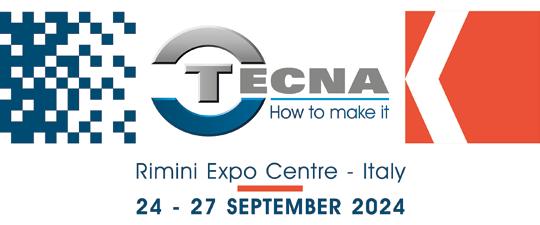
The next edition of Tecna, the international exhibition of technologies and supplies for surfaces organised by Italian Exhibition Group in collaboration with Acimac, will be held in Rimini from 24 to 27 September 2024, the same week as the other major surfaces shows – Cersaie in Bologna and Marmomac in Verona.
Tecna 2024 has two key aims: firstly to reaffirm its global leadership as a showcase for technology and innovation; and secondly to consolidate the new format introduced in 2022 with an increasingly select and inclusive range of offerings in keep-
Regionally, currency-adjusted net sales in Europe fell by 6.0%, in the Far East/Pacific by 7.7% and in America by 1.3%. In contrast, the Middle East/Africa region saw growth of 37.4%. All three product areas reported losses: Installation & Flushing Systems 5.8%, Bathroom Systems 4.6% and Piping Systems 2%.
Given the challenging environment facing the construction industry, the forecasts for the current year remain cautious. However, Geberit’s management is convinced that it can continue to achieve its medium-term targets of average annual net sales growth in local currencies of 4% to 6% and an average EBITDA margin of 28% to 30%.
GEBERIT, SCENDE IL FATTURATO MA MIGLIORA LA REDDITIVITÀ
Vendite in flessione nel primo trimestre del 2023 per Geberit, che ha registrato ricavi pari a 893 milioni di franchi, in calo dell’8,9% ri-
spetto allo stesso periodo dell’anno precedente (al netto degli effetti valutari la contrazione sarebbe stata del 4,3%). L’aumento dei listini di vendita di circa il 12% ha permesso di contenere gli effetti della maggiore contrazione di volumi. Su quest’ultima hanno pesato diversi fattori, tra cui, i valori record raggiunti nel primo trimestre 2022 e, in misura minore, la riduzione delle scorte in eccesso presso i grossisti, oltre al rallentamento delle attività di ristrutturazione edilizia. In alcuni paesi europei si è inoltre registrato uno spostamento della domanda dalle soluzioni per l’arredobagno a quelle per il riscaldamento a causa della crisi energetica.
Il calo dei volumi ha impattato sull’utile operativo Ebitda che si è ridotto del 2,5% a 296 milioni di franchi svizzeri; tuttavia, il relativo margine è aumentato di 2,2 punti raggiungendo il 33,1% (30,9% nei primi tre mesi 2022).
Flettono le vendite in Europa (-6%), in
Estremo Oriente/Pacifico (-7,7%) e in America (-1,3%). Al contrario, la regione Medio Oriente/Africa ha registrato una crescita del 37,4%. Tutte e tre le aree di prodotto perdono vigore: la divisione “Installation & Flushing Systems” (sistemi di scarico per il bagno) perde il 5,8%; la divisione “Bathroom Systems” (sanitari in ceramica e arredobagno) il 4.6% e la BU “Piping Systems” il 2%. Dato il difficile contesto legato al mondo delle costruzioni, le previsioni per l’anno in corso rimangono caute e prudenziali. I vertici di Geberit sono tuttavia fiduciosi di raggiungere gli obiettivi di crescita annua a medio termine definiti in un range tra il 4 e il 6% e un margine Ebitda medio tra il 28 e il 30%.
ing with the slogan “how to make it”. Visitors will have the opportunity to discover the latest technological solutions for the production of all kinds of surfaces and materials, from the most traditional to the most innovative.
Hybrid surface coverings, the use of surfaces in domestic and public spaces and the quest for integrated technical and aesthetic innovations are all aspects that will attract a growing number of companies from all over the world. But the real strength of the show lies in its 40-plus years of history and in the fact that it is a kind of “home event” for the world’s most important ceramic industry and consequently the premier showcase of Made in Italy.
Tecna 2024’s promotional campaign is already fully operational and includes participation in international trade fairs and conferences. An important step in the build-up to the show was the Decortech Conference held in Rimini from 13 to 15 June this year, an international convention that expanded on the themes introduced in the Decortech – digital decoration, finishing and design section at Tecna 2022. The event featured
presentations given by leading companies in the industry – Tecnografica, System Digital, Cefla, SCM, Superfici and Cefla Finishing – and was attended by more than 80 foreign professionals and buyers.
TECNA 2024 A RIMINI DAL 24 AL 27 SETTEMBRE
Si svolgerà dal 24 al 27 settembre 2024 a Rimini la prossima edi-
28 CWR 152/2023
zione di Tecna, il salone internazionale delle tecnologie e delle forniture per le superfici, organizzato da Italian Exhibition Group in collaborazione con Acimac. Confermato quindi il posizionamento di Tecna nella settimana in cui si svolgono gli altri importanti saloni dedicati alle superfici, il Cersaie di Bologna e Marmomac a Verona.
Duplice l’obiettivo di Tecna 2024: da un lato confermare ancora una volta la sua leadership mondiale come vetrina della tecnologia e
HIDRA CERAMICA ADOPTS
SACMI ROBOTCLEAN
Already a Sacmi-Gaiotto customer in the field of robotised glazing, Hidra Ceramica has now invested in the new RobotClean white stage sanitaryware finishing system, a solution that was recently launched onto the market and has already established itself as a benchmark among the industry’s leading players. A leading manufacturer of high-quality sanitaryware for more than 30 years based in the Civita Castellana district, Hidra will now be able to automate the finishing stage for any type of sanitaryware article thanks to the use of specific tools and advanced software management. In addition, the load capacity of up to 50 kg means that even the heaviest and most complex articles can be handled in complete safety.
RobotClean is equipped with specific abrasive tools for every part of the sanitaryware piece (outside, inside, edges and rim), thereby guaranteeing optimum repeatability and quality of finishing and eliminating the need for manual handling operations. The solution supplied to Hidra is equipped with the new Sacmi-Gaiotto NG Offline software capable of performing offline programming of the robot’s tasks and simulating the effects

dell’innovazione; dall’altro consolidare il nuovo format inaugurato nel 2022, con un’offerta espositiva sempre più inclusiva e selezionata, seguendo la logica espressa dal claim “how to make it”. L’invito per i visitatori sarà quindi orientato alla scoperta dello stato dell’arte delle soluzioni tecnologiche per produrre ogni tipo di superfici e materiali, da quelli più tradizionali a quelli più innovativi.
L’ibridazione nelle tipologie di rivestimento, il loro uso negli spazi do-
mestici e pubblici, la ricerca di tecniche innovative ed estetiche integrabili tra loro attireranno in fiera un crescente numero di aziende, provenienti da tutto il mondo. Il tutto con la spinta propulsiva di una manifestazione che vanta più di 40 anni di esperienza e che è la “fiera di casa” del più importante distretto ceramico mondiale, quindi la vetrina privilegiata del made in Italy.
Già pienamente operativa la campagna promozionale di Tecna 2024, con la partecipazione a fiere e con-
vegni internazionali. Una particolare tappa di avvicinamento si è avuta con la Decortech Conference svoltasi a Rimini dal 13 al 15 giugno scorsi, un convegno internazionale che ha sviluppato i temi del percorso avviato a Tecna 2022 nella sezione Decortech - decorazione digitale, finitura e design. Quattro aziende leader nel settore hanno animato la conferenza – Tecnografica, System Digital, Cefla, SCM, Superfici, Cefla Finishing – seguita da oltre 80 operatori e buyer stranieri.
they will have on the real article. A powerful extraction system (13,000 m³/h) operating in synergy with the wet filter systems keeps the robot’s work area and the air surrounding the cell clean at all times, which brings advantages in terms of sustainability and circularity of the process.
The reduction in manual operations also brings benefits in terms of quality as the operator has no further contact with the piece after it has been inspected and loaded onto the bar conveyor, and it is sent directly to the glazing department after automatic finishing.
In addition to the new cell, Sacmi-Gaiotto has also supplied a handling system in a customised configuration that includes an angle transfer device with double fork to reduce the robot serving times and limit downtime.
SACMI ROBOTCLEAN ENTRA IN HIDRA CERAMICA
Già partner Sacmi-Gaiotto nell’ambito della smaltatura robotizzata, Hidra Ceramica ha investito ora su RobotClean, la nuova soluzione per la finitura a bianco del sanitario, presentata di recente al mercato e già riferimento presso primari player del settore.

Da più di 30 anni protagonista nel sanitario di alta qualità, nel cuore
del distretto di Civita Castellana, Hidra potrà automatizzare la fase di finitura di ogni tipologia di articolo sanitario, grazie all’utensileria specifica, all’avanzata gestione software e ad una portata di carico fino a 50 kg, consentendo quindi la manipolazione in sicurezza anche degli articoli più pesanti e complessi.
RobotClean è equipaggiato con utensili abrasivi specifici per ogni parte del sanitario – esterno, interno, bordi, brida – garantendo in questo modo la migliore ripetibilità e qualità della finitura e azzerando le manipolazioni manuali. La soluzione fornita ad Hidra è equipaggiata con il nuovo software Offline NG di Sacmi-Gaiotto che consente la programmazione off line dei task del robot e di simularne gli effetti sull’articolo reale.
Grazie al potente sistema di aspirazione (13mila m³/ ora), che opera in sinergia con il corpo filtrante a umido, l’area di lavoro del robot viene mantenuta sempre pulita, così come l’aria circostante la cella, con vantaggi sotto il profilo della sostenibilità e della circolarità del processo. La riduzione delle manipolazioni manuali va inoltre a beneficio della qualità: dopo l’ispezione e il carico sul
convogliatore a barrette, l’operatore non viene più a contatto con il pezzo, che viene avviato direttamente, dopo la finitura automatica, al reparto smaltatura. Insieme alla nuova cella è stato fornito il sistema di handling, una configurazione personalizzata che si caratterizza, fra l’altro, per il trasferitore angolare a doppia forca, riducendo i tempi di servizio al robot e limitandone ulteriormente il downtime.
world news
29 CWR 152/2023
ROCA GROUP CONSOLIDATES ITS LEADERSHIP POSITION
IL GRUPPO ROCA CONSOLIDA IL SUO PRIMATO
Roca Group, the world’s leading manufacturer of ceramic sanitaryware (around 35 million pieces in 2021) and bathroom furnishings, posted a turnover of €2.09 billion in 2022, 1.9% up on 2021
The group reported particularly strong sales growth in Brazil, India and China, as well as in the Spanish domestic market, which has seen sustained growth since 2014 (with the sole exception of 2020 due to the pandemic).
These results were achieved despite a number of challenges, including disinvestment in Russia and a steady fall in demand caused by rising energy costs and global inflation. This inevitably impacted the group’s margins, with EBITDA at €356 million (equivalent to 17% of turnover) and net profit at €42 million. The Spanish group responded to this increased complexity in several ways: continuously improving the efficiency of its production processes, implementing flexible business operations that can be adapted to local needs, and adopting policies to reduce and control production costs.
As CEO Albert Magrans noted, “The net assets of €1.7 billion reflect the financial strength of the Group, which bases its growth on self-financing by reinvesting profits.”
GROWTH IN INVESTMENTS
In 2022, Roca made investments totalling €135 million, up 8.9% from the €124 million of 2021. These were mainly allocated to projects aimed at expanding and improving the production capacity of the plants in Brazil and India, building a new factory for resin shower trays and composite bathtubs in Poland, and expanding the bathroom furniture business in Spain and Portugal. The group also completed the startup of the Settat 2 sanitaryware plant expansion in Morocco. Further investments were allocated to decarbonisation and circularity projects with the aim of ensuring the transition of all production sites in terms of digitalisation, sustainability and efficient use of resources. The company has also successfully completed the conversion of its Croatian plant into a logistics centre, transforming it into a hub serving the main Central European markets.
PROGRESS TOWARDS THE GOAL OF CARBON NEUTRALITY BY 2045
Since the launch of its decarbonisation plan in 2018, the Group has achieved a 39% reduction in its scope 1 and 2 CO2 emis-
Il Gruppo Roca, leader mondiale nella produzione di sanitari in ceramica (circa 35 milioni di pezzi nel 2021) e articoli per l’arredobagno, ha chiuso l’esercizio 2022 con un fatturato di 2,09 miliardi di euro, in crescita dell’1,9% sul 2021. Particolarmente significativi gli incrementi delle vendite registrati in Brasile, India, Cina, oltre che sul mercato interno spagnolo, in costante crescita dal 2014 eccezion fatta per il 2020, anno della pandemia.
Il risultato è stato conseguito malgrado il contesto difficile: da un lato il disinvestimento in Russia, dall’altro il progessivo calo della domanda dovuto in gran parte all’aumento dei costi energetici e dell’inflazione a livello globale.
A risentirne, le marginalità: l’EBITDA si è attestato a 356 milioni di euro (con un margine del 17% sul fatturato) e l’utile netto a €42 milioni. Il gruppo spagnolo ha affrontato la maggiore complessità agendo su più fronti: un costante efficientamento dei processi produttivi, l’implementazione di business flessibili adattabili alle esigenze dei diversi mercati e l’applicazione di politiche di riduzione e controllo dei costi di produzione.
Come sottolineato dal CEO Albert Magrans, “il patrimonio netto ha raggiunto 1,7 miliardi di euro, riflettendo la solidità finanziaria del Gruppo, che basa la sua crescita sull’autofinanziamento attraverso il reinvestimento degli utili”.
IN CRESCITA GLI INVESTIMENTI
Nel corso del 2022 Roca ha realizzato investimenti per un totale di 135 milioni di euro contro i 124 milioni del 2021 (+8,9%). Gli interventi hanno riguardato principalmente progetti di ampliamento e miglioramento della capacità produttiva degli stabilimenti in Brasile e India, una nuova fabbrica di piatti doccia in resina e vasche da bagno in materiale composito in Polonia e l’espansione del settore arredobagno in Spagna e Portogallo. Completato anche lo startup del progetto di espansione dello stabilimento per sanitari Settat 2 in Marocco.
Altri investimenti sono stati destinati a progetti di decarbonizzazione e circolarità con l’obiettivo di garantire la transizione di tutti i siti produttivi in termini di digitalizzazione, sostenibilità e uso efficiente delle risorse.
L’azienda ha inoltre ultimato con successo la conversione del suo stabilimento croato in centro logistico, trasformandolo nell’hub di riferimento dei principali mercati dell’Europa centrale.
I PROGRESSI VERSO L’OBIETTIVO DI NEUTRALITÀ CARBONICA ENTRO IL 2045
Dal lancio del suo piano di decarbonizzazione nel 2018, il Gruppo ha raggiunto una riduzione del 39% delle sue emissioni di CO2 (scope 1 e 2).
30 CWR 152/2023
sions. It has also reduced its energy use intensity by 47% and in 2022 alone installed more than 10,000 photovoltaic panels in multiple locations, including Gavà (Spain), Cantanhede (Portugal) and Suzhou (China), reaching its goal of 21,800 panels installed at its facilities worldwide. The Group is pushing ahead with the water efficiency plan it has initiated at the factories in Burgos (Spain), Eskisehir (Turkey), Settat (Morocco) and Cantanhede (Portugal) and has already achieved a 47% reduction in water consumption and a 55% reduction in the intensity of water use over the last five years. Roca Group has also achieved a 74% level of reintroduction or recycling of its waste and a 54.6% reduction in its waste generation intensity over the same period.
THE DEVELOPMENT OF COMPETENCE CENTRES
One of the main projects pursued by Roca Group to adapt its capabilities to the market has been to extend its industrial model of Competence Centres, enabling it to respond with greater agility, efficiency and sustainability to specific trends and demands. The Competence Centres are vertical hubs of knowledge and technology which coordinate the actions of the entire group in their respective categories. The integration of the Royo and Sanit business units into the group’s industrial network following their acquisition in 2021 has facilitated the consolidation of this model. This in turn has reinforced the offering of complete bathroom solutions, including porcelain sanitaryware: taps, bathroom furniture, installation systems, partitions and accessories, composite materials and steel bathtubs.
GROWTH AND INVESTMENT CONTINUE IN 2023
During 2023, Roca Group has continued to consolidate its development policy and has announced the acquisition of the Florida-based bathroom furniture and mirrors compa-

Anche l’intensità del consumo di energia è diminuita del 47% e, solo nel 2022, la multinazionale ha installato oltre 10.000 pannelli fotovoltaici in diverse sedi, tra cui Gavà (Spagna), Cantanhede (Portogallo) e Suzhou (Cina), raggiungendo l’obiettivo dei 21.800 pannelli installati presso le sue strutture nel mondo.
Il piano per l’efficienza idrica avviato negli stabilimenti di Burgos (Spagna), Eskisehir (Turchia), Settat (Marocco) e Cantanhede (Portogallo) continua a progredire e negli ultimi cinque anni il Gruppo è riuscito a ridurre del 47% il consumo di acqua e del 55% l’intensità del suo utilizzo. Risultati che si uniscono al raggiungimento di un livello di reintroduzione o riciclo degli scarti pari al 74%, insieme alla riduzione del 54,6% dell’intensità della loro produzione.
LO SVILUPPO DEI CENTRI DI COMPETENZA
Uno dei principali progetti di adattamento delle capacità del Gruppo Roca al mercato è stato l’estensione del modello industriale di Centri
di Competenza, che consente di rispondere con maggiore agilità, efficienza e sostenibilità a tendenze e richieste specifiche. I Centri di Competenza si configurano come hub verticali di conoscenza e tecnologia, che coordinano le azioni dell’intero gruppo nelle rispettive categorie.
L’integrazione nella rete industriale delle unità di Royo e Sanit - acquisite nel 2021 - ha favorito in particolare il consolidamento di questo modello con l’obiettivo di rafforzare l’offerta di soluzioni complete per il bagno, includendo tutte le categorie di prodotto oltre alla porcellana sanitaria: rubinetteria, mobili da bagno, sistemi di installazione, paratie e accessori, materiali compositi e vasche da bagno in acciaio.
CRESCITA E INVESTIMENTI PROSEGUONO NEL 2023
Nel corso del 2023, il Gruppo Roca ha continuato a consolidare la sua politica di sviluppo, annunciando l’acquisizione di Madeli, produttore di mobili e specchi con sede in Florida e 500 punti vendita negli Stati Uniti.
economics
31 CWR 152/2023
Kerasys® LC Repair Solutions for Sanitary Ceramics

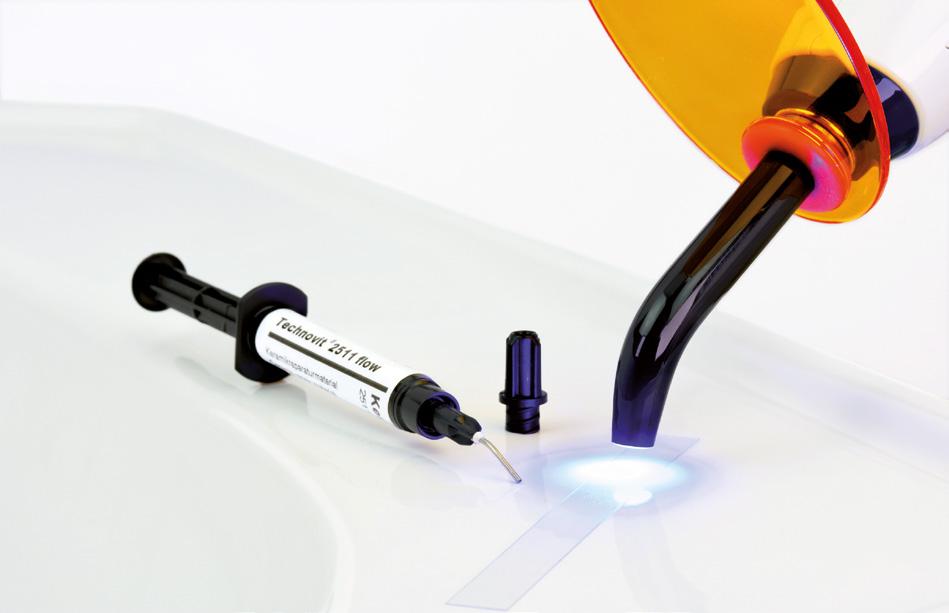
Kerasys® LC Ceramic Repair
ny Madeli, which has 500 points of sale across the USA. This acquisition helps to reinforce the group’s bathroom furnishing operations and generates a strategic knock-on effect in a market where furniture is becoming an increasingly important component of renovation projects. This year has also seen the continuation of the activities of Roca Group Ventures, the Group’s CVC Corporate Venture Capital platform, which in March made an initial investment in Aquí Tu Reforma (ATR), a digital platform operating in the home renovation segment. ◼
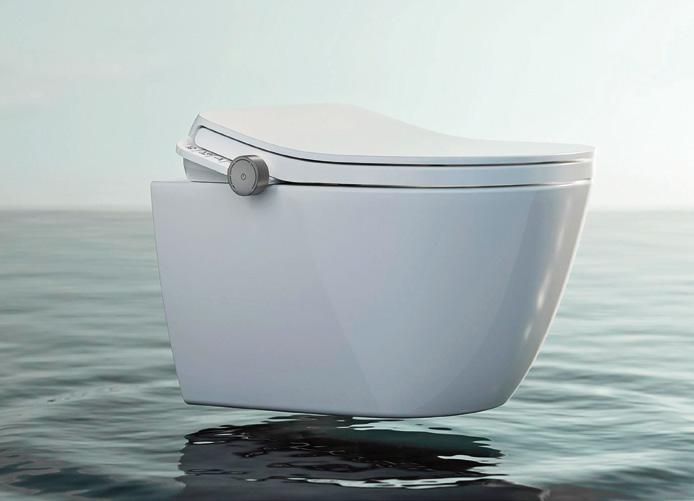

Una scelta che contribuisce a rafforzare il segmento arredobagno e generare un effetto a catena in un mercato in cui l’arredo acquista sempre maggiore importanza nelle opere di ristrutturazione.
Prosegue anche l’attività di Roca Group Ventures, la piattaforma di Corporate Venture Capital CVC del Gruppo che a marzo ha effettuato un investimento iniziale in Aquí Tu Reforma (ATR), la piattaforma digitale attiva nel segmento delle ristrutturazioni residenziali. ◼
fast · easy · cost-effective
For more information: www.kerasys.de info@kulzer-technik.com
32 CWR 152/2023 economics
ADVERTISING
Kerasys® LC is a light curing repair system for sanitary ceramics and porcelain, developed by Kulzer, one of the leading global providers of high-performance, light curing composites.




































































































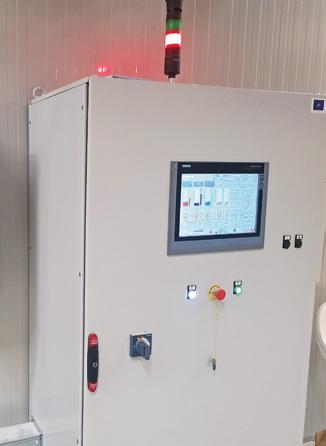

































































































































































SETEC Group - SE.TE.C. / VICENTINI / IPEG / COELTUNNEL • Via Enrico Fermi 6/18 • 01033 Civita Castellana (VT) • ITALY tel. (+39) 0761-540606/(+39) 0761-542141 • fax (+39) 0761-542022 • www.setecsrl.it • info@setecsrl.it www.setecsrl.it www.rapid-dry.eu SETEC GROUP I I S.r.L. t u n n e l RAPID DRY THE NEXT-GENERATION DRYER FOR SANITARYWARE AND TABLEWARE WHICH REDUCES ENERGY CONSUMPTION AND CO2 EMISSIONS, WHILE PRESERVING PRODUCT QUALITY. SETEC Group - SE.TE.C. / VICENTINI / IPEG / COELTUNNEL • Via Enrico Fermi 6/18 • 01033 Civita Castellana (VT) • ITALY tel. (+39) 0761-540606/(+39) 0761-542141 • fax (+39) 0761-542022 • www.setecsrl.it • info@setecsrl.it www.setecsrl.it www.rapid-dry.eu SETEC GROUP I I S.r.L. t u n n e l RAPID DRY THE NEXT-GENERATION DRYER FOR SANITARYWARE AND TABLEWARE WHICH REDUCES ENERGY CONSUMPTION AND CO2 EMISSIONS, WHILE PRESERVING PRODUCT QUALITY.
LAMOSA SEES SLOWDOWN IN

FIRST QUARTER
LAMOSA RALLENTA NEL PRIMO TRIMESTRE
Grupo Lamosa’s financial results in the first quarter of 2023 were impacted by the volatile global macroeconomic environment coupled with a slackening of markets as demand returned to its normal pre-pandemic levels. Sales fell by 6% compared to the same quarter in 2022 to MX$8.3 billion (more than €421 million at the 31/3/23 exchange rate).
The San Pedro Garza García-based multinational, Mexico’s largest ceramic tile manufacturer and one of the top three global players, continued to generate the majority of its revenues (60%) in the domestic market with sales of MX$4.97 billion, down 4% on the first quarter of the previous year. However, the slowdown was most significant in export markets, where the group reported a 9% decline in sales to MX$3.33 billion in the first quarter of 2023 compared to MX$3.6 billion in the same period in 2022. Lower revenues combined with higher costs and expenses reduced the absorption of fixed costs and impacted operating margin or EBITDA (down 20% to MX$1.82 billion) and consequently operating income EBIT (down 26% to MX$1.51 billion). Inevitably, this also impacted net income, which fell by 31% to MX$1.09 billion.
Sales in the floor and wall tile business (which accounts for 73% of the group’s total sales) contributed to the negative first-quarter result, dropping by 9% compared to the first quarter of 2022 to MX$6.05 billion (about €307 million). This business was hit by the reduction in demand in all countries in which Grupo Lamosa operates: Mexico, Colombia, Peru, Argentina, Chile, Brazil and Spain, as well as the United States. The adhesives business, which accounts for 27% of total group sales, posted 3% growth in revenues to MX$2.25 billion (compared to MX$2.17 billion in the first quarter of 2022) following incorporation of Fanosa operations.

La volatilità del contesto macroeconomico globale e il rallentamento della domanda che tende a riallinearsi sui livelli pre-pandemia hanno pesato sui risultati economici del Gruppo Lamosa nel primo trimestre di quest’anno: le vendite hanno registrato una flessione del 6% rispetto allo stesso periodo del 2022, scendendo a 8,3 miliardi di pesos (oltre 421 milioni di euro al cambio del 31/3).
Per il maggiore produttore ceramico messicano – sul podio anche a livello mondiale -, il mercato interno conferma la sua forte incidenza (il 60%) sui ricavi totali, attestandosi a
4,97 miliardi di pesos, in calo del 4% sul primo trimestre dell’anno precedente. Le ripercussioni più marcate si sono verificate però all’estero, dove la multinazionale di San Pedro Garza García ha perso il 9% generando un giro d’affari di 3,3 miliardi di pesos contro i 3,6 miliardi realizzati nel periodo gennaio-marzo 2022. Il calo dei ricavi, insieme ai costi più elevati, hanno ridotto l’assorbimento dei costi fissi impattando sul margine operativo Ebitda (-20% a 1,82 miliardi di pesos) e di riflesso sul reddito operativo Ebit (-26% a 1,51 miliardi). Contraccolpi inevitabili anche sull’utile netto che si è contratto del 31% attestandosi a 1,09 miliardi di pesos. Sul risultato negativo del primo trimestre ha influito l’andamento della divisione ceramica che rappresenta il 73% delle vendite totali del gruppo e i cui ricavi sono scesi a 6,05 miliardi di pesos (circa 307 milioni di euro), ovvero il 9% in meno rispetto al primo trimestre 2022. In questo segmento ha pesato la contrazione della domanda registrata in tutti i paesi in cui il Gruppo Lamosa opera con i suoi stabilimenti: Messico, Colombia, Perù, Argentina, Cile, Brasile e Spagna, oltre che negli Stati Uniti. Ha tenuto invece la divisione adesivi che rappresenta il 27% del fatturato consolidato e che, grazie all’incorporazione di Fanosa, ha incrementato i volumi di vendita del 3%: 2,25 miliardi di pesos contro i 2,17 miliardi registrati nel primo trimestre 2022.
34 CWR 152/2023
Federico Toussaint Elosúa
Despite the slowdown in business, the group led by Federico Toussaint Elosúa continued its investment plan in the first three months of the year with a total of MX$485 million (more than €25 million) invested primarily in capacity expansions and technology upgrades for its various plants and in information technologies.
In the first three months of the current year, Grupo Lamosa continued the process of consolidating and optimising the acquisitions of Fanosa and Roca Tiles that began in 2022, a truly exceptional year for the group in terms of its economic and financial performance.
ALL INDICATORS POINT TO UPWARD TREND IN 2022
The integration of Roca Tiles and Fanosa, which were acquired in September 2021 and January 2022 respectively, made a big contribution to the sales growth reported by the Mexican group last year. “The incorporation of the new businesses is an ongoing process but, as with previous acquisitions, is going in the right direction, and in some cases even generating better-than-expected results,” said Chairman and CEO Federico Toussaint Elosúa


In 2022, consolidated sales reached MX$35.4 billion (approximately €1.7 billion at the 31/12/22 exchange rate), an

Nonostante il rallentamento dell’attività, il gruppo guidato da Federico Toussaint Elosúa ha dato seguito al suo piano di investimenti destinando, nel trimestre, 485 milioni di pesos (oltre 25 milioni di euro) all’incremento della capacità produttiva, agli aggiornamenti tecnologici nei vari stabilimenti e ai progetti di information technology.
Più in generale, nel trimestre in esame, è proseguito il processo di consolidamento e ottimizzazione delle acquisizioni di Fanosa e Roca Tiles che aveva caratterizzato anche tutto il 2022, un anno davvero eccezionale per Grupo Lamosa a livello di performance economico/finanziarie.
È stata proprio l’integrazione di Roca Tiles e Fanosa, acquisiste rispettivamente nel settembre 2021 e nel gennaio 2022, a contribuire alla forte crescita di fatturato conseguita lo scorso esercizio dal gruppo messicano. “L’incorporazione dei nuovi business è un processo continuo e tuttora in progress, ma sta già generando risultati migliori delle aspettative – ha dichiarato il Presidente e CEO Federico Toussaint Elosúa. Nel 2022 le vendite consolidate hanno raggiunto i 35,4 miliardi di pesos (circa 1,7 miliardi di euro al cambio del 31/12/22), con un progresso del 30% sul 2021 e del 97,5% rispetto al 2019.
economics
NEL 2022 TREND IN CRESCITA SU TUTTI GLI INDICATORI
35 CWR 152/2023
increase of 30% over 2021 and 97.5% compared to 2019. The floor and wall tile business grew by 22% to MX$26.4 billion (about €1.27 billion) with an output volume of 213 million sqm. Revenues in the adhesives business grew by 61% to almost MX$9 billion.



EBITDA likewise saw double-digit growth, up 10% to MX$8.1 billion.
In 2022, total investments amounted to more than MX$4 billion ( €192 million ), partly for the acquisition of Fanosa and partly for the modernisation of production facilities. During the year, the group also implemented several initiatives aimed at meeting the ESG objectives set out in its environmental sustainability plan, including optimising energy use, reducing emissions and operating in accordance with circularity criteria in the design of processes, products and services, while minimising the production of waste. Thanks to its development and diversification strategy, the group has succeeded in doubling its size in the last four years by expanding its presence in nine Latin American and European countries and maintaining a sufficiently solid financial structure to continue driving future growth. ◼
La divisione piastrelle è cresciuta del 22% a 26,4 miliardi di pesos (circa 1,27 miliardi di euro) con una produzione in volume pari a 213 milioni di mq. L’incremento nel segmento adesivi è stato del 61% sfiorando i 9 miliardi di pesos.
Progressi a doppia cifra an-
che per l’Ebitda che ha chiuso in rialzo del 10% a 8,1 miliardi di pesos.
Gli investimenti realizzati nel 2022 hanno superato i 4 miliardi di pesos (192 milioni di euro), destinati in parte all’acquisizione di Fanosa e in parte alla modernizzazione degli stabilimenti produttivi.
Nel corso dell’anno sono inoltre state implementate diverse iniziative in risposta agli obiettivi ESG contenuti nel piano di sostenibilità ambientale, finalizzati a ottimizzare l’uso dell’energia, ridurre le emissioni e operare secondo criteri di circolarità nella progettazione di processi, prodotti e servizi, riducendo al minimo la produzione di rifiuti.
Grazie alla strategia intrapresa di sviluppo e diversificazione, negli ultimi quattro anni il gruppo è riuscito a raddoppiare le sue dimensioni estendendo la sua presenza in nove paesi tra America Latina ed Europa e mantenendo una struttura finanziaria sufficientemente solida per continuare a sostenere la crescita futura. ◼
36 CWR 152/2023 economics
I-NKFILLER



REDUCTION OF MAINTENANCE COSTS.

THE WAY TO SUCCESS.
REDUCTION OF INK SEDIMENTATION IN THE TANKS.
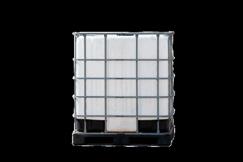
REDUCTION OF TRANSPORT COSTS
PLASTIC REDUCTION WORLDWIDE


ELIMINATION OF HUMAN MISTAKES.
MACHINE DOWNTIME REDUCTION.



-25% -100% -25% -74K
-90% -48%
tons
A u t o m a t i c i n k f i l l i n g s y s t e m
EUROPEAN CONSTRUCTION MARKET FORECASTS TO 2025
COSTRUZIONI IN EUROPA: OUTLOOK AL 2025
by Thomas Endhoven, EIB Economic Institute for Construction and Housing (Amsterdam, Netherlands)
The continuation of the war in Ukraine and the severe energy crisis, along with the sudden changes in monetary policy, were initially pointing towards a recessionary outlook for the European economy. However, in recent months, it has performed better than expected due to lower energy prices, reduced supply constraints, improved business confidence, and a strong labor market.
In 2022, for the European construction sector a growth of 3% is confirmed , within an overall expansionary economic environment.
In contrast, the new forecast for the European construction sector has been revised downward, with a shift from the previous assumption of stagnation in 2023 to an anticipated reduction in volumes. Risks and uncertainties impeding the growth of the European construction market have been discussed at the 95th Euroconstruct Conference, that was held on 8-9 June 2023 in Amsterdam.
The factors that explain the gradual slowdown in growth, leading to a contraction in construction spending levels in 2023, have been developing and solidifying over time, such as weaker momentum of the global economy, inflation, change in monetary policy direction and the consequent rise in interest rates. The latest forecast now projects a decline of 1.1% this year, followed by a further contraction of 0.7% in the subsequent year , highlighting the challenging outlook for the construction

Il protrarsi della guerra in Ucraina, la grave crisi energetica e i repentini mutamenti della politica monetaria, facevano inizialmente presagire prospettive di recessione per l'economia europea. Negli ultimi mesi, al contrario, l’andamento si è rivelato migliore del previsto, complici il ribasso dei prezzi dell'energia, la riduzione dei vincoli dell’offerta, il miglioramento della fiducia delle imprese e un mercato del lavoro in netta ripresa.
Per il settore europeo delle costruzioni il 2022 si conferma un anno in crescita (+3%), in un contesto economico complessivamente favorevole. Cosa diversa invece per il 2023, le cui previsioni sono state riviste al ribasso passando da un’ipotesi di stagnazione a un’attesa riduzione dei volumi.
I rischi e le incertezze che hanno ostacolato la crescita del settore sono stati discussi durante la 95a Conferenza Euroconstruct che si è tenuta l'8-9 giugno 2023 ad Amsterdam e dove è emerso che il trend al ribasso nel 2023 è principalmente dovuto al consolidarsi dell'indebolimento dell'economia mondiale, oltre a inflazione, cambio di direzione della politica monetaria e al conseguente aumento dei tassi di interesse.
Le ultime previsioni evidenziano pertanto un calo dell'1,1% nell’anno in corso, seguito da un'ulteriore contrazione dello 0,7% nel 2024 con aspettative di ripresa rinviate al 2025.
Il forte aumento dell'inflazione nel 2022 ha costretto le Banche Centrali ad alzare bruscamente
Source / Fonte: 95 th Euroconstruct Conference
38 CWR 152/2023
FIG. 1 - GDP AND CONSTRUCTION OUTPUT IN EUROCONSTRUCT-19 AREA PIL e produzione edilizia in area Euroconstruct-19
industry whose expectations of recovery have been postponed to 2025.
The sharp rise in inflation in 2022, caused, among others, by the energy crisis, forced central banks to raise interest rates sharply and, as a result, worsened the ability to finance housing investment. Mortgage interest rates have doubled in most European countries in 2022 and tripled in Finland, Slovakia, Switzerland and the UK.
i tassi di interesse e, di conseguenza, ha peggiorato la capacità di finanziare gli investimenti immobiliari.
I tassi di interesse sui mutui sono infatti raddoppiati nella maggior parte dei paesi europei e triplicati in Finlandia, Slovacchia, Svizzera e Regno Unito.
Secondo le stime attuali, la produzione residenziale 2023 nei paesi Euroconstruct sarà inferiore a quella del 2022 con una contrazione che continuerà anche nel 2024. Nello specifico, il calo nei paesi della CE-4 (Polonia, Repubblica Ceca, Ungheria e Slovacchia) sarà

economics 39 CWR 152/2023 TAB.
CONSTRUCTION OUTPUT IN
EUROCONSTRUCT
(% change on real terms) Produzione totale del settore costruzioni nell’area Euroconstruct (Var. % in termini reali) Forecast Outlook Country 2019 2020 2021 2022 2023 2024 2025 Austria 3.6 -3.4 5.8 -0.8 -1.2 -1.8 0.7 Belgium 1.1 -5.0 6.2 1.5 -0.3 3.0 1.6 Denmark 1.6 8.8 6.6 5.5 -1.1 0.1 1.8 Finland -2.5 -1.2 1.2 0.8 -5.9 0.9 0.3 France 2.3 -10.4 8.2 2.8 0.3 0.7 1.2 Germany 1.5 2.3 0.1 -1.5 -2.2 -1.6 -0.8 Ireland 5.8 -9.1 -3.2 10.3 2.1 5.9 4.9 Italy 3.5 -4.6 18.0 12.4 -0.5 -6.0 1.5 Netherlands 5.3 0.2 2.3 3.3 -1.9 -2.1 1.2 Norway 1.0 -1.0 0.4 -1.9 -0.3 0.2 4.1 Portugal 8.4 3.4 15.3 0.5 1.2 1.5 1.5 Spain 4.6 -9.3 6.7 3.6 3.2 2.5 1.5 Sweden 0.3 -0.4 5.0 1.4 -8.2 -2.9 4.7 Switzerland -0.2 -0.6 -3.0 -3.7 -0.9 0.9 1.7 UK 2.2 -13.9 11.7 5.6 -1.5 1.1 2.7 Western Europe (EC-15) 2.4 -4.2 5.9 3.0 -1.0 -0.8 1.2 Czech Rep. 3.5 -3.3 1.7 2.9 -3.5 1.1 3.1 Hungary 16.8 -6.6 4.4 2.5 -7.6 -3.1 3.3 Poland 5.0 -1.7 3.8 5.1 0.9 2.5 4.0 Slovak Rep. -4.7 -12.7 -3.7 0.1 1.1 3.1 2.1 Eastern Europe (EC-4) 5.9 -3.6 3.0 3.8 -1.7 1.3 3.5 Total EC-19 2.6 -4.2 5.8 3.0 -1.1 -0.7 1.4 Source / Fonte: Euroconstruct June 2023
1 - TOTAL
THE
AREA
According to the current forecast, total residential output in 2023 in the Euroconstruct countries will be lower than in 2022. The shrinkage is foreseen to continue for yet another year.
maggiore rispetto ai paesi della CE-15 (vedi tabella). La ripresa per entrambe le aree geografiche potrebbe iniziare nel 2025.
International Processing Trade
for POWDER BULK SOLIDS FLUIDS LIQUIDS and


Feel the pulse of processing technology at POWTECH! Use this opportunity to discover the latest innovations, solutions and technologies. Be inspired by leading companies and experts, and make contact with the decision-makers and innovators of the industry. Experience the energy and dynamics of POWTECH and immerse yourself in the world of powder, granules, bulk solids and liquids.
We look forward to your visit!
EC-4 countries (Poland, Czechia, Hungary, Slovakia) are predicted to witness a bigger decrease in residential construction output than the EC-15 countries (see table). Recovery for both regions of Euroconstruct might start in 2025.
The clear slowdown of economic growth will undermine non-residential construction in the next few years. In 2022, the output of total non-residential construction increased compared to the 2021 level. Last year total non-residential construction accounted for 29.2% of total construction output across the Euroconstruct network. Growth projections for output in the field have remained the same as in the previous report (November 2022). A slight growth is forecast for this year, while growth will likely pick up marginally in the remaining period. Production output is prognosticated to exceed the 2019 pre-pandemic level in 2025.
The impact of the business cycle is smaller for civil engineering due to many long-term projects and a high share of activities financed by the public sector. Multinational funds in the EU have generally been a stabilising factor. Additionally, in economic downturns, governments often implement economic stimulus packages for the construction sector which contained maintenance and improvements of existing infrastructures as well as new infrastructure projects. The growth rates of civil engineering works outperform the development in the building sectors and show continuous positive growth from 2021 until the end of our forecast period. The annual growth rates projected for 2023-2025 are rather moderate, though. ◼
Nel triennio 2023-2025, il netto rallentamento della crescita economica peserà anche sull'edilizia non residenziale, ma in modo meno impattante. Nel 2022 il segmento è risultato in crescita sul 2021 con un’incidenza del 29,2% sul totale della produzione Euroconstruct. Le proiezioni per il settore restano invariate rispetto al rapporto di novembre 2022: per l’anno in corso è prevista una crescita modesta che, con tutta probabilità, si intensificherà nel 2024 per arrivare nel 2025 a superare i livelli pre-pandemia.
Inferiore l'impatto della crisi sul comparto dell’ingegneria civile grazie ai numerosi progetti a lungo termine e all’elevata quota di attività finanziate dal settore pubblico. I fondi UE sono stati un fattore stabilizzante, come pure gli incentivi dei vari Governi a favore del miglioramento delle infrastrutture esistenti e di nuovi progetti infrastrutturali. Il trend di sviluppo delle opere di ingegneria civile mostra una crescita continua dal 2021 che perdurerà fino alla fine del periodo di previsione. I tassi di crescita annuali previsti tra il 2023 e il 2025 sono tuttavia piuttosto moderati. ◼
economics
Honorary sponsors
26–28.9.2023 Join the POWTECH community! powtech.de/en/become-visitor Together with International Congress on Particle Technology ADVERTISING
Fair
Nuremberg, Germany
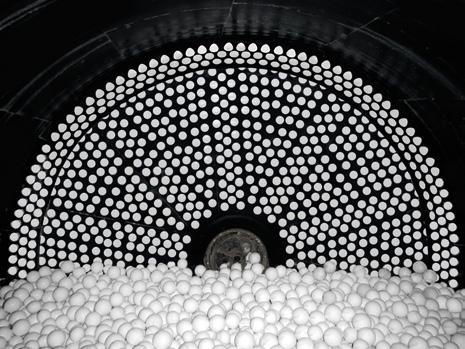

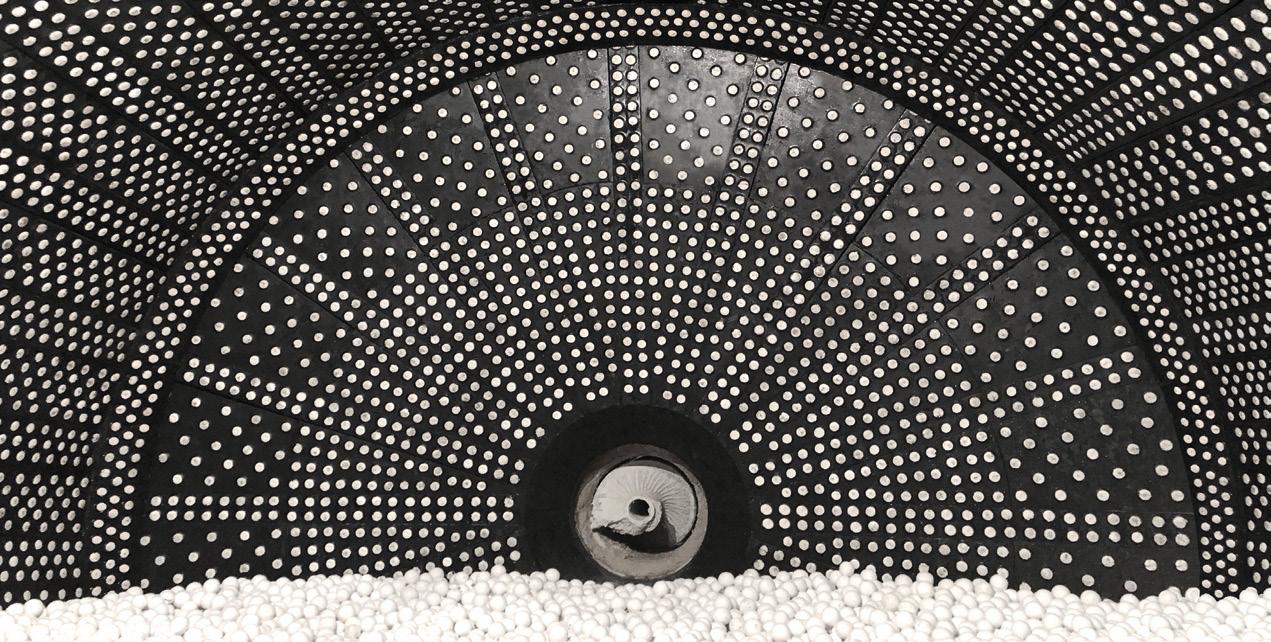
SLOWDOWN FOR ITALIAN TILE INDUSTRY AFTER RECORD 2022
IL MADE IN ITALY FRENA DOPO UN 2022 DA RECORD
Total revenues of 8.7 billion euros, representing a rise of 16% on 2021: this is the new record reached at the end of 2022 by the Italian ceramic industry as a whole, which comprises a total of 259 companies and 26,500 direct employees operating in the industry’s six different production sectors, namely tiles and large-format panels, sanitaryware, tableware, refractory materials, bricks and technical ceramic. Such is the picture that emerges from the Confindustria Ceramica National Statistical Survey presented at the Annual Members’ Meeting on 14 June. It confirms, beyond question, the leading role played by the tile sector, which – with revenues of 7.2 billion euros – accounts for 83% of the industry’s total turnover.
THE TILE INDUSTRY
As anticipated in forecasts drawn up last December, the results achieved by Italy’s 128 manufacturers of ceramic tiles and large-format panels in 2022 show that the volumes produced and sold remained broadly unchanged, while revenues rose significantly.

Production amounted to 431.2 million sq.m – the second highest volume since 2008 – down by just 0.9% from 435 million in 2021. Total sales – 449 million sq.m (down 1.4% on 2021) – are composed of sales on Italy’s domestic market (92.7 million
Un giro d’affari complessivo da 8,7 miliardi di euro, in aumento del 16% sul 2021. È il nuovo record raggiunto a fine 2022 dall’intera industria ceramica italiana, un totale di 259 aziende e 26.500 addetti diretti attivi nei sei comparti della produzione di piastrelle e lastre, sanitari, stoviglieria, refrattari, laterizi e ceramica tecnica.
Una fotografia – quella che emerge dall’Indagine Statistica Nazionale di Confindustria Ceramica presentata all’Assemblea annuale dei soci il 14 giugno – che conferma l’indiscusso ruolo trainante dell’industria delle piastrelle, che, con i suoi 7,2 miliardi di euro, pesa per l’83% del fatturato totale.
L’INDUSTRIA DELLE PIASTRELLE
Come anticipato dai preconsuntivi elaborati lo scorso dicembre, i risultati raggiunti nel 2022 dalle 128 aziende italiane produttrici di piastrelle e lastre ceramiche evidenziano la sostanziale tenuta dei volumi prodotti e venduti, a fronte di un eccezionale aumento del fatturato.
La produzione è stata pari 431,2 milioni mq - il secondo volume più alto dal 2008 -, scesa di appena lo 0,9% sui 435 milioni del 2021. Le vendite totali - 449 milioni mq (-1,4% sul 2021) – sono il risultato delle vendite sul mercato interno (92,7 milioni mq; +1,7%), ancora sostenuto dalla forte ripresa dell’attività edi-
42 CWR 152/2023
ABK
sqm, up 1.7%), which is still riding the wave of a vigorous upturn in construction and renovation work, and exports, amounting to 356.2 million sqm (down 2.2% on the 2021 figure of 364 million), which are among the highest volumes recorded over the past 15 years.
The increase in list prices in response to sky-rocketing production costs (first and foremost energy) paved the way for Italian ceramic manufacturers to close 2022 with total revenues of 7.2 billion euros (up 16.5% on the 2021 figure of 6.2 billion). The 2022 figure comprises 1.2 billion euros from the domestic market (up 25.6%) and 6 billion from exports (up 14.8%), which is also a record high.
By the end of last year, the average selling price had risen from 10.6 euros per sqm to 12.43 euros per sqm on the domestic market, and from 14.3 euros per sqm to 16.76 euros per sqm on the export market (compared to about 10 euros and 8 euros for Spanish and Turkish manufacturers respectively).
The positive results deriving from the internationalisation of production also warrant attention: foreign companies operating in Europe and North America but controlled by Italian groups have generated revenues of over 1 billion euros. Last but not least, investment continued to rise significantly in 2022 (up 25.6% in the wake of a 73% rise in 2021), to reach 441.3 million euros, or 6.1% of the industry’s total revenues.
lizia e delle ristrutturazioni, e delle esportazioni, pari a 356,2 milioni mq (-2.2% sui 364 milioni del 2021), che si confermano tra i volumi più elevati degli ultimi 15 anni. Come noto, l’aumento dei listini per fronteggiare il forte rincaro dei costi di produzione (energetici in primis) ha consentito alle aziende ceramiche italiane di chiudere il 2022 con un fatturato totale di 7,2 miliardi di euro (+16,5% sui 6,2 miliardi del 2021) : 1,2 miliardi di euro sono stati realizzati sul mercato interno (+25,6%) e 6 miliardi di euro con l’esportazione (+14,8%) , anche in questo caso il picco storico. Alla fine dello scorso anno, il prezzo medio di vendita sul mercato interno era salito
da 10,6 €/mq a 12,43 €/mq, quello all’esportazione da 14,3 €/mq a 16,76 €/mq (contro i circa 10 €/mq dei competitor spagnoli e gli 8 €/mq di quelli turchi).
Da sottolineare anche i buoni risultati derivanti dall’internazionalizzazione produttiva : le aziende estere controllate da gruppi italiani e attive in Europa e Nord America hanno realizzato un giro d’affari di oltre un miliardo di euro.
Infine, ma di assoluto rilievo, il dato relativo agli investimenti che hanno continuato a crescere anche nel 2022 in maniera sostenuta (+25,6%, dopo il +73% del 2021), portandosi a 441,3 milioni di euro, pari al 6,1% del fatturato totale del comparto.
economics
43 CWR 152/2023
2016 2017 2018 2019 2020 2021 Var. 2021/2020 2022 Var. 2022/2021 Production / Produzione (mill. m2) 415.9 422.5 415.5 400.7 344.3 435.3 +26.1% 431.2 -0.9% Total sales / Vendite Totali (mill. m2) 414.6 421.9 410.1 406.9 391 455.3 +16.4% 448.9 -1.4% - Domestic sales / Vendite in Italia (mill. m2) 82.9 83.7 82.4 83.5 73.3 91.2 +24.4% 92.7 +1.7% - Exports (mill. m2) 331.7 338.2 327.7 323.4 317.7 364.1 +14.6% 356.2 -2.2% Total Turnover / Fatturato totale (mill. €) 5,417.1 5,546.5 5,380.9 5,341.3 5,132 6,166 +20.1% 7,186 +16.5% - Domestic sales / Vendite in Italia (mill. €) 828.8 842.4 834.0 832.0 720.0 967 +34.3% 1,215 +25.6% - Exports (mill. €) 4,588.3 4,704.1 4,546.9 4,509.3 4,410 5,199 +17.9% 5,971 +14.8%
TAB. 1 - THE ITALIAN CERAMIC TILE INDUSTRY L’industria italiana delle piastrelle di ceramica
Source: Confindustria Ceramica
SLUGGISH START TO 2023
As forecast, the figures for the first quarter of 2023 have given a clear idea of the extent of the downturn in global demand, which had already made itself felt in the second half of the previous year.
Giovanni Savorani, Chairman of Confindustria Ceramica, gave his analysis of the figures, almost all of which had seen a double-digit decline: compared to the first quarter of 2022, exports of Italian tiles fell by 25% by volume and 13% by value, across all markets; the volumes sold in Italy also fell by about 10%, while rising in value by a few percentage points.

“After the incredible performance of the first six months of 2022,” Giovanni Savorani points out, “there can be no doubt that a return to lower values was predictable, even though the reason for the downturn lies mainly in the profound change in the global scenario, marked by sharply rising interest rates, stubbornly high inflation, the end of the post-lockdown spending spree and a dip in consumer confidence. Against this backdrop, international competition is becoming fiercer, and the Italian and European industry are paying close attention to ensure that all exporters, including those in India and China, apply the rules of fair trade.”
The Chairman of Confindustria Ceramica confirmed that the drop in electricity and thermal energy prices was a boon for the sector, adding however that “All the structural problems are still unresolved, such as the absence of implementing decrees to increase national gas extraction by 2 billion cubic metres for the benefit of gas-hungry industries, and a reform of the ETS that is set to increase the competitive penalties faced by EU industry.” For ceramic manufacturers, the ETS, which was formulated for the laudable purpose of facilitating decarbonisation, has proved ineffective and counter-productive in terms of environmental benefits, and actually had a regressive effect on the industry. “Current CO2 prices,” points out Savorani, are hovering around 85 euros per tonne, up from 25 euros as recently as June 2019. Even the ‘Fit for 55’ plan, aimed at structurally reducing emissions, adversely affects the competitiveness of our sector, because our production facilities have already achieved all the possible efficiency gains, and alternative technological solutions are not currently feasible.”
In this regard, Savorani confirms that testing on the electrification of production processes is already under way, but operating costs are still
IL 2023 INIZIA IN FRENATA
Come era atteso, i numeri del primo trimestre 2023 hanno mostrato con evidenza la misura del rallentamento della domanda globale che si era già sentito nel secondo semestre dell’anno precedente.
È lo stesso Presidente di Confindustria Ceramica, Giovanni Savorani, a snocciolare i dati, quasi tutti caratterizzati da un segno meno a doppia cifra: rispetto al primo trimestre 2022, l’export di piastrelle italiane è calato del 25% in volume e del 13% in valore, interessando tutti i mercati; in calo di circa il 10% anche i volumi venduti in Italia, mentre in valore si registra un segno positivo di alcuni punti percentuali.

“Senza dubbio – sottolinea Giovanni Savorani -, dopo lo straordinario exploit dei primi sei mesi del 2022, un ritorno
su valori più bassi poteva essere prevedibile, anche se il calo trova una sua spiegazione soprattutto nel profondo cambiamento dello scenario globale, caratterizzato da tassi di interesse cresciuti repentinamente, una fortissima resilienza dell’alta inflazione, l’esaurimento della fiammata dei consumi post lockdown e il peggioramento del clima di fiducia dei consumatori. In questo contesto la competizione internazionale si fa ancor più accesa ed altissima è l’attenzione dell’industria italiana ed europea affinché tutti gli esportatori, tra cui quelli di India e Cina, applichino le regole del Fair Trade”.
Il presidente di Confindustria Ceramica conferma come la flessione dei prezzi dell’energia termica ed elettrica sia un dato positivo per il settore, aggiungendo però che “rimangono ancora aperti tutti i problemi strutturali, quali l’assenza dei decreti attuativi per aumentare di 2 miliardi di metri cubi l’estrazione di gas nazionale da destinare ai settori gasivori, e una riforma degli ETS destinata ad aggravare ulteriormente le penalizzazioni competitive per l’industria UE”. Per gli industriali della ceramica, infatti, lo strumento ETS, nato con il condivisibile obiettivo di decarbonizzazione, si è dimostrato inefficace e controproducente in termini di miglioramento ambientale, determinando altresì un effetto recessivo sull’industria. “Le quotazioni attuali della CO2 - sottolinea Savorani - oscillano sugli 85 euro per tonnellata, quando a giugno 2019 erano 25 euro. Anche il piano ‘Fit for 55’, finalizzato alla riduzione strutturale delle emissioni, determina effetti negativi sulla competitività del nostro settore poiché le nostre fabbriche hanno già realizzato tutti gli efficientamenti possibili e le soluzioni tecnologiche alternative oggi non appaiono percorribili”.
Al riguardo, Savorani conferma che è già in atto la sperimentazione per elettrificare i processi produttivi, ma i costi di esercizio
44 CWR 152/2023
Giovanni Savorani Energiekrer
very high, in the same way that producing H2 is still unaffordable in terms of the electricity it requires.
Savorani believes that performance over the year as a whole is still difficult to forecast, but remains confident that things could turn around in the second half of 2023, coinciding with the upcoming 40th edition of Cersaie in Bologna.

THE ITALIAN SANITARYWARE, TABLEWARE, REFRACTORY AND BRICK INDUSTRIES
Along with the results for the ceramic tile sector, during its annual meeting Confindustria Ceramica also presented the 2022 results for Italian producers of sanitaryware, tableware and porcelain, refractory materials and bricks and roof tiles.

The Italian ceramic sanitaryware sector (30 companies, including 27 located in the Civita Castellana cluster in the province of Viterbo, with 2,652 direct employers) produced 3.6 million pieces, generating revenues of €397 million (+7.6% on 2021), 40% of which came from exports (€156.8 million). Refractory material production decreased to a volume of 301,000 tonnes and revenues of €373 million (-2%). This included €151 million from Italian domestic sales and more than €222 million from exports. The Italian refractory materials industry consists of 30 companies with a workforce of 1,639 employees. Italian brick and roof tile production picked up again in 2022 to 4.5 million tonnes of products (+2.2%). The 62 companies in the sector (with a workforce of 3,000 people) generated revenues of €700 million (up from €500 million in 2021), mostly in the Italian market.
Finally, the 9 companies making up the Italian ceramic tableware industry registered a fall in both production (9,900 tonnes) and sales (9,400 tonnes). Domestic sales accounted for 75% of the total. The 2022 turnover totalled €60.1 million (+27% on 2021), about 63% of which was generated in Italy. ◼
sono ancora molto elevati, così come ha costi eccessivi in termini di energia elettrica anche la produzione di H2. Difficile per Savorani anticipare previsioni sull’andamento dell’anno, sebbene ribadisca la fiducia in una inversione di tendenza nel secondo semestre del 2023 che potrebbe quindi coincidere con lo svolgimento del prossimo 40° Cersaie di Bologna.
L’INDUSTRIA ITALIANA DEI SANITARI, STOVIGLIERIA, LATERIZI E REFRATTARI
In occasione dell’assemblea annuale, Confindustria Ceramica ha presentato anche i risultati 2022 relativi alle aziende italiane attive nella produzione di sanitari, stoviglieria e porcellana, materiali refrattari e laterizi.
Il comparto della ceramica sanitaria (30 aziende, di cui 27 ubicate nel distretto di Civita Castellana, Viterbo, e 2.652 dipendenti diretti) ha prodotto 3,6 milioni di pezzi, realizzando un fatturato di 397 milioni di euro (+7,6% sul 2021), di cui il
40% da esportazioni (156,8 milioni di euro).
In flessione la produzione di materiali refrattari, scesa a 301mila tonnellate, e il relativo fatturato, pari a 373 milioni di euro (-2%), di cui 151 milioni realizzati sul mercato italiano e oltre 222 milioni con esportazioni. Le aziende attive in Italia nel settore dei refrattari sono 30 e occupano 1.639 addetti.
Nel 2022 la produzione italiana di laterizi ha segnato un nuovo recupero salendo a 4,6 milioni di tonnellate (+2,2% sul 2021). Le 62 aziende del comparto, che occupano 3.000 addetti, hanno realizzato un fatturato di 700 milioni di euro (contro i circa 500 milioni del 2021) per lo più sul mercato italiano.
Infine il comparto della stoviglieria in ceramica, dove le 9 aziende attive in Italia hanno subito una contrazione sia nei volumi prodotti (9.900 tonnellate) sia per le vendite (9.400 tonnellate). L’attività sul mercato domestico rappresenta il 75% delle vendite totali. Il fatturato 2022 è stato pari a 60,1 milioni di euro (+27%), di cui il 63% realizzato in Italia. ◼
economics
45 CWR 152/2023
L’industria italiana dei sanitari 2019 2020 2021 2022 Companies ~ Aziende 30 30 30 30 Employees ~ Addetti 2,672 2,652 2,663 2,652 Production Produzione (mill. pieces) 4.0 3.1 4.0 3.6 Total turnover Fatturato totale (mill. €)* 338.8 306.2 368.8 396.9 Domestic sales ~ Vendite domestiche* 186.3 168.4 202.4 240.1 Exports* 152.5 137.8 166.4 156.8 Source/Fonte: Confindustria Ceramica - *Estimates / Stime TAB.
L’industria italiana
stoviglierie 2019 2020 2021 2022 Companies ~ Aziende 10 9 9 9 Employees ~ Addetti 655 644 649 654 Production Produzione (ton x 000) 11.6 8.4 10.6 9.9 Total Sales Vendite totali (ton x 000) 10.0 7.8 9.9 9.4 Total turnover ~ Fatturato totale (mill. €) 49.7 32.8 47.2 60.1 Source/Fonte:
TAB. 2 - THE ITALIAN SANITARYWARE INDUSTRY
3 - THE ITALIAN TABLEWARE INDUSTRY
delle
Confindustria Ceramica
Cotto d’Este Florim
COUNTDOWN TO THE 40TH CERSAIE

ASPETTANDO IL 40° CERSAIE
Milena Bernardi - m.bernardi@tiledizioni.it
From 25 to 29 September, Bologna will reprise its role as the global capital of the ceramic industry when the city’s exhibition centre hosts the 40th edition of Cersaie. This year marks an important anniversary for the show, which after 40 years remains the world’s foremost meeting place for industry professionals and a unique opportunity to discover the latest trends and innovations in the world of ceramic tiles and bathroom furnishings.
As announced by Confindustria Ceramica’s Vice Chairman Emilio Mussini , Cersaie 2023 is expected to fully occupy the 145,000 square metre floor space (a few thousand square metres more than in 2022) present in this year’s 15 available halls
The number of exhibitors will also be slightly higher than the 624 that took part last year. Ceramic tile producers will make up almost 57% of the total, while the bathroom furnishings sector will account for 15%. Overseas exhibitors will comprise around 40% of the total, once again demonstrating Cersaie’s exceptional international scope.
As well as being an international exhibition, Cersaie is also a global showcase for Made in Italy , an aspect stressed by Confindustria Ceramica Chairman Giovanni Savorani who also announced that the Italian Minister of Enterprise and Made in Italy Adolfo Urso will be present at the inaugural conference on Monday 25 September.
A number of initiatives are being organised to celebrate Cersaie’s 40th anniversary, including the exhibition poster which uses the image of a gateway to convey the idea of a passage through time and space.
Cersaie 2023 will offer visitors a guided tour through the achievements of the past forty years, accompanying them on a journey into the past but above all opening a door to the future.
For this purpose, the exhibition centre will feature a trail consisting of five locations (in the Services Centre, in Galleries 21/22 and 25/25 and in Hall 37),
Dal 25 al 29 settembre Bologna torna ad essere la capitale mondiale della ceramica, ospitando nel suo quartiere fieristico la 40esima edizione di Cersaie. Un anniversario importante per la manifestazione che, dopo 40 anni, continua a confermarsi come riferimento globale per gli specialisti del settore e imperdibile luogo di incontro su scala mondiale per la scoperta delle tendenze e delle ultime novità nel mondo della ceramica e dell’arredobagno.
Come annunciato dal Vice Presidente di Confindustria Ceramica Emilio Mussini, Cersaie 2023 si preannuncia come una edizione da tutto esaurito. Interamente occupati i 15 padiglioni disponibili quest’anno, su un’area complessiva di 145.000 metri quadrati (alcune migliaia di metri quadrati in più rispetto al 2022). Anche gli espositori sono in crescita di alcuni
punti percentuali rispetto ai 624 dello scorso anno. Le aziende produttrici di ceramica sfiorano il 57% del totale, mentre l’arredobagno rappresenta il 15%. Di assoluto rilievo è anche la quota di espositori stranieri, nell’ordine del 40%, che conferma ancora una volta l’internazionalità di Cersaie.
Oltre ad essere una fiera internazionale, Cersaie resta innanzitutto una vetrina mondiale del Made in Italy. Lo ha sottolineato il Presidente Giovanni Savorani, annunciando anche la presenza del Ministro delle Imprese e del Made in Italy Adolfo Urso al convegno inaugurale di lunedì 25 settembre.
Varie le iniziative volte a celebrare il quarantennale di Cersaie, a partire dal manifesto della fiera, ispirato all’idea dell’attraversamento spaziotemporale reso con l’immagine simbolica di un portale. Cersaie 2023 vuole infatti accompagnare i visitatori in un percorso ideale di attraversamento dei risultati raggiunti in questi quaranta anni: un viaggio nel cammino compiuto ma, soprattutto, l’apertura di una porta verso il futuro. Questo sarà tangibile anche in fiera, attraverso un percorso espositivo composto da 5 stazioni, (al Centro Servizi, nelle Galleria 21/22, e 25/25, e nel padiglione 37), dove, con grafiche e video, saran-
46 CWR 152/2023
where graphics and videos will be used to present products, personalities, events and music that defined each decade. In April, Cersaie also launched a campaign on its social media channels aimed at Italian and international exhibitors, which presented the products, projects and events that shaped the history of the exhibition and of the producer companies themselves over this period of four decades.
Cersaie 2023 will once again host a wide range of cultural events including prestigious exhibitions (such as Top Star and Bologna Arte Architettura), a keynote lecture held as part of the Building, Dwelling, Thinking programme (past speakers have included 12 Pritzker Prize laureates), the Press Café conversations, and the hands-on experience offered by the Tiling Town workshops. ◼
no proposti i prodotti, i personaggi, gli eventi e le musiche che hanno caratterizzato il decennio di riferimento.
Cersaie ha inoltre avviato da aprile una campagna sui propri account social che coinvolge tutti gli espositori italiani ed internazionali e basata sulla riproposizione dei prodotti, dei progetti e degli eventi che, nel corso di quattro decenni, hanno fatto la storia della manifestazione e delle aziende stesse.
Cersaie 2023 sarà ancora una volta animato da una ricca offerta culturale e, come in passato, da grandi mostre (‘Top Star’ o ‘Bologna Arte Architettura’), dalle Lectio Magistralis dei 12 Premi Pritzker del programma ‘Costruire Abitare Pensare’, dalle conversazioni de ‘I Cafè della Stampa’ (nella nuova Agorà dei Media, mall 29/30), fino all’esperienza di cantiere realizzata dei workshop che avranno luogo nella Città della Posa ◼

economics
47 CWR 152/2023
FLORIM
REPORTS
GROWTH IN ALL SUSTAINABILITY INDICATORS
FLORIM: IN CRESCITA TUTTI GLI INDICATORI DI SOSTENIBILITÀ
Milena Bernardi - m.bernardi@tiledizioni.it
The economic, social and environmental results achieved by Florim, as described in its 15th Sustainability Report, reveal the considerable progress made by the Italian ceramic group in 2022. The significance of this was confirmed by Chairman Claudio Lucchese , who in his letter to stakeholders commented: “Economically and financially, both Florim and the FinFloor Group have recorded their best results ever thanks to the strategic choices made in previous years and to the sense of responsibility, dedication and commitment of all employees. Despite geopolitical instability, rising energy prices and uncertainty with respect to the future of the global economy in 2022, the Group’s results were underpinned by growth in all sustainability indicators, showing significant performance and confirming the strategic importance it has always attached to these fundamental aspects.”
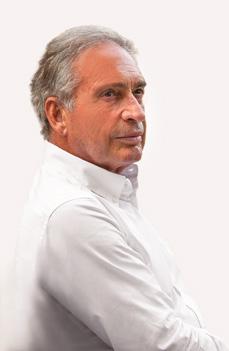
STRONG IMPROVEMENT IN ECONOMIC PERFORMANCE AND INVESTMENTS
In 2022, the group reported a consolidated turnover of €584 million, up more than 22% year on year, and an EBITDA of €154.3 million (compared to €126.3 million in 2021) . The turnover growth was mainly down to the strong performance of Italian products, while sales of US-made products showed more limited growth. Margins continued to benefit in 2022 from the actions taken in previous years to mitigate rising energy costs.
Investments amounted to €152 million , mainly financed by cash generation, a significant increase compared to the €41 million of 2021. The group’s plant and industrial renovation plan will continue through 2023 and includes major interventions at all the group’s factories (Fiorano and Mordano in Italy and Clarksville in the United States) with a focus on innovation, further reducing emissions and improving product quality.
As part of its extensive factory renovation and modernisation project, Florim USA invested around US $72 million , mainly for the installation of new equipment (including a new kiln), for starting the construction of a new warehouse and for the completion of a new office building.
The investments made in Italian factories, amounting to
I risultati ottenuti da Florim sul piano economico, sociale e ambientale, descritti nel 15° Bilancio di Sostenibilità, evidenziano i notevoli passi avanti compiuti dal gruppo ceramico italiano nel 2022. A sottolinearne la portata è lo stesso Presidente Claudio Lucchese che, nella lettera agli Stakeholder, conferma come “sul lato economico e finanziario, sia Florim che il Gruppo FinFloor hanno registrato i migliori risultati di sempre, grazie alle scelte strategiche compiute negli anni precedenti e al senso di responsabilità, alla dedizione e all’impegno di tutti i dipendenti. Nonostante l’instabilità geopolitica, i rincari energetici e le incertezze sul futuro dell’economia globale a cui abbiamo assistito nel 2022, i risultati del Gruppo sono stati affiancati dalla crescita di tutti gli indicatori di sostenibilità evidenziando significative performance e confermando la valenza strategica attribuita da sempre a questi aspetti fondamentali.”
PERFORMANCE ECONOMICHE E INVESTIMENTI IN FORTE RIALZO
Nel 2022 il fatturato consolidato del gruppo sì è attestato a 584 milioni di euro, in
crescita di oltre il 22% sull’anno precedente, e l’Ebitda è salito a €154,3 milioni (€126,3 milioni nel 2021). Sui ricavi ha influito soprattutto la buona performance dei prodotti made in Italy, a fronte di una crescita più contenuta della realtà americana; la marginalità ha beneficiato, anche nel 2022, delle azioni di mitigazione dell’aumento dei costi energetici intraprese negli esercizi precedenti.
Impressionante il volume di investimenti: 152 milioni di euro, prevalentemente finanziati dalla generazione di cassa, e in significativa crescita rispetto ai 41 milioni del 2021. Il gruppo ha intrapreso un piano di rinnovo impiantistico e industriale che sta proseguendo anche nel 2023 e che prevede importanti interventi in tutti gli stabilimenti (a Fiorano e Mordano in Italia e a Clarksville negli Stati Uniti) con logiche che mirano all’innovazione, ad un ulteriore contenimento delle emissioni e al miglioramento della qualità produttiva.
Florim USA, nell’ambito di un ampio progetto di rinnovo e ammodernamento degli stabilimenti, ha investito circa 72 milioni di dollari prevalentemente per l’installazione di nuovi impianti, tra cui un nuovo forno, oltre che per la realizzazione di un nuovo magazzino e il rifacimento della palazzina uffici.
Gli interventi realizzati nelle fabbriche italiane, pari a circa 53 milioni di euro, hanno interessato soprattutto la sede di
48 CWR 152/2023
Claudio Lucchese
about €53 million , mainly concerned the Mordano site for the construction of new production facilities and the expansion and modernisation of buildings. The plan is due to be completed in 2025 for an estimated total investment of around €100 million and includes a series of projects that will radically change the layout and look of the site. Other investments involved the newly acquired Stone Bathwear SpA SB for around €6 million and the group’s real estate business for about €25 million.
New flagship stores have continued to be launched, with the openings in Paris and Rome in 2022 joining those already present in Milan, Frankfurt, London, Moscow, New York, Singapore and Abu Dhabi. This year will also see the opening of the Los Angeles store, while the one in New York will change location.
Last year, the FinFloor Group’s factories produced a total of 33 million square metres of ceramic tiles and slabs , up from around 28 million sqm the previous year.
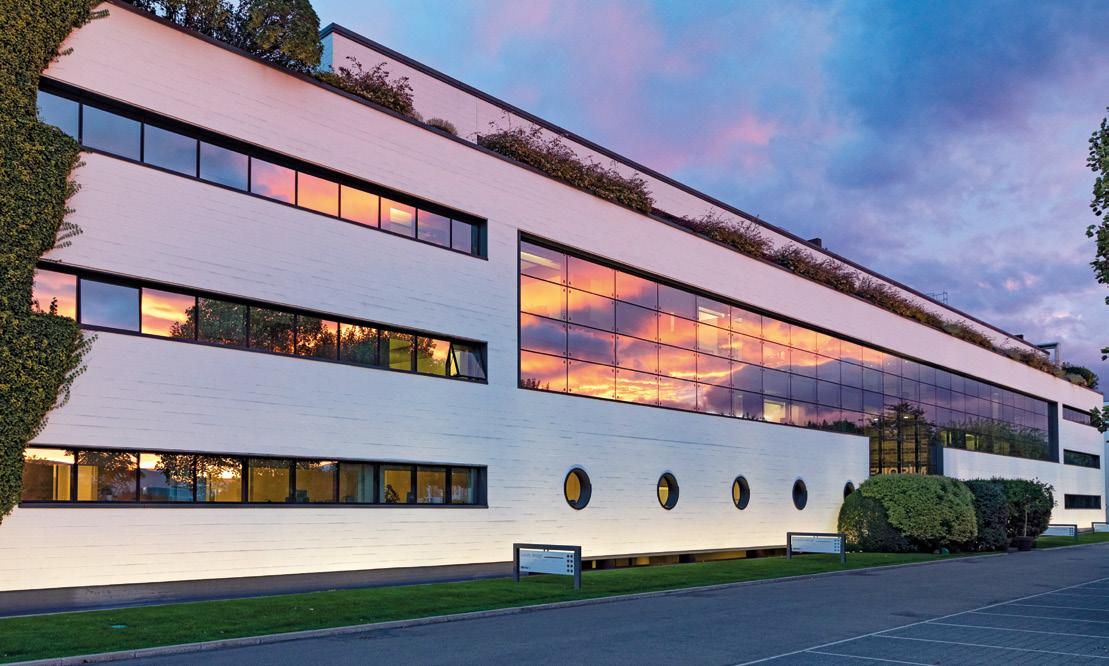
Mordano dove nel 2022 è iniziato il progetto di ampliamento della capacità produttiva, ristrutturazione e ammodernamento; il programma si concluderà nel 2025 con un investimento complessivo stimato intorno ai 100 milioni di euro e prevede una lunga serie di interventi che cambieranno radicalmente l’assetto e l’estetica del sito.
Gli altri investimenti hanno interessato la neoacquisita Stone Bathwear SpA SB per circa 6 milioni di euro e l’attività immobiliare del gruppo per circa 25 milioni di euro.
Non sono mancate le aperture di nuovi flagship store: nel 2022 sono stati inaugurati gli spazi di Parigi e Roma che si aggiungono a quelli di Milano, Francoforte, Londra, Mosca, New York, Singapore, Abu Dhabi; quest’anno è prevista anche l’apertura dello store di Los Angeles oltre allo spostamento di quello nella Grande Mela.
L’anno scorso gli stabilimenti del gruppo FinFloor hanno prodotto complessivamente 33 milioni di metri quadrati di piastrelle e lastre ceramiche, in aumento rispetto ai circa 28 milioni dell’anno precedente.
economics
49 CWR 152/2023
Florim headquarters in Fiorano Modenese - Sede Florim di Fiorano Modenese
FOCUS ON DECARBONISATION
The company’s commitment to sustainability is not limited to meeting regulatory requirements, but sets targets for continuous improvement in terms of product, process and supply chain management as part of its path towards decarbonisation.
Since 2011, the group has made sustainability-oriented investments amounting to €58 million, including approximately €8 million in 2022
In addition to the 129,388 tonnes of CO2 emissions avoided since 2012 (including 18,346 tonnes in 2022), Florim has launched a decarbonisation project that involves measuring the impact of the company’s activities with the aim of adopting a strategy for the progressive reduction of emissions. In addition, the e-mobility pilot project involving the use of electric vehicles to transport slabs between the Mordano and Fiorano plants became operational in May 2023 and will reduce CO2 emissions by about 560 tonnes/year (see CWR 151 p. 76).
Finally, the installation of a new 4.5 MWp photovoltaic plant in Mordano has given the company a unique energy production capability consisting of 64,000 m2 of solar panels and a total peak power of 12.3 MWp . On sunny days, the solar panels together with the two cogeneration plants will be able to produce up to 100% of the electricity needed to power the Italian sites. In 2022, self-generation of electricity reached 78% of total consumption, while the rest was purchased exclusively from certified renewable sources.
OBIETTIVO DECARBONIZZAZIONE
L’impegno aziendale per un impatto sostenibile non si limita a rispettare quanto previsto dalla normativa, ma si pone obiettivi di miglioramento continuo nel prodotto, nel processo e anche nella gestione della catena di fornitura, in un cammino virtuoso verso la decarbonizzazione.
Dal 2011 sono stati sostenuti investimenti mirati alla sostenibilità per 58 milioni di euro di cui circa 8 milioni nel corso del 2022.
In materia ambientale oltre alle 129.388 tonnellate di CO2 non emessa dal 2012 (di cui 18.346 nel 2022) Florim ha avviato un progetto di decarbonizzazione che prevede la misurazione dell’impatto delle attività aziendali al fine di implementare una strategia di progressiva riduzione delle emissioni.
Si ricorda, inoltre, che a maggio 2023 è partito anche il progetto pilota di e-mobility per il trasporto delle lastre tra gli stabilimenti di Mordano e Fiorano che, utilizzando veicoli elettrici, consentirà di ridurre le emissioni di CO2 di circa 560 tonnellate/annue (vedi CWR 151 p. 76).
Infine, l’implementazione di un nuovo impianto fotovoltaico a Mordano da 4,5 MWp ha portato l’azienda ad un assetto impiantistico unico, con 64.000 m2 di pannelli fotovoltaici e una potenza di picco complessiva di 12,3 MWp.

Questi, uniti ai due impianti di cogenerazione, consentono, nelle giornate di luce, di produrre fino al 100% del fabbisogno di energia elettrica delle sedi italiane.
Nel 2022 l’autoproduzione di energia elettrica ha raggiunto il 78% del totale consumato, il resto, acquistato, proviene solo da fonti rinnovabili certificate.
50 CWR 152/2023
Expansion and refurbishment project at Mordano site - Progetto di ampliamento e ristrutturazione sede di Mordano
Florim’s goals for the future include renewing its B Corp certification (obtained for the first time in 2020), further reducing the consumption of water, raw materials and emissions, and installing more solar panels.
SOCIAL RESPONSIBILITY
The group is continuing its Social responsibility initiatives with a focus on employees and the local community thanks to the contribution of the Ing. Giovanni Lucchese Foundation. Along with an extensive package of corporate welfare services, employees benefited from more than 25,400 hours of interdisciplinary training in 2022, which focused in particular on enhancing their digital and soft skills. All employees were invited to become “sustainability ambassadors” and to raise awareness of the importance of adopting more responsible behaviour.
Among the most interesting activities were those conducted by the Florim Health & Training Centre for doctors, employees and the local community (initiated in 2021).
In 2022 the company celebrated 10 years since the launch of the Summer Camp project and embarked on a collaboration with the MAXXI Museum in Rome. ◼
AN AWARD FOR BEAUTY AND SUSTAINABILITY

Florim was awarded first place in the international competition entitled “The Factory in the Landscape”, an urban design and landscape redevelopment contest promoted by the Italian Federation of Clubs for UNESCO.
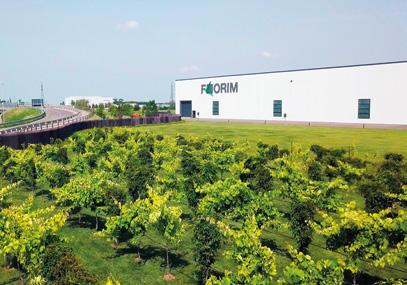
Nominated by the UNESCO Club of Modena, the company won the highest award for the private sector with the following citation: “A state-of-theart factory that has taken up and overcome the challenge of the ecological transition under difficult circumstances, greatly reducing its impact on the landscape while observing environmental criteria in keeping with the principles of sustainable development.”.
Tra gli obiettivi per il futuro, Florim segnala il rinnovo della certificazione B Corp (ottenuta per la prima volta nel 2020), l’ulteriore riduzione del
consumo di acqua, materie prime ed emissioni e l’implementazione di nuovi impianti fotovoltaici.
RESPONSABILITÀ SOCIALE
Continuano le attività anche in ambito di responsabilità sociale con focus sui dipendenti e sul territorio grazie anche al contributo della Fondazione Ing. Giovanni Lucchese. Oltre ad un ampio pacchetto di servizi di welfare aziendale, ai collaboratori sono state erogate nel 2022 più di 25.400 ore di formazione trasversale, con interventi finalizzati in particolare a rafforzare le competenze digitali e le soft skills. L’invito fatto a tutti i dipendenti è stato quello di diventare “ambasciatori della sostenibilità”, promuovendo l’importanza di adottare comportamenti più responsabili.
Tra le varie iniziative si segnalano anche quelle del Centro Florim salute&formazione rivolte a medici, dipendenti e territorio (iniziate nel 2021). Nel 2022 l’azienda ha festeggiato anche i 10 anni dall’avvio del progetto “Centri estivi” ed ha attivato una collaborazione con il Museo MAXXI di Roma. ◼
UN PREMIO ALLA BELLEZZA E ALLA SOSTENIBILITÀ
Florim ha conquistato il primo posto al concorso internazionale “La Fabbrica nel Paesaggio”, il contest di progettazione urbanistica e riqualificazione paesaggistica promosso dalla Federazione Italiana dei Club per l’UNESCO.
Candidata dal Club UNESCO di Modena, l’azienda ha ricevuto la più alta affermazione per il settore privato con la seguente motivazione “Fabbrica di ultima generazione che ha raccolto e vinto, in una difficile contingenza, la sfida della transizione ecologica, limitando fortemente l’impatto con il paesaggio, nel rispetto delle matrici ambientali, secondo i canoni dello sviluppo sostenibile”.
economics
51 CWR 152/2023
Compatta, collection by Federico Peri for the CEDIT brand
ITALCER: NEW INVESTMENTS AHEAD
ITALCER, NUOVI INVESTIMENTI IN VISTA
Paola Giacomini - p.giacomini@tiledizioni.it
The Italcer Group, which is one of Italy’s leading manufacturers of ceramic floor and wall tiles and bathroom furnishings, is also one of the industry’s fastest-growing players. It has achieved this growth by making seven acquisitions between 2017 and October 2022, giving rise to the luxury Italian ceramic hub that was the goal of the group ever since it was formed by Mindful Capital Partners (owned by Alberto Forchielli) and Graziano Verdi, CEO of Italcer.

Italcer now owns the Italian brands La Fabbrica, AVA, Elios, Rondine, Cedir, Bottega, Fondovalle, My Top, Tonino Lamborghini and Devon&Devon (bathroom furnishing), plus Spray Dry (spray-dried body) and the Spanish company Equipe Ceramicas, with its four production sites in the Castellón ceramic cluster. The Group has 1,064 employees and produced 20.3 million square metres of ceramic floor and wall tiles and large-format panels in 2022 (including 6 million in Spain), achieving aggregate revenues of €399.6 million, representing a rise of 36.4% on the 2021 figure of 293 million, and boosting its consolidated pro forma EBITDA to €85 million.
We spoke to Graziano Verdi, the Group’s CEO and co-founder, about growth goals and the initiatives that the entrepreneur and his team are working on, which include a possible stock market flotation and new operations abroad.
CWR: Let’s start with the stock exchange. What stage of the journey have you reached so far?
GRAZIANO VERDI: So far, we have started the dual-track process, which keeps two options open for us: either the stock-market flotation or the entry of a new majority shareholder. As far as our growth goals are concerned, I see the stock exchange as the most appropriate final landing zone, but not necessarily now. Knowing the dynamics and opportunities of this from my own past experience, I would stress that, if the conditions are right, the Italian stock exchange is a valuable ally.
Il Gruppo Italcer, tra i leader italiani nel settore delle pavimentazioni e dei rivestimenti in ceramica e dell’arredo bagno, si conferma tra i gruppi ceramici in più rapida espansione. Una crescita per acquisizioni - sette, tra il 2017 e ottobre 2022 – che hanno dato forma a quel polo del lusso della ceramica italiana che era l’obiettivo del gruppo fin dalla sua costituzione ad opera del fondo Mindful Capital Partners (di Alberto Forchielli) e di Graziano Verdi, CEO di Italcer.
Oggi fanno capo a Italcer i marchi italiani La Fabbrica, AVA, Elios, Rondine, Cedir, Bottega, Fondovalle, My Top, Tonino Lamborghini, Devon&Devon (arredobagno), oltre all’azienda Spray Dry (atomizzato) e alla spagnola Equipe Ceramicas con i suoi quattro siti produttivi nel distretto di
Castellón. Un gruppo di aziende che occupa 1.064 dipendenti e che nel 2022 ha prodotto 20,3 milioni mq di ceramica e lastre per pavimenti e rivestimenti (di cui 6 in Spagna) raggiungendo un fatturato aggregato di € 399,6 milioni, in crescita del 36,4% sui 293 milioni del 2021; l’Ebitda proforma consolidato è salito a € 85 milioni.
Con l’amministratore delegato e co-fondatore Graziano Verdi parliamo di obiettivi di crescita e delle iniziative su cui il manager e la sua squadra stanno lavorando. Tra queste, il possibile ingresso in Borsa e nuove operazioni all’estero.
CWR: Partiamo dalla Borsa. In quale fase del percorso vi trovate?
GRAZIANO VERDI: Al momento abbiamo avviato il processo di dual-track, mantenendo quindi aperte le due opzioni, o la quotazione o l’ingresso di un nuovo azionista di maggioranza. Per gli obiettivi di crescita che abbiamo, ritengo la Borsa l’approdo finale più appropriato e non necessariamente ora. Conoscendone le dinamiche e le opportunità per la mia passata esperienza, ribadisco che, se ci sono le condizioni, Piazza Affari è un ottimo alleato.
52 CWR 152/2023
Roma Celio by Elios
CWR: Over the past 4 years, Italcer has doubled its revenues, partly through acquisitions and partly through organic growth of over 15%, which is well above the growth of the market as a whole. What objective are you pursuing?
G. VERDI: Development by the external route is a good model if it is properly managed – I am thinking, for example, of the importance of working on the integration of skills, specific characteristics and specialisations – and provided they are backed up by targeted technological investments for organic growth. The two routes have always run parallel to each other in our business model, as we had planned ever since forming Italcer. Our results so far are more than satisfactory, so we will stick with this development model into the future, with a view to maintaining the brisk pace of growth that we have achieved in recent years.
CWR: Does this mean you already have a new deal in the pipeline?
G. VERDI: Regardless of the outcome of the dual-track process, we will be completing a new investment in Europe by the end of this year. This will enable us both to boost our production capacity and to take a second step on the path to internationalisation, in the wake of our experience with Equipe in Spain. But I cannot say more at the moment.

CWR: I know that, for some time now, your plans have included putting down roots in the United States, with a production facility in Tennessee. Is that still on the agenda?
G. VERDI: The American project was already under examination before we finalised our acquisition of Equipe, which therefore took priority; I can confirm, however, that an investment in the United States is still one of our medium-term goals.
CWR: Let’s talk about your 2022 results, which reached the target you were aiming for last summer, as well as revealing an increase in profit margins. Which parts of your strategy have worked best?
CWR: Negli ultimi 4 anni Italcer ha raddoppiato i ricavi, sia tramite acquisizioni, sia grazie ad una crescita organica di oltre il 15%, ben oltre la crescita del mercato. Qual è l’obiettivo cui punta?
G. VERDI: Lo sviluppo per linee esterne è un modello valido se opportunamente gestito – penso ad esempio all’importanza di lavorare sull’integrazione di competenze, specificità e specializzazioni – e se supportato da mirati investimenti tecnologici per la crescita organica. Nel nostro business model le due strade hanno sempre corso in parallelo, come del resto avevamo progettato fin dalla nascita di Italcer. I risultati sono ad oggi più che soddisfacenti, pertanto seguiremo questo modello di sviluppo anche in futuro, con l’obiettivo di poter confermare un ritmo di cre-
scita sostenuto come negli ultimi anni.
CWR: Questo significa che è già in vista una prossima operazione?
G. VERDI: Indipendentemente dall’esito del dual-track, entro quest’anno completeremo un nuovo investimento in Europa. Questo ci consentirà sia di potenziare la capacità produttiva, sia di compiere un secondo passo sul fronte dell’internazionalizzazione, dopo l’esperienza con Equipe in Spagna. Al momento, però, non posso aggiungere altro.
CWR: Restando in tema, tra i vostri progetti c’è da tempo anche lo sbarco negli Stati Uniti con un insediamento produttivo in Tennessee. È ancora in agenda?
G. VERDI: Il progetto americano era già allo studio prima che si concretizzasse l’acquisizione di Equipe, che quindi ha avuto la priorità; confermo però che un investimento negli Stati Uniti è tuttora uno dei nostri obiettivi a medio termine.
CWR: Parliamo dei vostri risultati 2022 che hanno raggiunto l’obiettivo cui puntavate già la scorsa estate e con un ulteriore progresso delle marginalità. Cosa ha funzionato meglio nella vostra strategia?

interview
53 CWR 152/2023
Talking to... Graziano Verdi, CEO of Italcer Group
Equipe Ceramicas
G. VERDI: There is no single element that stands out from the others in terms of effectiveness. On the one hand, we have a fully functioning team. Beyond that, I would say we have simply reaped the benefits of strategic choices that were made at the right time. I am thinking, for example, of how we dealt with the issue of raw materials from Ukraine, which we had already decided to replace in October 2021. Our partial hedging on gas has also enabled us to carry on operating with more peace of mind. Our business model, based on the specialisation of production facilities, is definitely working too. We have opted to focus on three segments – large-format panels up to 160x320cm, small and extra-small formats, and 2cm thick floor tiles for outdoor applications – with the individual production facilities serving the various Group brands. And in addition to these three types, in fact there is a fourth – the most important one – relating to the innovation of Advance, the name given to our patented antibacterial, antiviral and anti-polluting surfaces.
CWR: Do you plan to give equal weight to strengthening your four pillars?
G. VERDI: In terms of investment, I would say yes, they will all benefit in roughly equal measure. Large-format panels, made in three thicknesses (6mm, 8.5mm and 12mm), currently account for 10% of our total production, equating to around 2 million sq.m, whereas the outdoor segment will have to grow in parallel with the increasing demand we are seeing on the market. As far as very small formats are concerned, in other words the segment covered by Equipe in Spain and our Vetto facility in Italy, we had already stepped up production last year, in response to a big increase in sales, and we intend to keep stepping it up in the years to come.
CWR: Talking of Spain, are you satisfied with your acquisition there? And what is your view of the situation faced by the Spanish ceramic industry, which was hit much harder by the 2022 energy crisis than Italy was?
G. VERDI: We are delighted with the acquisition of Equipe. The company was not affected by the increase in production costs because it was able to offset them with higher selling prices. It is a leading player in the niche segment of small-format wall tiles, which command a high average selling price, and it closed 2022 with revenues of 80 million euros, as against 50 million in 2021, when it joined the Italcer Group.

On top of the lack of public aid to help overcome the 2022 energy crisis – which definitely put the Spanish industry at a disadvantage –I think that one of the problems faced by the
G. VERDI: Non vi è stato un elemento più determinante di altri. Da un lato c’è una squadra che funziona. Per il resto, direi che abbiamo raccolto i frutti di scelte strategiche definite per tempo. Penso ad esempio alla gestione del problema delle materie prime ucraine, che avevamo già deciso di sostituire nell’ottobre 2021. Anche l’hedging parziale sul gas ci ha consentito di continuare ad operare con maggiore tranquillità. Sicuramente sta funzionando il modello di business, basato sulla specializzazione delle fabbriche. Abbiamo scelto di focalizzarci su tre segmenti - le grandi lastre fino a 160x320 cm, i formati piccoli ed extra-small, e i pavimenti da 2 cm di spessore per l’outdoor – con i singoli stabilimenti che producono a servizio dei vari marchi del gruppo. A queste tre tipologie ne va aggiunta in realtà una quarta, la più importante, legata all’innovazione di Advance, ossia le nostre superfici brevettate antibatteriche, antivirali ed antinquinanti.
CWR: Agirete in egual misura per potenziare i vostri quattro pilastri?
G. VERDI: In termini di investimenti direi di sì, avranno un
peso piuttosto simile. Oggi la produzione di lastre rappresenta il 10% della nostra produzione totale, circa 2 milioni mq, realizzati in 3 spessori (6, 8,5 e 12 mm), mentre il segmento outdoor dovrà crescere parallelamente alla maggiore domanda che stiamo osservando sul mercato. Sul fronte dei formati piccolissimi, ossia il campo d’azione di Equipe in Spagna e del nostro stabilimento di Vetto in Italia, avevamo già aumentato la produzione l’anno scorso, in risposta ad un forte aumento di vendite e continueremo ad aumentarla nei prossimi anni.
CWR: Restando in Spagna, siete soddisfatti di quest’acquisizione? E come giudica la situazione dell’industria ceramica spagnola, che ha pagato la crisi energetica del 2022 ben più dell’Italia?
G. VERDI: Siamo contentissimi dell’acquisizione di Equipe. L’azienda non ha risentito dell’aumento dei costi di produzione perché è riuscita a compensarla con i prezzi, è leader nel segmento di nicchia dei rivestimenti di piccolo formato con un prezzo medio importante, e ha chiuso il 2022 con un fatturato di 80 milioni di euro, contro i 50 milioni del 2021, anno dell’ingresso nel gruppo Italcer.
Al di là della mancanza di aiuti pubblici per superare la crisi energetica del 2022 – fattore che ha sicuramente penalizzato l’industria spagnola -, credo che un problema del distretto di Castellón sia la scarsa differenziazione dell’offerta produttiva tra i tanti operatori, col risultato di generare una forte competizione che inevitabilmente rischia di essere giocata solo sul prezzo.
CWR: La preoccupa ora il brusco rallentamento della domanda globa-
54 CWR 152/2023
Honey Wood by La Fabbrica
Castellón ceramic cluster is a lack of clear differentiation between what the many manufacturers are offering, as this generates fierce competition that inevitably risks being played out on price alone.
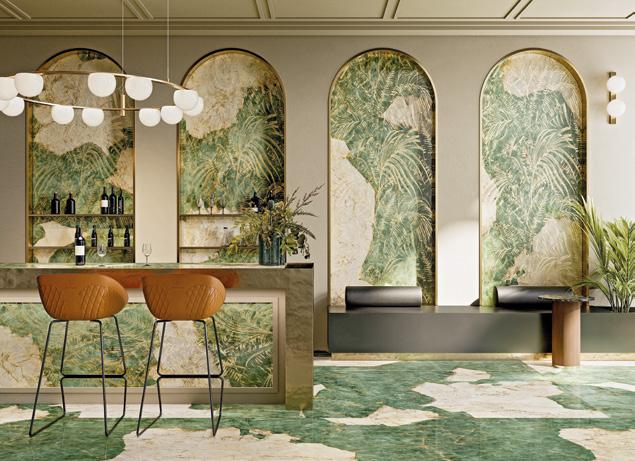
CWR: Are you worried now about the sharp slowdown in global demand that we are seeing in 2023, as forecast, and that is affecting Italy’s manufacturing sector, which saw its export volumes fall by a quarter in the first three months of the year?
G. VERDI: There is a slowdown, but we can deal with it, as we have shown we can in the past, because our sector is historically cyclical. It is true that Italian industry had to reduce its output in the first half of the year, by an estimated figure of about 20%, but Spain has had to cut back even more. Italcer closed the first quarter of the year with 4% growth in revenues, which is below the pace we are used to. But as I said before, cyclical trends are a constant in this sector. It is worth remembering that our customers’ warehouses were still well stocked thanks to the record purchases made in the first half of 2022, so an upturn in orders in the second half of this year is likely. Among other things, signs of recovery are appearing in the United States (where imports from Italy fell by 30% in the first quarter of 2023): by late March, US GDP had grown by 2%, which was above expectations, and the number of new-construction permits issued in May saw its second-largest increase after years of decline. Against this backdrop, we have other factors on our side too: our continuously expanding product mix and top-notch customer service will enable us to safeguard our average selling price.
CWR: The question of sustainability has been a central, not to say a priority item on your agenda. Could you tell us something about that?
G. VERDI: Product and process innovation and sustainability are now inseparable. Companies, especially if they are market leaders, cannot ignore either one or the other if they want to satisfy consumers, who have increasingly high expectations in terms of environmental protection. In the last two years alone, our Group has invested over 20 million euros in sustainability. One of the most significant initiatives was the installation of three latest-generation co-generators, which give us about 33,000 MWh, out of a total requirement of 57,000. Our most recent investment is the latest-generation Sacmi “Maestro” kiln, which came on-stream at our Fiorano Modenese plant in April. It incorporates hybrid hydrogen-methane technology, so it will be possible to fuel it with
le che, come era previsto, sta caratterizzando il 2023 colpendo anche il made in Italy, che nel primo trimestre ha perso un quarto dell’export in volume?
G. VERDI: Il rallentamento c’è, ma si gestisce, come abbiamo dato prova di saper fare anche in passato, dato che il nostro è un settore storicamente ciclico. È vero, il primo semestre l’industria italiana ha dovuto ridurre la produzione, stimiamo circa un 20% in meno, la Spagna ancora di più.
In Italcer abbiamo chiuso il primo trimestre dell’anno con una crescita dei ricavi del 4%, inferiore ai ritmi cui siamo abituati. Ma ripeto, l’andamento ciclico è una costante in questo comparto. Non dimentichiamo che i magazzini dei nostri clienti erano ancora ben forniti grazie agli acquisti record del primo semestre 2022, è quindi probabile una ripresa degli ordini nel secondo semestre di quest’anno. Fra l’altro, segnali di ripresa arrivano dagli stessi Stati Uniti, un mercato che nel primo trimestre 2023 aveva segnato un calo dell’import dall’Italia del 30%: a fine marzo, il PIL statunitense è cresciuto del 2%, oltre le attese, e il dato di maggio relativo ai per-
messi per le nuove costruzioni ha segnato il secondo maggior rialzo dopo anni di contrazione. In questo scenario ci supportano ulteriori elementi: un mix produttivo che continua ad innalzarsi e che, unito ad un servizio al cliente di altissimo livello, ci consentirà di salvaguardare il prezzo medio.
CWR: Negli ultimi anni il tema della sostenibilità è stato centrale, se non prioritario, nella vostra agenda. Ce ne parla?
G. VERDI: Innovazione e sostenibilità di prodotto e processo sono ormai inscindibili. Le aziende, a maggior ragione se leader nei loro segmenti, non possono prescindere né dall’una né dall’altra se vogliono soddisfare consumatori sempre più esigenti anche in tema di tutela ambientale. Solo negli ultimi due anni nel nostro gruppo abbiamo investito oltre 20 milioni di euro sulla sostenibilità. Tra gli interventi più significativi, l’installazione dei tre cogeneratori di ultima generazione che ci producono circa 33.000 MWh, su un fabbisogno complessivo di 57mila. Ultimo investimento in ordine di tempo è poi il forno Sacmi “Maestro” di ultimissima generazione, avviato in aprile nello stabilimento di Fiorano Modenese. È sviluppato con tecnologia ibrida idrogeno–metano, potrà quindi essere alimentato con un blend energetico al 50% di idrogeno, quando quest’ultimo sarà disponibile su larga scala, consentendo un risparmio in termini di consumi di gas nell’ordine di 1,5 milioni di metri cubi. Inevitabilmente, lo sguardo deve essere sempre rivolto al domani.
CWR: In questo senso rientra anche l’accordo siglato a marzo con Renovit, gruppo SNAM,
interview
55 CWR 152/2023
Magma Green Esotico by Tonino Lamborghini
an energy blend comprising 50% hydrogen, once hydrogen becomes available on a large scale, thereby saving something in the order of 1.5 million cubic metres of gas. Inevitably, we need to keep looking to the future.
CWR: Is that also why you decided to sign a deal with Renovit, of the SNAM Group, in March, aimed at obtaining further energy-efficiency gains from of your production facilities?
G. VERDI: Yes, and it marks another major step forward for us, which advances our renewables project. We had already installed about 2 MWp of photovoltaic plants last year. The agreement with Renovit is for the supply, installation and operation of 6,800 photovoltaic panels, which will cover an area of over 18,500 square metres at our production sites, adding a total of about 3.2 MWp. This will enables us to meet over 30% of our electricity needs with energy from renewable sources. Our target, however, is to reach a total of about 10 MWp in the next two years, which equates to 2,500 tonnes of CO2eq avoided per year.

CWR: The efforts you have made in recent years have also reaped prestigious awards, including first place in the Sustainability Award 2022 and the TOP 100 Eccellenze Italiane award. Are you pleased with these achievements?
G. VERDI: Here at Italcer Group, we currently invest over 3% of our revenues in Research & Development, we use over 50% of recycled raw materials in our production, and we are capable of recycling and recovering more than 99.8% of the waste we generate across our various plants. As well as winning these awards, which we are very proud of, our commitment to high environmental standards has also enabled us to join the “World Alliance for Efficient Solutions,” the NGO that promotes green energy worldwide and helps governments achieve their ESG goals. These results highlight how we are continuously increasing the sustainability and efficiency of our production processes, by making more efficient use of materials, saving more energy, cutting our emissions and managing our water and waste more carefully. It also helps motivate us to stick to this path and keep on improving. ◼
per l’ulteriore efficientamento energetico dei vostri siti produttivi.
G. VERDI: Certamente, ed è un altro passo per noi estremamente importante con cui portiamo avanti il progetto in tema di rinnovabili. L’anno scorso avevamo già installato circa 2 MWp di impianti fotovoltaici. L’accordo con Renovit prevede la fornitura, installazione e gestione di 6.800 pannelli fotovoltaici che copriranno una superficie di oltre 18.500 mq nei nostri siti produttivi, con una potenza complessiva aggiuntiva di circa 3,2 MWp. Questo ci permetterà di coprire oltre il 30% del nostro fabbisogno di elettricità con energia da fonti rinnovabili. Il nostro obiettivo, comunque, è di arrivare ad un totale di circa 10 MWp nei prossimi due an-

ni, vale a dire 2.500 tonnellate di CO2eq evitate all’anno.
CWR: Gli sforzi compiuti negli ultimi anni si sono tradotti anche in riconoscimenti prestigiosi, vedi il primo posto al Sustainability Award 2022 e il premio TOP 100 Eccellenze Italiane. È soddisfatto?
G. VERDI: Oggi in Italcer Group investiamo oltre il 3% dei ricavi in Ricerca e Sviluppo, utilizziamo oltre il 50% di materie prime riciclate nella nostra produzione e siamo in grado di riciclare e recuperare oltre il 99,8% degli scarti generati nei diversi stabilimenti. Oltre a questi riconoscimenti, di cui andiamo particolarmente fieri, il nostro impegno verso il mondo green ci ha permesso anche di entrare nella “World Alliance for Efficient Solutions”, l’Ong che promuove a livello mondiale l’energia verde e aiuta i governi a raggiungere i loro obiettivi ESG. Questi risultati sottolineano un percorso di continuo miglioramento in termini di sostenibilità ed efficienza dei processi produttivi, grazie ad un uso più efficiente dei materiali, un sempre maggiore risparmio energetico, una riduzione delle emissioni inquinanti e una gestione dell’acqua e dei rifiuti sempre più consapevole. È anche uno sprone a proseguire su questa strada e fare sempre meglio. ◼
56 CWR 152/2023 interview
Fotovoltaic roof - Tetto fotovoltaico


BRAZIL LOOKS TO THE FUTURE
IL BRASILE CHE GUARDA AL FUTURO
Paola Giacomini - p.giacomini@tiledizioni.it
In a market that has been contracting sharply since 2022, the huge success of Expo Revestir last March came as a bit of a surprise. Held for the first time in the new venue of Sao Paulo Expo, the number one trade fair for the Brazilian ceramic industry and the sector’s most important show anywhere in Latin America broke attendance records with more than 85,000 trade visitors (60% up on the previous year), including international professionals from 59 countries. The 62,000 square metre exhibition floor (twice the area available in 2022) was packed out as more than 300 brands presented their new 2023 collections at what has always been the first major business and networking event of the year.
“We weren’t expecting this degree of success, which was probably down to a number of different factors,” confesses
Benjamin Ferreira Neto , Past President and now Vice President of the Brazilian ceramic tile manufacturers’ association Anfacer. “Key aspects included the novelty of the new location and the new format of the International Forum Expo Revestir (FIER+), which provided more space for new themes such as art, innovation and sustainability alongside the traditional areas of retail, architecture and design. And despite the domestic market contraction, Expo Revestir remains the event that marks the beginning of the new year in our industry’s calendar, an unmissable opportunity for professionals such as architects and distributors to get a close look at the latest innovations.”
In un contesto di mercato segnato da una brusca contrazione iniziata già nel 2022, il grande successo di Expo Revestir lo scorso marzo è stato per certi versi inatteso. Organizzata per la prima volta nella nuova location del Sao Paulo Expo, la fiera di riferimento dell’industria ceramica brasiliana - e la più importante in America Latina - ha bruciato il record di affluenza, con oltre 85mila visitatori professionali (il 60% in più dell’anno precedente), tra cui anche operatori esteri da 59 paesi. Affollatissimi i 62mila mq di esposizione (il doppio del 2022), dove oltre 300 brand hanno presentato le nuove collezioni 2023 in quello che rappresenta, da sempre, il primo grande evento di affari e networking di ogni anno.
“Non ci aspettavamo un suc-
cesso di questa portata, che probabilmente è il risultato di diversi fattori”, ci confessa Benjamin Ferreira Neto, Past-President e ora Vice Presidente di Anfacer, l’associazione nazionale dei produttori brasiliani di piastrelle ceramiche: “Hanno contribuito certamente sia la novità della nuova location sia il nuovo format del Forum Internazionale Expo Revestir (FIER+) che ha dato più spazio a nuovi temi - arte, innovazione e sostenibilità -, in aggiunta a quelli trattati tradizionalmente, ossia retail, architettura e design. E poi sì, nonostante la contrazione del mercato domestico, Expo Revestir rimane l’evento che nel calendario del nostro settore segna di fatto l’inizio del nuovo anno, un appuntamento irrinunciabile per gli operatori – architetti e distributori – per osservare da vicino le novità”.
58 CWR 152/2023
Source / Fonte: Anfacer THE BRAZILIAN CERAMIC TILE INDUSTRY AND MARKET L’industria e il mercato brasiliano delle piastrelle ceramiche 2017 2018 2019 2020 2021 2022 % var 22/21 Production / Produzione - (Mill. m2) 867.4 871.9 909.4 840.1 1,048.6 926.6 -11.6% Total sales / Vendite totali - (Mill. m2) 848.8 869.6 897.6 920.1 1,032.2 849.5 -17.7% Exports (volume) - (Mill. m2) 90.4 100.5 101.8 94.1 130.4 113.1 -13.2% Exports (value / valore) - (Mill. USD) 344 368 348 330 488 513 +5.0% Imports - (Mill. m2) 7.1 6.5 5.5 3.8 3.7 2.1 -43.2% Domestic consumption / Consumo nazionale - (Mill. m2) 758.4 769.2 795.7 826.0 901.9 736.4 -18.3%
In what is expected to be another challenging year, we discussed the health of Brazil’s ceramic industry with Benjamin Ferreira Neto and Mauricio Borges, CEO of Anfacer and Expo Revestir.
CWR: After an exceptional 2021, Brazilian tile sales experienced a severe slowdown in 2022. What were the causes of this?
BENJAMIN FERREIRA NETO: The fall in demand in the Brazilian domestic market – our most important outlet as it absorbs between 80% and 90% of our production – began to be felt as early as January 2022 in parallel with the rise in inflation (which reached 10% last year but is now falling) and in interest rates, which the Brazilian Central Bank raised to the current figure of 13.75%, the highest level since 2016. After growing steadily over the years to reach a record 902 million square metres in 2021, Brazilian tile consumption plummeted by 18.3% to 736 million square metres last year. To avoid accumulating excessive inventory, production was also reduced by around 12% to 929.6 million sqm.
CWR: What about exports?
B. FERREIRA NETO: Total exports amounted to 113 million sqm, lower than the record figure of 130 million sqm reached in 2021 but still the second best result ever in volume.
Con Benjamin Ferreira Neto e Mauricio Borges, CEO di Anfacer ed Expo Revestir, approfondiamo lo stato di salute dell’industria ceramica brasiliana in un anno che si preannuncia ancora complesso.

CWR: Dopo un brillante 2021, il 2022 ha segnato una pesante battuta d’arresto per la piastrella brasiliana. Ce ne descrive le cause?
BENJAMIN FERREIRA NETO: In Brasile il calo della domanda sul mercato interno - il più significativo per noi dato che assorbe tra l’80 e il 90% della nostra produzione – si è sentito già a partire da gennaio 2022, parallelamente all’aumento dell’inflazione (al 10% l’anno scorso, ora già in calo) e dei tassi di interesse che la Banca Centrale Brasiliana
ha portato al 13,75%, il livello più alto dal 2016 e confermato tuttora. Il consumo nazionale di piastrelle, che aveva seguito uno sviluppo costante negli anni fino a toccare il record dei 902 milioni mq nel 2021, è crollato l’anno scorso del 18,3% a 736 milioni mq. Per evitare eccessivi stock di magazzino, anche la produzione è stata ridotta di circa il 12% a 929,6 milioni mq.
CWR: L’export ha tenuto meglio.
B. FERREIRA NETO: Le esportazioni totali sono state pari a 113 milioni mq, in calo rispetto al record di 130 milioni del 2021, ma pur sempre il secondo miglior risultato di sempre in volume. In valore, invece, abbiamo raggiunto i 513 milioni di dollari, con un +5% sul 2021
interview
59 CWR 152/2023
Source / Fonte: Anfacer THE MAIN BRAZILIAN CERAMIC TILE EXPORTS MARKETS I maggiori mercati export della ceramica brasiliana 2020 2021 2022 % Var. 2022/20211 Jan - Mar. 2023 Mill. m2 Mill. USD Mill. m2 Mill. USD Mill. m2 Mill. USD Volume Value Valore Mill. m2 Mill. USD USA 22.1 111.1 23.5 115.9 20.6 119.3 -12.3 +2.9 3.2 19.4 Paraguay 15.1 39.8 19.9 64.1 17.3 67.1 -13.1 +4.7 4.0 13.7 Argentina 4.2 23.8 8.3 46.4 9.6 67.0 +15.7 +44.4 1.6 11.1 Colombia 3.7 11.5 11.1 34.3 8.6 32.4 -22.5 -5.5 1.0 3.5 Chile 5.6 17.7 13.3 44.8 8.4 34.3 -36.8 -23.4 1.0 4.0 Dominican Rep. 7.1 15.9 10.0 27.3 8.0 25.7 -20.0 -5.9 1.0 2.8 Uruguay 5.4 14.4 6.2 21 5.9 23.0 -4.8 +9.5 1.4 5.2 Bolivia 2.4 9.0 5.2 19.7 5.3 25.8 +1.9 +30.1 0.9 5.6
Talking to... Benjamin Ferreira Neto and Mauricio Borges
In value terms we reached $513 million, 5% more than in 2021 thanks to a rise in average price from $3.74/sqm to $4.53/ sqm. In the United States, our largest export market, the sharp increase in transport costs made Brazilian products less competitive, resulting in a decline in sales in volume from 23.5 to 20.6 million sqm, although sales increased by 2.9% in value to US $119 million.
CWR: What impact have the energy crisis and rising production costs had on your industry?
B. FERREIRA NETO: In 2022, the cost of gas in Brazil increased by 60%, whereas electricity costs rose by just 20% due to locked-in contracts. We were unable to pass on the higher costs to the selling price of our products because we had already raised our prices at the end of 2021 after the year’s very strong demand had depleted warehouse stocks. This year, with energy costs falling and the market still sluggish, we are lowering our sales prices again.
CWR: What is your outlook for 2023?
B. FERREIRA NETO: In March, Expo Revestir recorded a positive trend in orders, but we believe that this does not change the general market situation, which as I said is still slowing down. Based on the first quarter results, we are expecting to see a further contraction in both domestic and export sales in 2023 and consequently also a further decline in total production. The Brazilian real estate market is currently hampered by very high mortgage rates, which are slowing down house
grazie ad un prezzo medio salito da 3,74 $/mq a 4,53 $/mq. Negli Stati Uniti, il nostro maggiore mercato estero, il forte aumento dei costi di trasporto ha reso meno competitivo il prodotto brasiliano, determinando un calo di vendite in volume da 23,5 a 20,6 milioni mq, pur segnando un aumento del 2,9% in valore a 119 milioni di dollari.
CWR: Qual è stato l’impatto della crisi energetica e dell’aumento dei costi di produzione per il vostro comparto?
B. FERREIRA NETO: Nel 2022 il costo del gas in Brasile è cresciuto del 60% mentre l’aumento per l’energia elettrica è stato del 20% grazie ai contratti bloccati. Non ci è stato possibile trasferire i maggiori costi sul prezzo di vendita dei nostri prodotti perché i listini erano già stati rialzati a fine 2021, quando la fortissima
domanda di quell’anno aveva svuotato i magazzini. Quest’anno, con i costi energetici nuovamente in calo e un mercato ancora poco dinamico, i nostri prezzi di vendita si stanno riabbassando.
CWR: Che prospettive avete per questo 2023?

B. FERREIRA NETO: Expo Revestir, a marzo, ha registrato un buon andamento di ordini, che tuttavia crediamo non cambi il generale contesto di mercato, come dicevo ancora in frenata. Sulla base dell’andamento del primo trimestre, prevediamo un 2023 ancora in calo per quanto riguarda le vendite sia sul mercato nazionale sia all’esportazione, di conseguenza ci aspettiamo una nuova contrazione anche in termini di produzione totale. Al momento il mercato immobiliare brasiliano è penalizzato da tassi sui mutui elevatissimi che frenano l’acquisto di

60 CWR 152/2023
purchases and consequently ceramic tile sales, but we are convinced that the recovery will begin as soon as borrowing costs start to fall. Many of us believe that signs of improvement will emerge as early as the second half of this year. In this scenario, the Lula government has also made a positive contribution by reviving the Minha Casa Minha Vida social housing programme to combat the country’s chronic housing shortage. For example, in the metropolis of São Paulo alone, the planned investment for 2023-2024 is around R$8-9 billion.
CWR: What is your medium-term outlook?
MAURICIO BORGES: Despite the current situation, our industry is strongly focused on the future. As part of a forward-looking approach, we are investing energy and resources in a ten-year programme launched by Anfacer in 2020 and based on three pillars: sustainability, competitiveness and design. In terms of environmental sustainability, the sector has already achieved some of the world’s lowest levels of gas, electricity and water consumption and is currently introducing biomethane. It is also looking into the potential future use of hydrogen. As for process and design technology, we are also well positioned to compete in international markets with innovative materials. So yes, we can be confident about the future of our companies and a market whose appeal has been demonstrated over the years by the arrival of major multinational groups, which in turn have contributed to raising the industry’s level of expertise. ◼
case e quindi di ceramica, ma siamo convinti che la ripresa inizierà non appena il costo del denaro comincerà a scendere. E non siamo in pochi a ritenere che il secondo semestre di quest’anno mostrerà già segni di miglioramento. In questo scenario è positiva anche l’azione del governo Lula che ha riavviato il programma di edilizia residenziale sociale “Minha Casa Minha Vida” per contrastare il cronico deficit abitativo del Paese: nella sola metropoli di San Paolo, ad esempio, l’investimento previsto per il 2023-2024 si aggira sugli 8-9 miliardi di Real.
CWR: Qual è invece la vostra visione a medio termine?

MAURICIO BORGES: Nonostante la situazione contingente, il nostro settore è molto focalizzato sul futuro. In maniera lungimirante, stiamo inve-
stendo energie e risorse in un programma decennale, avviato da Anfacer nel 2020, che poggia su tre pilastri, la sostenibilità, la competitività e il design. Dal punto di vista della sostenibilità ambientale parliamo di un comparto che, ad esempio, ha già raggiunto livelli di consumo di gas, energia elettrica e acqua tra i più bassi a livello globale e dove si sta già introducendo il biometano mentre è allo studio il futuro impiego di idrogeno. Anche in tema di tecnologie di processo e di design siamo ampiamente in grado di competere sui mercati internazionali con materiali innovativi. Quindi sì, possiamo dire di essere fiduciosi sul futuro di un sistema di imprese e di un mercato la cui attrattività è stata confermata negli anni dall’ingresso dei maggiori gruppi multinazionali del settore che a loro volta hanno contribuito ad innalzare il know-how dell’industria. ◼

interview
61 CWR 152/2023
Digitisation: what’s in store?
Digitalizzazione, cosa attendersi?
Danilo Mascolo, BI-REX (Bologna, Italy)
The pervasive capacity of digitisation, fuelled by rapid advances in technology, is transforming the way we live, work and communicate, by profoundly changing how we interact with the world around us. We are witnesses, and increasingly protagonists, of an era in which digital technologies are being integrated into traditional production resources, putting data and its exploitation at the heart of processes, and working in conjunction more traditional systems to create goods, products and services. The transformation is involving all sectors indiscriminately (including the most traditional, craft-based trades), thus opening up new opportunities for creativity and artistic expression.
Substantial private investment - backed up by state tax incentives - and technological experimentation are turning into new organizational models in which Information and Communication Technology merges with Operation Technology and the organisation of work. This is spawning ever smarter and more adaptive new processes and production scenarios, which were the stuff of dreams until just a few years ago. This is possible because technologies build upon each other exponentially like individual bricks in complex architectures.
In these complex architectures, and against the constantly evolving backdrop of digitisation, all of the technologies involved in Industry 4.0 are making a contribution, in the same way that natural language processing models are playing a significant role in speeding up the transformation, by enabling a significant improvement in communication between people, computers and machines. These models are capable of understanding, interpreting and generating text more and more accurately. They are bringing greater efficiency to information management, they are improving communication between individuals, and they are making it possible to create intelligent virtual assistants that provide immediate answers to users’ questions, by automating processes, analysing large amounts of textual data and providing tailored solutions to customers. These models have the ability to extract useful information from large volumes of text, enabling companies to gain valuable insights and make decisions based on the data generated by individuals and subject experts. This in turn strengthens the description of context and empowers models of hybrid intelligence in which machines can understand signals generated by protocols, thanks in part to the valuable linguistic contribution of experienced operators.
La capacità pervasiva della digitalizzazione alimentata da veloci progressi tecnologici sta trasformando il nostro modo di vivere, lavorare e comunicare modificando profondamente come interagiamo con il mondo che ci circonda. Siamo testimoni, e sempre più spesso protagonisti, di un’epoca in cui le tecnologie digitali integrano le risorse produttive tradizionali portando il dato e la sua valorizzazione al centro dei processi e affiancando i mezzi più tradizionali utilizzati per creare beni, prodotti e servizi. La trasformazione coinvolge indistintamente tutti i settori (inclusi i mestieri più artigianali e tradizionali), aprendo nuove possibilità alla creatività e all’espressione artistica. Gli imponenti investimenti privati - sostenuti anche da misure di defiscalizzazione degli Stati - e la sperimentazione sul campo delle tecnologie si stanno trasformando in nuovi modelli organizzativi in cui l’Information e Communication Technology si fonde con le Operation Technology e con l’organizzazione del lavoro; si definiscono così nuovi processi e scenari produttivi sempre più smart ed adattivi, che fino a qualche anno fa sembravano appartenere solo all’immaginazione. Questo è possibile perché le tecnologie si compongono esponenzialmente come singoli mattoni di architetture complesse.
In queste architetture complesse, ed in un contesto di digitalizzazione in costante evoluzione, tutte le tecnologie di Industria 4.0 stanno dando un contributo, così come i modelli di elaborazione del linguaggio naturale stanno svolgendo un ruolo significativo nell’accelerare la trasformazione, consentendo un notevole miglioramento nelle comunicazioni tra persone, computer e macchine.
Questi modelli sono in grado di comprendere, interpretare e generare testo in modo sempre più accurato; apportano una maggiore efficienza nella gestione delle informazioni, migliorano la comunicazione tra individui e consentono la creazione di assistenti virtuali intelligenti che forniscono risposte immediate alle domande degli utenti, automatizzando processi, analizzando grandi quantità di dati testuali e fornendo soluzioni personalizzate ai clienti. Questi modelli sono in grado di estrarre informazioni utili da grandi volumi di testo, consentendo alle aziende di ottenere insights preziosi e di prendere decisioni basate sui dati prodotti dalle persone e da esperti di dominio; questo rafforza quindi la descrizione del contesto e abilita modelli di intelligenza ibridi in cui la macchina è in grado di capire segnali prodotti da protocolli anche grazie al prezioso contributo linguistico di operatori esperti.
62 CWR 152/2023
Using beyond-5G mobile technologies, the Internet of things and of processes is extending its reach, like an invisible grid connecting every aspect of our lives and production cycles, making every environment safer, more comfortable and more efficient, while helping achieve sustainability goals in line with the People, Planet, Profit principle.
Augmented, virtual and extended reality will make it possible to explore processes, assist customers and foster co-design processes across the entire value chain, thereby improving experiences, opening the doors to new forms of education and discovery, and renewing the processes of generating shared value.
Blockchain technology , with its immutable and decentralised structure, will usher in a new era of security, traceability and transparency, with a major impact on supply chains and data monetisation mechanisms, by facilitating secure transactions and reducing the risk of fraud and manipulation.
Collaborative robotics is set to become more and more mobile and autonomous. Interconnected with management sys-

L’Internet delle cose e dei processi attraverso tecnologie mobili beyond 5G si estende ulteriormente come un reticolo invisibile che collega ogni aspetto delle nostre vite e dei cicli produttivi, rendendo ogni ambiente più confortevole, sicuro ed efficiente e contribuendo al raggiungimento di obiettivi di sostenibilità in logica People, Planet, Profit.
La realtà aumentata, virtuale ed estesa, consentirà di esplorare processi, assistere clienti e alimentare processi di co-progettazione lungo l’intera catena del valore, migliorando le esperienze, aprendo le porte a nuove
forme di educazione e scoperta, rinnovando i processi di generazione del valore condiviso.
La tecnologia blockchain, con la sua struttura immutabile e decentralizzata, offrirà una nuova era di sicurezza, tracciabilità e trasparenza con un impatto significativo sulle catene di approvvigionamento e sui meccanismi di monetizzazione del dato, alimentando transazioni sicure, riducendo il rischio di frodi e manipolazioni.
La robotica collaborativa sarà sempre più mobile e autonoma. Interconnessa ai sistemi gestionali, potrà affiancare gli operatori esperti in asservi-
63 CWR 152/2023
FOCUS ON industry 4.0
tems, it will work alongside operators with experience in servomechanisms, quality control and a host of other functions, thus generating useful data for process improvement and producing quality reports in which process elements (such as production and resource consumption data) can be tracked in precise detail. Robotic arms can be programmed to form and manipulate shapes, so as to ensure precision and repeatability in machining. This not only reduces the manual workload, but also makes it possible to create complex shapes that are difficult to achieve entirely through human input.
And the heart of this digital revolution is made up of artificial intelligence models that not only optimise processes, but also process natural language to enable us to interact with the world of ones and zeros, in a similar way to how we interact with humans. Thanks to these generative models, we can communicate with processes, products and services, whether hosted by IT layers or on the shop-floor of operation technologies or serving customers naturally and intuitively. So we can offer and receive services and instant support, and we can answer questions to help operators, customers and suppliers solve problems quickly and accurately, while at the same time fuelling new creativity and cutting waiting times.
Artificial intelligence models, especially the ones based on machine learning, are already being used to improve design and manufacturing. By analysing data and learning from existing models, AI systems can generate unique new designs and patterns, giving designers an endless source of inspiration. These AI models can also suggest ways to optimise manufacturing processes, thereby improving quality and reducing waste.
But digitisation doesn’t end here . The future in store for us is a future in which models of artificial intelligence and industrial automation will be increasingly interconnected and interdependent. Powered by data acquired from the field in real time and data produced by intelligent models and simulators, they will implement processes by means of cyber-physical systems. Within this context, IT layers will provide work-task support and expert systems will fulfil the function of reliable assistants that understand needs and communicate with people. Time spent on repetitive tasks will be freed up, enabling organisations to shift their activities upstream and downstream of the value chain, namely towards Research & Development and the market, whose needs will be anticipated more and more effectively. ◼
BI-REX is the Italian Competence Center specialised on Big Data, funded by the Italian Ministry of Enterprises and Made in Italy within the Industry 4.0 National Plan. It is a Public Private Partnership that gathers 60 players among Universities, Research Centers and Companies of excellence in order to support the adoption of Industry 4.0 technologies and support the technology transfer, through a varied series of services.
menti, controllo qualità e molte altre funzioni, generando dati utili per migliorare i processi e producendo report di qualità in cui elementi di processo (come dati di produzione e consumo di risorse) sono tracciabili con dettaglio e precisione. Braccia robotiche possono essere programmate per manipolare e modellare le forme, garantendo precisione e ripetibilità nella lavorazione. Questo non solo riduce il carico di lavoro manuale, ma consente anche di realizzare forme complesse difficilmente ottenibili solo con operazioni svolte dall’uomo.
E nel cuore di questa rivoluzione digitale pulsano i modelli di intelligenza artificiale che non si limitano ad ottimizzare i processi, ma che, elaborando il linguaggio naturale, ci permettono di interagire con un mondo fatto da zeri e uno in modo simile a come lo facciamo con gli esseri umani: grazie a questi modelli generativi, possiamo comunicare con i processi, i prodotti e i servizi, siano essi ospitati da layer IT o presenti sullo shop-floar delle operation technology o a servizio del cliente in modo naturale e intuitivo. Possiamo quindi offrire e ricevere servizi, assistenza immediata, rispondere alle domande aiutando operatori, clienti e fornitori a risolvere problemi con prontezza e precisione e, allo stesso
tempo, alimentare nuova creatività riducendo tempi e attese. I modelli di intelligenza artificiale, in particolare quelli basati sull’apprendimento automatico, sono già utilizzati per migliorare la progettazione e la produzione. Attraverso l’analisi dei dati e l’apprendimento dai modelli esistenti, i sistemi di AI possono generare nuovi disegni e pattern unici, offrendo ai progettisti una fonte infinita di ispirazione. Questi modelli AI possono anche suggerire ottimizzazioni nel processo di produzione, migliorando la qualità e riducendo gli sprechi.
Ma la digitalizzazione non si ferma qui. Il futuro che ci si prospetta è un futuro nel quale modelli di intelligenza artificiale e automazione industriale saranno sempre più interconnessi e interdipendenti, alimentati da dati estratti in tempo reale dal campo e dati prodotti da modelli e simulatori intelligenti e attueranno processi attraverso sistemi cyber-fisici. In questo contesto, layer IT offriranno opportunità di affiancamento e sistemi esperti saranno assistenti affidabili in grado di comprendere necessità e comunicare con le persone; si libererà tempo da compiti ripetitivi e le organizzazioni potranno spostare le attività a monte e a valle della catena del valore, ossia l’attività di Ricerca & Sviluppo e il mercato, di cui si anticiperanno sempre più i bisogni. ◼
BI-REX è il Competence Center nazionale specializzato sui Big Data, istituito dal Ministero delle Imprese e del Made in Italy nel quadro del piano governativo Industria 4.0. Si configura come una Public Private Partnership che raccoglie 60 player tra Università, Centri di Ricerca e Imprese di eccellenza, in grado di offrire supporto strategico e operativo alle imprese orientate all’innovazione e alla trasformazione digitale. La mission di BI-REX è quella di favorire l’adozione delle tecnologie abilitanti Industria 4.0 e le operazioni di trasferimento tecnologico, attraverso una vasta serie di servizi.
64 CWR 152/2023 industry 4.0 FOCUS ON

The new business models of digital servitization
I nuovi modelli di business della digital servitization
Mario Rapaccini, PhD, Università di Firenze e Direttore Scientifico ASAP
To understand why competition between industrial companies is becoming increasingly focused on smart products, we must first examine the concept of servitization. The term “servitization” refers to a strategy in which manufacturing companies complement their product portfolios with advanced services and integrated product-service solutions. This strategy can be observed in all industrial sectors, whether B2B or B2C, such as the automotive industry where vehicle manufacturers also provide mobility solutions based on long-term rental formulas. Among plant and machinery manufacturers, we find similar offerings referred to as “Equipment-as-a-Service” For example, so-called “heat-as-a-service” offers are gaining ground in the heating, energy and gas sector, while “pay-perwash” solutions in which a dishwasher or washing machine is rented together with a supply of soaps and detergents are becoming fashionable among household appliance manufacturers.
THE SUPPLY OF GOODS BECOMES A DEDICATED SERVICE
Academics have been studying this phenomenon for more than 20 years and have come to the conclusion that, when performed correctly, servitization can act as a driver of business growth and differentiation that strengthens leadership positions, stabilises cash flows and protects against economic headwinds and downturns.
As always, the shift is not just organisational and technological but first and foremost cultural in nature. Traditional companies tend to have a product-centric culture in which product sellers, designers and manufacturers are seen as the key players while customer service is considered a “necessary evil” required to complete the sale of the product. This differs markedly from a “servitized” company, where the focus shifts to the customer’s needs and the company’s ability to deliver integrated solutions capable of meeting those needs efficiently and effectively, however specific and personalised they are. A servitized company offers advanced services in which the manufacturer of the good is also the solution provider, and is contractually obliged to guarantee key levels of performance in customer’s processes (whether a business or a household). Examples of this are “full-risk” contracts, which establish risk-reward sharing mechanisms for achieving certain performance targets (e.g. production volumes, availability, quality, etc.) and in which the supplier is responsible for deciding on preventive and corrective maintenance policies.
Per comprendere perché oggi la competizione delle imprese industriali sia sempre più basata su prodotti smart, ovvero connessi e intelligenti, occorre partire dal concetto di servitizzazione.
Con il termine “servitizzazione” si intende il processo di trasformazione dell’impresa manifatturiera che, per finalità strategiche, integra in modo sempre più rilevante la propria offerta di prodotti con servizi avanzati e soluzioni integrate prodotto-servizio. Rileviamo la presenza di questa trasformazione in ogni settore industriale, sia in ambito B2B che B2C, ad esempio, nell’industria automobilistica, dove i produttori sono anche provider di soluzioni di mobilità con formule di noleggio a lungo termine. Tra i costruttori di impianti e macchinari, troviamo offerte simili denominate “Equipment-as-a-Service”. Nel settore della termotecnica, dell’energia e del gas stanno prendendo piede le offerte denominate “heat-as-a-service”, mentre tra i produttori di elettrodomestici è di moda il “pay-perwash”, dove la lavastoviglie o lavatrice viene noleggiata combinando la fornitura di saponi e detergenti.
LA FORNITURA DI UN BENE DIVENTA UN SERVIZIO DEDICATO
Gli accademici studiano questo fenomeno da oltre vent’an-
ni e hanno appurato che, se ben sviluppata, la servitizzazione è fattore di crescita e differenziazione del business e favorisce il consolidamento di posizioni di leadership, stabilizza i cash flows e protegge da crisi e congiunture.
Il cambiamento è come sempre culturale, prima che organizzativo e tecnologico. L’azienda tradizionale è dominata da una cultura prodotto-centrica. Gli eroi sono i venditori, progettisti e fabbricatori del prodotto, mentre il servizio al cliente è spesso un “male necessario” per concludere la vendita del prodotto. Al contrario, nell’azienda “servitizzata” il focus si sposta sui bisogni del cliente e sulla capacità dell’impresa di fornire soluzioni integrate che soddisfano tali bisogni, quantunque specifici e personalizzati, in modo efficiente ed efficace. Una azienda servitizzata offre servizi avanzati, tramite cui il produttore del bene è anche il provider della soluzione, e si impegna contrattualmente a garantire prestazioni chiave nei processi del cliente (di business o domestici). Ne sono esempi i contratti “full-risk”, che stabiliscono i meccanismi di risk-reward sharing per il raggiungimento di determinate prestazioni (es. volumi prodotti, disponibilità, qualità, etc.), in cui è responsabilità del fornitore decidere in merito alle politiche di manutenzione preventiva e correttiva che spesso sono a suo carico.
66 CWR 152/2023
DIGITALIZATION MAKES SERVITIZATION POSSIBLE

The application of digital and Industry 4.0 technologies to products and services is accelerating the process referred to by academics as Digital Servitization
A typical example of the way in which technology is a means to servitization rather than an end in its own right is that of RollsRoyce Plc, a leading manufacturer of aviation reactors. A few decades ago, American Airlines asked Rolls-Royce to provide an innovative, all-inclusive maintenance service that would include spare parts, equipment, and overhaul and maintenance work in the fee. A payment mechanism was established based on the engine’s number of flight hours (the well-known “Power by the hour” contract). This service took years to set up in terms of new processes and systems for efficient coordination of the global service network, for managing engine and aircraft fleet data, and for developing diagnostic and prognostic models. Today this Total Care programme is facilitated by industrial internet platforms, sensor networks and cloud computing infrastructures that, with the support of predictive algorithms, allow for cybersecure monitoring of the engine status in order to decide on the best intervention policy. This means that a smart product is actually a mechanism for delivering smart digital services and the product-service combination becomes a digital and smart system consisting of the product, the service and a great deal of software (embedded or otherwise).
In the case of Rolls-Royce, the IoT enables a two-way exchange of data between the smart product and all parties involved in or affected by the service processes (airlines, OEMs, TPMs and airport service providers, to mention just a few). Furthermore, algorithms can be used to monitor and verify engine operation and to optimise the process as a whole, thereby determining the most suitable machine shutdown time. Finally, the collection, archiving and analysis of operational and performance data, cou-
LA DIGITALIZZAZIONE RENDE POSSIBILE LA SERVITIZZAZIONE
L’applicazione delle tecnologie digitali e dell’Industria 4.0 a prodotti e servizi sta accelerando il fenomeno denominato dagli studiosi Digital Servitization
Un caso emblematico di come la tecnologia sia un mezzo per la servitizzazione, e non un fine, è quello della Rolls Royce Plc, leader nella produzione di reattori per aviazione. Alcuni decenni fa American Airlines chiese alla Rolls-Royce di fornire un servizio di manutenzione innovativo e onnicomprensivo, che includesse nel canone le parti di ricambio, le attrezzature e gli interventi di revisione e manutenzione. Fu definito un meccanismo di pagamento basato sulle ore di volo del motore (il noto “Power by the hour”).
Questo servizio richiese anni per approntare nuovi processi e sistemi per l’efficiente coordinamento della rete di service globale, per la gestione dei dati della flotta di motori e velivoli, per lo sviluppo di modelli diagnostici e prognostici. Tale programma di Total Care è oggi abilitato dalle piattaforme di industrial internet, da reti di sensori, da infrastrutture di cloud computing che, in modo cybersicuro, consentono di monitorare lo stato del motore per decidere la migliore politica di intervento, grazie al supporto di algoritmi predittivi. Ecco, quindi, che il prodotto Smart è in realtà un meccanismo per erogare servizi digitali (smart services), e che il sistema prodotto-servizio diventa un sistema digitale e smart, composto dal prodotto, dal servizio, e da tanto, tanto software (embedded, ma non solo).
Nel caso Rolls Royce, l’IoT abilita lo scambio dati bidirezionale tra prodotto smart e tutte le parti coinvolte o impattate dai processi di service (aerolinee, OEM, TPM, fornitori di servizi aeroportuali, solo per menzionarne alcuni). Poi, gli algoritmi consentono di regolare e verificare il funzionamento del motore, e di ottimizzare il processo nel suo insieme, determinando il momento più opportuno per il fermo macchina. Infine, la raccolta, archiviazione e analisi dei dati di funzionamento e prestazione erogata, in ab-
67 CWR 152/2023 FOCUS
ON industry 4.0
pled with usage and environmental conditions, provides new knowledge that is useful for continuous learning and improvement of algorithms and for new product design. Ultimately, it is both necessary and extremely useful to exploit the opportunities offered by digital technologies to implement servitization strategies. It has been proven that the best results are achieved when digitalization and servitization are pursued as part of a common strategy with coordinated and integrated projects.
THE FUTURE LIES IN DATA (COLLECTED AND PROCESSED)
The Internet of Things, cloud computing and data analytics are the technologies that enable digital services and are now being widely adopted by industrial companies. This was illustrated clearly in an article by Porter and Heppelman published in the Harvard Business Review in 2014. The authors identify four purposes of the data collected by smart products, and consequently four different types of smart products. The first is remote monitoring of operating conditions in order to alert the user of problems, faults and malfunctions. The second is remote control, i.e. the possibility of remotely controlling and configuring an asset.
The third is process optimisation. In this case, it is necessary to know which actions are required to optimise processes and services of interest to the customer. Examples include minimising energy consumption according to type of use, maximising production, determining the optimal time for shipping consumables and spare parts and scheduling downtime and preventive maintenance.
The fourth purpose involves attaining complete decision-making and operational autonomy. This is the highest level of intelligence typical of so-called cyber-physical systems. Examples include unmanned vehicles, intelligent
binamento alle condizioni di utilizzo e ambientali, consente lo sviluppo di nuove conoscenze, utili all’apprendimento e miglioramento continuo degli algoritmi e per la progettazione dei nuovi prodotti. In definitiva, è necessario ed estremamente utile sfruttare le opportunità offerte dalle tecnologie digitali per implementare le strategie di servitizzazione, ed è dimostrato che i migliori risultati sono conseguiti quando digitalizzazione e servitizzazione sono perseguite sotto una comune strategia, con progetti coordinati e integrati.
IL FUTURO È NEL DATO (RACCOLTO ED ELABORATO)
Internet delle cose, cloud computing e data analytics sono le tecnologie – oggi oggetto di massiccia adozione da parte di imprese industriali - per abilitare servizi digitali. Questo è ben illustrato nell’articolo pubblicato nel 2014 nell’Harvard Business Review da Porter e Heppelman. Gli autori indicano quattro finali-
tà per sfruttare i dati raccolti da prodotti smart, e quindi quattro diverse tipologie di prodotti smart.
La prima riguarda il monitoraggio da remoto delle condizioni di funzionamento, al fine di allertare l’utente notificando problemi, anomalie e malfunzionamenti. La seconda è il telecontrollo, cioè la possibilità di controllare e configurare da remoto un bene.
La terza riguarda l’ottimizzazione del processo. In questo caso occorre conoscere le azioni che ottimizzano processi e prestazioni di interesse per il cliente. Ad esempio, minimizzare i consumi di energia in funzione della missione d’uso, massimizzare la produzione, determinare l’istante ottimale per l’invio di consumabili e ricambi, o per programmare un fermo macchina e procedere alla manutenzione preventiva. La quarta finalità riguarda il raggiungimento della piena autonomia decisionale e operativa. Si tratta del massimo livello di intelligenza, quello tipico dei cosiddetti sistemi cyberfisici. Ne sono esempi i veicoli “unmanned”, gli AGV in-

68 CWR 152/2023 industry 4.0 FOCUS ON
NATURALMENTE UNICA
Durst Gamma DG per la stampa digitale delle strutture ad incastro riscrive i tradizionali processi produttivi.
DURST THE INNOVATION LEADER IN CERAMICS
durst-group.com/it/ceramics
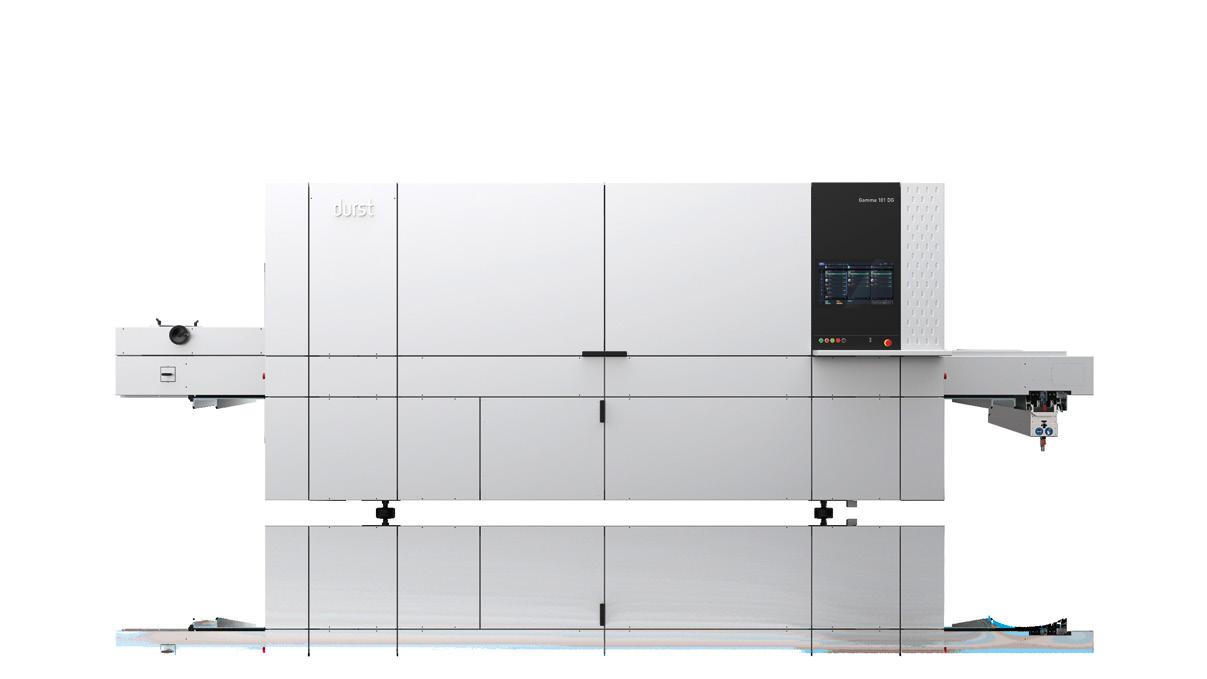
> Irripetibilità
> Unicità
> Sostenibilità
> Naturalezza delle texture


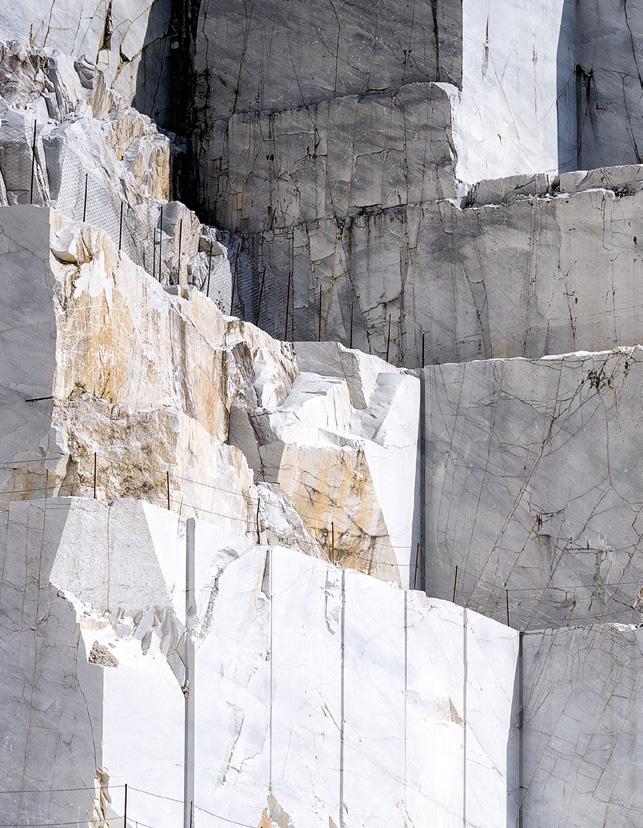
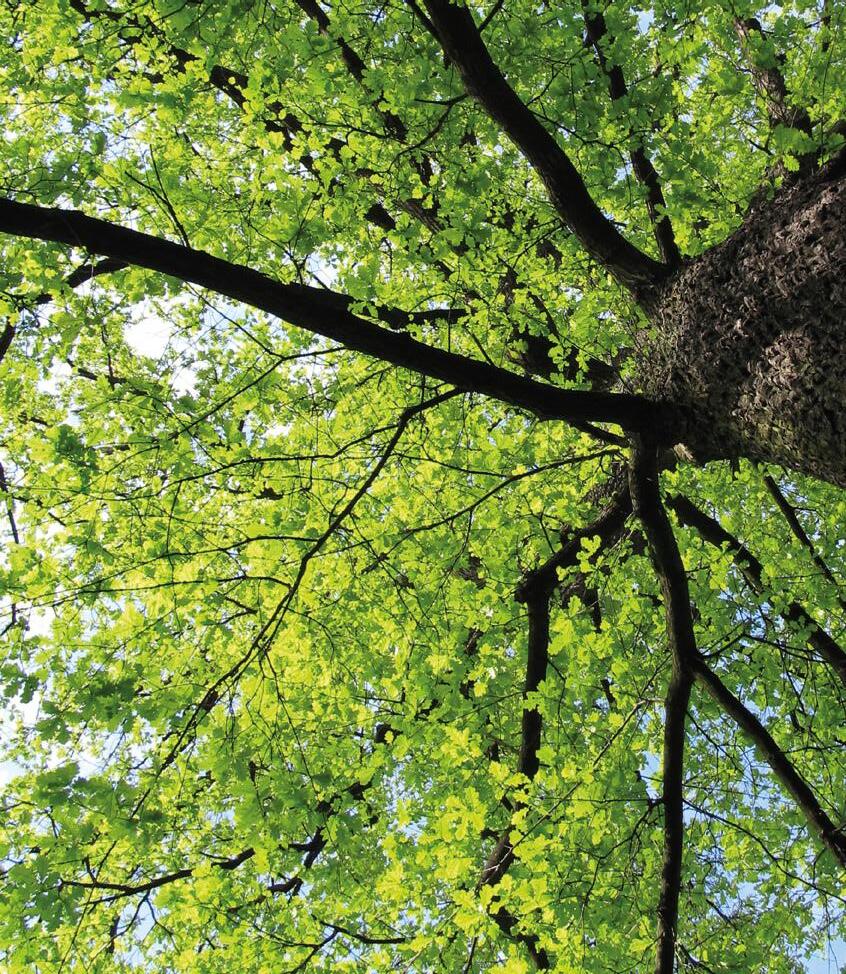
> Tridemensionalità
> Matericità
AGVs, advanced manufacturing systems, collaborative robots, and in general any sentient machine that is able to make decisions and perform actions automatically, in some cases using artificial intelligence that is continuously upgraded by the manufacturer (such as Tesla, which updates its firmware at night).
SERVITIZATION IN THE CAPITAL GOODS SECTOR: AN UNSTOPPABLE EVOLUTIONARY PROCESS
Italy’s Transition 4.0 incentives followed by the pandemic led to a significant and rapid change in what the market today sees as must-have requirements for industrial plants. Virtually all manufacturing companies have developed digital services (provided free of charge or for a fee), which are delivered thanks to the diffusion of IoT and interconnected systems. These are generally basic services such as remote monitoring, real-time transmission of alarms and alerts, periodic transmission of analytical reports with performance indicators, provision of dashboards and synoptics via web apps, and the possibility of controlling certain settings remotely. In some cases, however, proposals already exist for advanced services such as remote and on-site predictive maintenance, technology consultancy services for improving process efficiency, emission certifications, energy consumption control, environmental footprint calculations, and audits relating to occupational health and safety or regulatory compliance. In just a few years’ time, the availability of data and information will make it easier for manufacturers to assess risks on a case-by-case basis in order to develop offers for operational leasing (equipment-as-a-service) and services with performance guarantees (outcome-based services). Even if the change occurs over a period of many years, it will have a major impact on the industry’s equilibria and business models so it is essential to be prepared. ◼
Mario Rapaccini is an associate professor at the University of Florence, where he teaches Innovation Management and Business Strategy. He is also a member of the teaching staff on the Masters courses at the Scuola Superiore Sant’Anna in Pisa and the School of Management at the University of Bergamo (meGMI Masters). His most frequently cited research deals with servitization in industrial companies, a central theme of the ASAP Forum founded in 2003 by Prof. Rapaccini in partnership with colleagues from other universities.
A founding partner of the spin-off Smartoperations, he has collaborated on consulting, training and innovation projects for major companies such as Epson, Ricoh, Canon, Leonardo, Electrolux, IBM, Engie, Tim, GE, Lilly, Estra and Acea. In 2022 he was appointed Director of the ASAP Inter-University Centre. Experience in the field: 15+ years
SBS, School of Capital Goods (www.scuolabenistrumentali.it) works actively with Prof. Rapaccini and the ASAP team to offer capital goods manufacturers the latest and most up-to-date knowledge on servitization issues.
telligenti, i sistemi avanzati di produzione, i robot collaborativi e in generale ogni macchina senziente che sia in grado di prendere decisioni ed eseguire azioni in modo automatico, anche grazie all’intelligenza artificiale continuamente upgradata dal produttore (vedi la Tesla che aggiorna nottetempo il proprio firmware).
LA SERVITIZATION NEL SETTORE DEI BENI STRUMENTALI: UN PROCESSO EVOLUTIVO INEVITABILE
Prima gli incentivi del piano Transizione 4.0, poi la pandemia, tutto ciò ha causato un significativo e rapido cambiamento in relazione a ciò che il mercato oggi considera e pretende come requisito di base (must-have) degli impianti. Praticamente ogni azienda produttrice ha messo a punto servizi digitali (offerti gratuitamente o a pagamento), erogati grazie alla diffusione di IoT e impianti interconnessi. Si tratta in genere di servizi base, quali monitoraggio da remoto,
invio in tempo reale di allarmi e segnalazioni, invio periodico di rapporti analitici con indicatori di prestazione, messa a disposizione di dashboard e sinottici tramite webapp, possibilità di telecontrollo di alcuni settaggi. In alcuni casi però si trovano già proposte di servizi avanzati, quali manutenzione predittiva da remoto e on site, servizi di consulenza tecnologica per l’efficientamento di processo, per certificazioni di emissioni, per controllo dei consumi energetici, per calcolo del footprint ambientale, verifiche relative ad aspetti di sicurezza e salute in ambiente di lavoro o di conformità normativa.
Nel giro di pochi anni, la disponibilità di dati e informazioni faciliterà i produttori a valutare i rischi, di caso in caso, per sviluppar offerte di noleggio operativo (Equipment-as-a-Service) e servizi con garanzia di prestazione (outcome-base services).
Se questo accadrà, anche se il cambiamento richiederà molti anni, l’impatto su equilibri e modelli di business del settore sarà rilevantissimo. Per cui, occorre farsi trovare preparati. ◼
Mario Rapaccini è Professore Associato all’Università di Firenze dove insegna Gestione dell’Innovazione e Strategia di Impresa, parte anche del corpo docente dei master della Scuola Superiore Sant’ Anna di Pisa e della School of Management dell’Università di Bergamo (master meGMI).
Le sue ricerche più citate trattano della servitizzazione nelle imprese industriali, tema al centro dell’iniziativa ASAP Forum, fondata nel 2003 dallo stesso Rapaccini insieme a colleghi di altri Atenei.
Socio fondatore dello spin off Smartoperations, ha collaborato a progetti di consulenza, formazione e innovazione per aziende importanti quali Epson, Ricoh, Canon, Leonardo, Electrolux, IBM, Engie, Tim, GE, Lilly, Estra, Acea. Dal 2022 è Direttore del Centro Interateneo ASAP Seniority sul tema: +15 anni
SBS, Scuola dei Beni Strumentali (www.scuolabenistrumentali.it) lavora attivamente con il Prof. Rapaccini e il team di ASAP per offrire alle aziende produttrici di beni strumentali la migliore conoscenza sulle tematiche inerenti alla servitization.
70 CWR 152/2023 industry 4.0 FOCUS ON
PREDICTIVE MAINTENANCE

Part of BBMSRL.COM
Novabell, when a ceramic tile factory goes digital
Novabell, quando l’impianto ceramico diventa digitale
Milena Bernardi - m.bernardi@tiledizioni.it
HERE by Sacmi is an innovative software platform that provides integrated control of ceramic tile factories based on in-depth knowledge of process data, allowing operators to make the right decisions, correct inefficiencies in real time and manage production flows more effectively. All of this is achieved using software designed specifically for the needs of the ceramic process and capable of growing and evolving in step with the digital transformation of manufacturing plants.
BEYOND THE CONCEPT OF DATA COLLECTION
One of the first Italian ceramic tile manufacturers to have chosen to invest in the opportunities offered by HERE was Novabell of Roteglia (Reggio Emilia). Founded by Silvio Bellei back in 1988, the company has since been run by three generations of the same family with a clear vision: to manage and pre-empt the evolution of an industry in which almost everything has changed in the last 30 years, from products to processes, explains chairman Mario Roncaglia. One of the biggest transformations of all is the sheer quantity of information that needs to be monitored constantly in order to keep production efficient and competitive. “We already had a plant control system back in the early nineties, but things have moved on considerably since then,” explains Roncaglia “It’s not just a question of data collection but the ability to monitor the plant from start to finish, from incoming
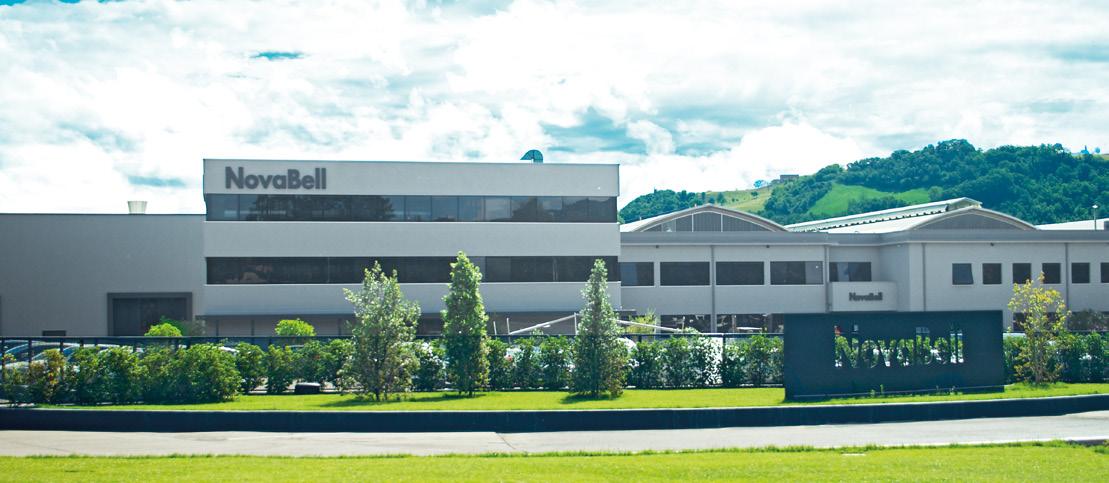
Il sistema di supervisione HERE di Sacmi significa controllo. Il controllo agevolato dalla conoscenza del dato di processo, utile per prendere le decisioni giuste, correggere in tempo reale le inefficienze, gestire meglio i flussi produttivi. Il tutto grazie ad un software progettato in modo specifico per le esigenze del processo ceramico, pensato per crescere ed evolversi nel tempo, accompagnando la trasformazione digitale degli impianti.
OLTRE IL CONCETTO DI RACCOLTA DATI
Tra le aziende del distretto ceramico italiano che sin dall’inizio hanno scommesso sulle opportunità di HERE c’è la Novabell di Roteglia (Reggio Emilia). Tre generazioni di impren-
ditori si incontrano nell’azienda fondata da Silvio Bellei nel 1988, con una visione precisa: governare e anticipare il cambiamento in un settore – spiega il presidente Mario Roncaglia – dove negli ultimi 30 anni è cambiato quasi tutto, da cosa si produce a come lo si produce. Soprattutto, ad essere cresciuta è la quantità di informazioni che devono essere costantemente monitorate per mantenere la produzione efficiente e competitiva.
“Già dai primi anni Novanta ci eravamo dotati di un sistema di controllo dell’impianto – osserva Roncaglia – poi le cose si sono evolute. Non è una semplice questione di ‘raccolta dati’ ma di monitoraggio dell’impianto dall’inizio alla fine, dal ricevimento delle materie prime alla gestione del magazzino”.
72 CWR 152/2023
Talking to...
FOCUS ON industry 4.0
raw materials through to warehouse management.”
WITH HERE, THE PRODUCTION PLAN GOES DIGITAL
Novabell adopted the HERE Sacmi system between 2015 and 2016, “well before Industry 4.0 incentives made an appearance”, notes Roncaglia
So how does HERE change the production plan and consequently the role of line operators?
“The production plan becomes digital. The state of progress of individual machines is tracked at each production batch start, allowing for constant, real-time data collection,” explains Francesco Cuoghi, Managing Director of Novabell and the founder’s grandson.


A FOCUS ON USABILITY
The important point is that HERE can be operated without the need for a computer engineer or a mechatronics expert. “The system is designed so that anyone can use it to maximum benefit,” note Cuoghi and Roncaglia. “Our operators are assisted by physical monitors for each line, which provide information on the individual machine, the progress of the batch, and the resources needed to complete the order.”
“As you can see here,” explains Cuoghi, “the system allows us
CON HERE IL PIANO DI PRODUZIONE DIVENTA DIGITALE
Il sistema HERE Sacmi fa il suo ingresso in Novabell tra il 2015 e il 2016, “ben prima – sottolinea il presidente Roncaglia – che si iniziasse a parlare di incentivi a Industria 4.0”. Come si evolve, con HERE, il piano di produzione e, con esso, il ruolo degli operatori di linea?
“Il piano di produzione diventa digitale. Ad ogni start del lotto produttivo avviene il tracciamento dello stato di avanzamento sulle singole macchine consentendo una raccolta dati costante e in tempo reale”, spiega Francesco Cuoghi, direttore generale di Novabell e nipote del fondatore.
“L’USABILITÀ” ANZITUTTO
Il punto è che per gestire HERE non serve un ingegnere informatico o meccatronico: “Il sistema è esattamente pensato perché ciascuno possa utilizzarlo e trarne il massimo vantaggio”, osservano Cuoghi e Roncaglia.
“A supporto dei nostri operatori ci sono dei monitor fisici per ogni linea, con le informazioni sulla singola macchina, lo stato di avanzamento del lotto, le risorse necessarie per completare l’ordine”.
“Come vedete qui – spiega Cuoghi – il sistema ci consente di tenere sotto controllo la produzione, individuando immediatamente potenziali inefficienze, ad esempio un vuoto produttivo. I dati chiave sono sempre visibili. In questo modo possiamo impostare anche una sorta di retro-
73 CWR 152/2023
Mario Roncaglia and Francesco Cuoghi, Chairman and Managing Director of Novabell
to monitor production constantly and immediately detect potential inefficiencies, such as gaps in production. Key data are always visible. This enables us to set up a kind of feedback loop, as the statistics tell us exactly where a defect occurs most frequently. In other words, HERE enables us to correct machines in real time today to maintain optimal production tomorrow.”
A SINGLE DATA ACCESS POINT
“The advantage is that the data are available in a single location,” notes Cuoghi “Now that we work 24/7, HERE enables us to make faster and more effective decisions, with no variability between different operators. All data are exportable and we can perform customised analyses as required.” For example, Novabell uses HERE production statistics to track all maintenance operations in the system, thereby “planning and optimising interventions”.
MODULAR AND OPEN TO ADAPT TO THE EVOLUTION OF SYSTEMS
Because HERE software is modular, the system is highly customisable and scalable over time, allowing new modules to be added and/or new factory departments to be connected to the software. Examples include body preparation, which will be incorporated at Novabell later this year, and the now complete integration of further automation in order to enhance Industry 4.0 recipe management (depending on the article to be produced, the system gives the operator advice on the optimal recipe configuration in terms of size and batch).
Because it is configured as a web platform and can therefore be accessed from any location and from any authenticated device on the corporate network, HERE is an open system unlike other solutions on the market. This means it is possible to connect not only Sacmi machines but any system based on internationally recognised computer protocols. Given the extraordinary pace at which technology is evolving, this is sure to be another key feature in the digital transformation of plants. ◼
azione, sapendo esattamente grazie alle statistiche dove si genera con maggiore frequenza un difetto. In altre parole, con HERE, possiamo correggere in tempo reale le macchine oggi per mantenere la produzione ottimale domani”.
UN’UNICA PORTA D’ACCESSO AI DATI
“Il vantaggio – sottolinea Francesco Cuoghi – è avere i dati disponibili in un unico punto. Oggi lavoriamo sette giorni su sette h24; HERE supporta le nostre decisioni rendendole più rapide, efficaci, senza variabilità dell’analisi dovute alla sensibilità del singolo operatore. Tutti i dati sono esportabili e possiamo costruire analisi personalizzate in base alle necessità». Ad esempio, in Novabell, le statistiche di produzione di HERE vengono utilizzate per tracciare nel sistema tutte le manutenzioni, “pianificando e ottimizzando gli interventi”.
MODULARE E “APERTO”, PER ACCOMPAGNARE L’EVOLUZIONE DEI SISTEMI
Il software HERE è modulare, il che consente un grado di customizzazione importante e la scalabilità del sistema nel tempo, con l’integrazione di nuovi moduli e/o l’interconnessione al software di nuovi reparti della fabbrica.

Come la preparazione impasti, che verrà collegata in Novabell entro quest’anno, o il già completato inserimento di ulteriori automatismi per potenziare la gestione 4.0 delle ricette (in funzione dell’articolo da produrre il sistema suggerisce all’operatore la configurazione ottimale della ricetta rispetto al formato ed al lotto).
Configurato come piattaforma web – quindi disponibile ovunque e da qualsiasi dispositivo autenticato sulla rete aziendale – HERE si caratterizza, rispetto a soluzioni alternative sul mercato, per essere un sistema “aperto”.
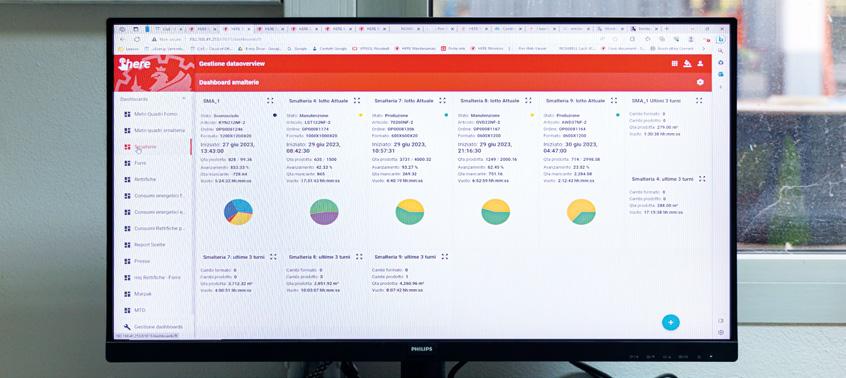
Questo significa poter connettere non solo le macchine Sacmi, ma qualsiasi sistema basato su protocolli informatici internazionalmente riconosciuti.
Anche da questo punto di vista, una caratteristica funzionale ad accompagnare la trasformazione digitale degli impianti, data la straordinaria velocità con cui la tecnologia si aggiorna. ◼
74 CWR 152/2023 industry 4.0 FOCUS ON

BBm IndustrIal maIntenance

BBM Industrial Maintenance, a GMM Group company specialising in predictive maintenance services for the ceramic industry, has long been conducting research into sophisticated new technologies aimed at reducing production line maintenance costs and intervention times in the event of plant malfunctions. Continuous monitoring of the state of health of critical plants is a strategic tool for identifying and recording malfunctions at an early stage, avoiding the time wastage and cost associated with unplanned machine stoppages. To promote the technological and digital transformation of production processes in the ceramic industry in accordance with the Italian government’s Transition 4.0 programme, this year BBM is launching its online condition monitoring system for modu-

lar mills
Named Master, this technical solution adopts sophisticated hardware and software systems capable of continuously monitoring the condition of all mechanical systems used in the grinding modules.
The instrumentation acquires a set of data such as vibrations, temperatures and rpm, which are then analysed in real time by algorithms capable of providing information on the condition of the plant. In particular, this includes bearing and belt drive support wear, the state of the gears and wear of the 3-stage gearboxes typically used, as well as major mechanical malfunctions (imbalance, misalignment, slack, resonances, etc.) and electrical faults (inverter faults, stator and rotor asymmetry, faults on the bars and on the power supply). The monitoring system’s man-
agement platform is able to transmit system malfunction alarms by smartphone, tablet or email so as to allow operators to plan immediate intervention. In addition, BBM’s technical support team sends a detailed monthly report complete with comments on the health status of the monitored systems and any alerts logged. The aim of the Master project is to avoid unscheduled plant stoppages by programming maintenance activities in advance and thereby extending the service life of the mill mechanics.
This system enables the ceramic company to free capital tied up in spare parts and avoid the risk of parts wearing out or becoming obsolete. The parts will instead be made available in BBM’s high-turnover warehouses.
Here too, the GMM Group is
able to offer high added-value integrated solutions that fulfil the operational needs of the various departments with a view to sustainable and energy-saving production. Its aim is to achieve the highest level of technological innovation so as to improve the efficiency of machinery and reduce unscheduled plant downtime.
■■■
Bbm Industrial Maintenance, azienda del Gruppo Gmm specializzata nella fornitura di servizi di predictive maintenance ad assistenza manutentiva per l’industria ceramica, è da anni impegnata nella ricerca di nuove e sofisticate tecnologie volte alla diminuzione dei costi di manutenzione delle linee produttive e dei tempi di intervento in caso di malfunzionamento degli impianti. È in quest’ottica che il monitoraggio continuo dello stato di salute di impianti critici rappresenta
76 CWR 152/2023
uno strumento strategico in grado di identificare e registrare le anomalie già dallo stadio iniziale, prevenire fermo macchina non programmati e le conseguenti flessioni economiche. Per sostenere la trasformazione tecnologica e digitale dei processi produttivi nell’industria ceramica, in sinergia con il piano di transizione 4.0, Bbm lancia quest’anno il proprio sistema di condition monitoring on-line per mulini modulari
Questa soluzione tecnica, denominata “Master”, adotta sofisticati sistemi hardware e software in grado di monitorare in continuo lo stato di salute di tutti i sistemi meccanici impiegati nei moduli di macinazione.


La strumentazione raccoglie un insieme di dati quali vibrazioni, temperature e rpm, che vengono poi analizzati e tradotti in tempo reale da algoritmi in grado di fornire informazioni sulle condizioni dell’impianto, in particolare sull’usura dei cuscinetti delle botti e dei supporti traino cinghie, lo stato dell’ingranamento e di usura dei riduttori a 3 stadi tipicamente impiegati, cosi come le principali anomalie meccaniche (sbilanciamento, disallineamento, allentamenti, risonanze, ecc.) ed elettriche (anomalie dell’inverter, asimmetria statorica e rotorica, difetti sulle barre e sull’ alimentazione).
La piattaforma di gestione del sistema di monitoraggio è in grado
di inviare degli allarmi per segnalare anomalie nel sistema, gestibili tramite smartphone o tablet, nonché via email, affinché tutti gli operatori interessati siano in grado di programmare un intervento immediato, inoltre il supporto tecnico di Bbm predispone ogni mese l’invio e il commento di un report dettagliato circa lo stato di salute degli impianti monitorati e gli eventuali alert registrati.


L’obiettivo del progetto Master è quello di evitare fermi impianti non programmati, allungando la “vita utile” della meccanica del mulino grazie alla possibilità di definire con anticipo le attività manutentive da porre in essere.
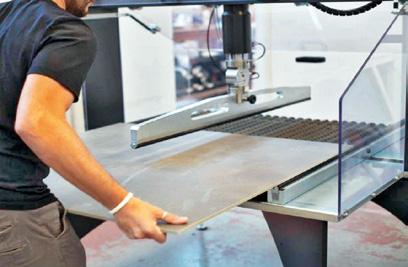
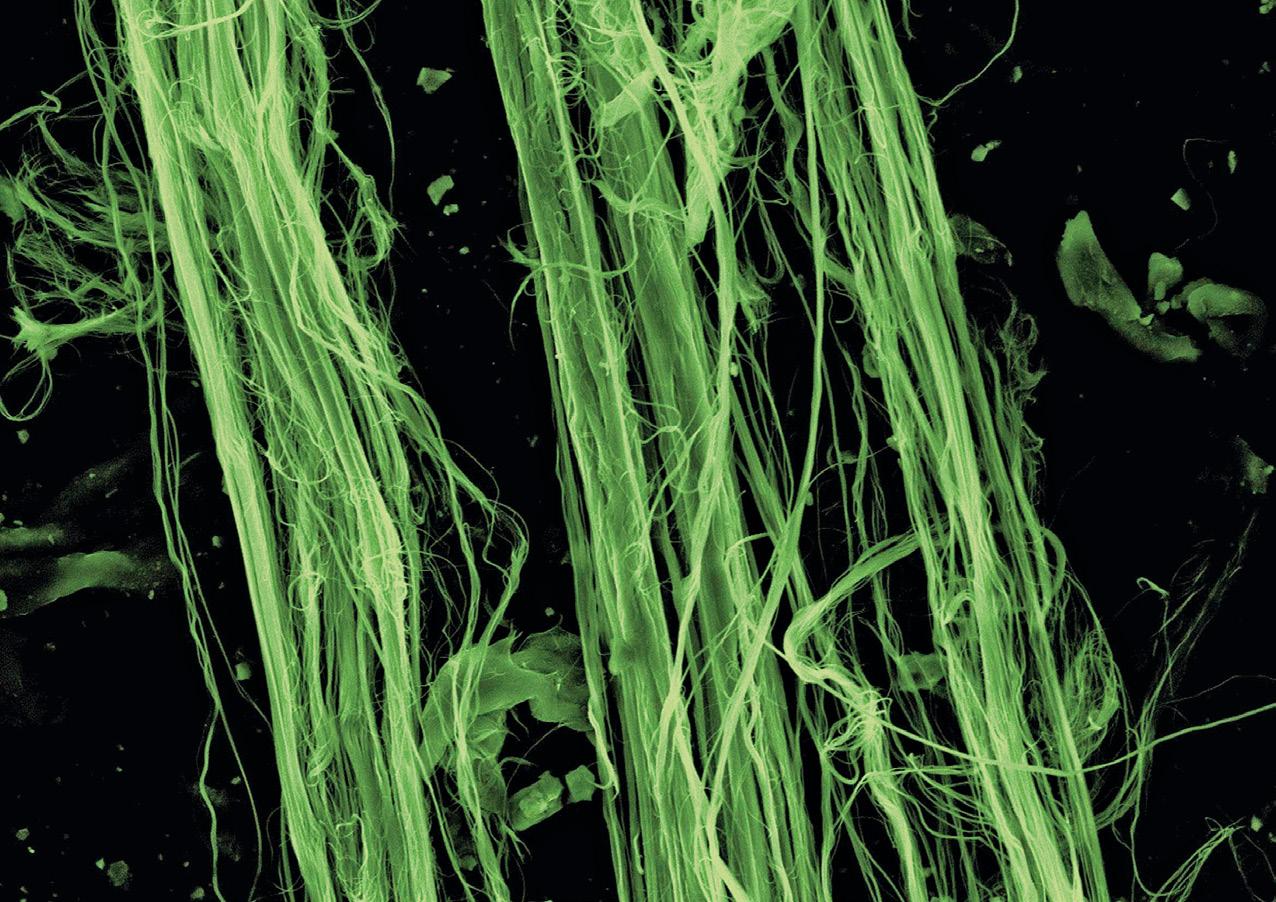
L’utilizzo di tale sistema permette quindi all’azienda cerami-
ca di liberare capitali immobilizzati in parti di ricambio con il rischio che questi si usurino o diventino obsoleti, che verranno invece messi a disposizione presso i magazzini ad alta rotazione di Bbm.
Il Gruppo Gmm anche in questo caso offre dunque soluzioni integrate ad alto valore aggiunto che si coniugano perfettamente con le esigenze degli svariati reparti produttivi con una logica di produzione ad alto risparmio energetico e sostenibile.
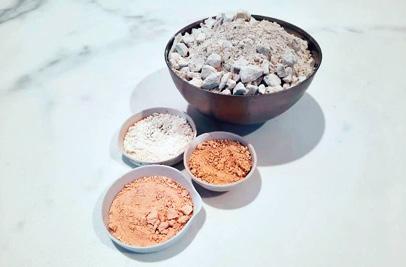
L’obiettivo è il raggiungimento del massimo livello di innovazione tecnologica, in grado di migliorare l’efficienza produttiva dei macchinari e ridurre il fermo impianti non programmati.

LATEST TECHNOLOGIES ON ADVERTISING
industry 4.0
SyStem CeramiCS
System Ceramics, a Coesia Group member company and an international leader in the production of ceramic technology, is presenting its cutting-edge Multistore technology for automatic handling of fired products to and from benches.

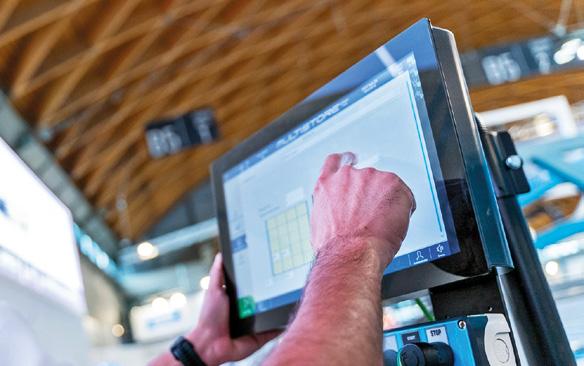

This system stands out for its revolutionary design compared to the traditional vacuum table system and features Multigecko gripping technology together with two patented manipulator arms to ensure precise, effective and flexible movements.
Grip reliability is one of Multistore’s key strengths. The two manipulator arms are each equipped with two rows of suction units that reduce the risk of product breakages.
The presence of the two arms also allows for a high degree of flexibility in terms of size changeovers, which are performed fully automatically. In the case of larger sizes, the arms can work simultaneously, whereas for smaller sizes they can operate individually. The system is capable of picking up, handling and storing traditional size tiles as well as slabs with dimensions of up to 1800x3600 mm.
Thanks to its agile and compact
structure, its high degree of adaptability to the ceramic factory layout and its production flexibility, Multistore can be adapted to different areas of the line depending on the type of use (loading or unloading). Its pared-down structure, without rollers or pallets, greatly simplifies installation compared to traditional systems. In addition, for the same movements, Multistore consumes less energy than conventional solutions. Connectivity is a key aspect of Multistore. It is equipped with management software developed in-house by System Ceramics that allows access to a remote service kit, thereby simplifying management and increasing the overall effectiveness of the automated handling process.
According to Andrea Toro, R&D Director of System Ceramics, Multistore sets a new standard in the field of automated fired material handling. “Its advanced technology combined with grip reliability and changeover flexibility makes for an unprecedented automated handling experience, an innovative solution that will improve productivity and process efficiency,” he explains.
■■■
System Ceramics, azienda di Coesia, leader internazionale nella produzione di tecnologie per la ceramica, presenta Multistore, una tecnologia all’avanguardia dedicata alla movimentazione automatica di materiali cotti da e verso i panconi.
Questo sistema, progettato con una concezione rivoluzionaria rispetto al tradizionale sistema con piano aspirante, si basa sulla tecnologia di presa del sistema Multigecko e su due bracci manipolatori brevettati per garantire un’azione precisa, efficace e flessibile.
La sicurezza della presa è uno dei punti di forza di Multistore. I due bracci manipolatori sono infatti dotati di due file di gruppi ventose che riducono il rischio di rotture dei pezzi.
La presenza dei due bracci consente anche una grande flessibilità nel cambio di formato, che avviene in modo completamente automatico. Per i formati più ampi, i bracci possono operare contemporaneamente, mentre per formati più piccoli possono lavorare singolarmente. Il sistema è in grado di prelevare, movimentare e stoccare formati tradizionali così come lastre fino al 1800x3600 mm. Grazie alla sua struttura agile e compatta, a un’elevata adattabi-
lità al layout dell’azienda ceramica in cui è inserito e alla flessibilità produttiva, Multistore può essere configurato in differenti aree della linea, a seconda della modalità di utilizzo (carico o scarico). La sua struttura ridotta, priva di rulliere e bancalini, semplifica notevolmente l’installazione rispetto ai sistemi tradizionali. Inoltre, a parità di movimenti, Multistore consuma anche una quantità di energia inferiore rispetto alle soluzioni tradizionali.
La connettività è un aspetto chiave di Multistore. Dotato di software di gestione sviluppati internamente da System Ceramics, offre la possibilità di accedere a un kit d’assistenza da remoto, semplificando la gestione e massimizzando l’efficacia complessiva del processo di movimentazione automatica.
Per Andrea Toro, R&D Director di System Ceramics, Multistore rappresenta un nuovo standard nell’industria della movimentazione automatica dei materiali cotti. “La sua tecnologia avanzata –spiega Toro -, combinata con la sicurezza della presa e la flessibilità nel cambio di formato, offre un’esperienza di movimentazione automatizzata senza precedenti, una soluzione innovativa che migliorerà la produttività e l’efficienza del processo”.
78 CWR 152/2023
robateCh
Rising energy prices, increasing raw material shortages and worrying supply bottlenecks are placing a strain on companies. With this in mind, the industrial hot and cold glue application specialist Robatech has developed its new GreenSaver service which provides a detailed analysis of the measures that produce the biggest savings in the gluing process.
With GreenSaver, users of glue application systems can assess potential savings in terms of glue, energy and compressed air consumption, as well as determine the level of workplace safety and system availability.
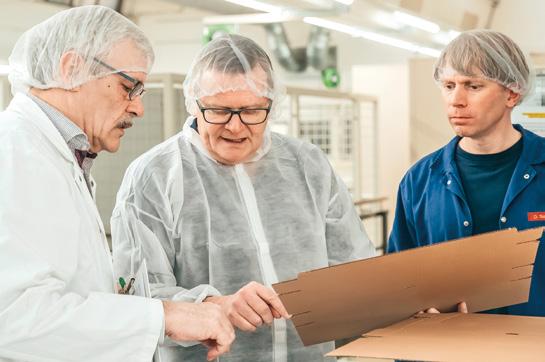

For example, users will be able to save up to 30% adhesive or reduce energy use by 50% by managing melter heating and checking the energy efficiency of components. They will also be able to consume up to 60% less compressed air by using Robatech electric guns. In addition, adhesive application will be optimised to avoid wastage by directly adjusting the settings, for example to reduce potential filament formation and to position glue beads and adhesive dots with precision. GreenSaver will also improve
workplace safety. To protect operators, it is essential to provide effective thermal insulation for hot components or replace them with well-insulated new-generation components. Moreover, using the automatic melter filling system with granular adhesives will ensure even greater safety of the line.
The end result will be longer system uptime thanks to an optimised maintenance schedule and monitoring of the entire melter for an interruption-free process. How can GreenSaver be activated?
A Robatech expert will carry out an on-site inspection and draw up an eight-point report including an analysis of the resources and current state of the adhesive application system (process parameter settings and the resultant gluing quality, quantity of adhesive used, current energy efficiency, compressed air consumption, workplace safety standards and system availability). The report will serve as the basis for an action plan to reduce costs and improve the sustainability balance.
■■■
L’aumento dei prezzi dell’energia e la crescente carenza e difficol-
tà di approvvigionamento di materie prime gravano sulle aziende. Con questa consapevolezza, Robatech, azienda specializzata nell’applicazione industriale di colla a caldo e a freddo, ha sviluppato il nuovo servizio GreenSaver che fornisce una panoramica dettagliata su quali misure nel processo di incollaggio producono il miglior effetto risparmio. Con GreenSaver gli utilizzatori dei sistemi di applicazione di adesivo possono determinare il loro potenziale di risparmio in termini di consumo di adesivo, energia e aria compressa, oltre che determinare il livello di sicurezza sul posto di lavoro e la disponibilità del sistema. Sarà possibile, ad esempio, risparmiare fino al 30% di adesivo o ridurre del 50% l’impiego di energia agendo sulla gestione del riscaldamento del fusore e verificando l’efficienza energetica dei componenti. Sarà possibile anche consumare fino al 60% in meno di aria compressa impiegando le pistole elettriche Robatech. Inoltre, l’applicazione dell’adesivo sarà ottimizzata per evitare gli sprechi, intervenendo direttamente sulle impostazioni e sui settaggi in maniera concreta, per ridurre ad esempio la possibile formazione di filamenti e posizionare con precisione tratti colla e punti di adesivo.
Con GreenSaver aumenterà anche il livello di sicurezza sul posto di lavoro: per salvaguardare gli operatori è fondamentale isolare termicamente i componenti soggetti a riscaldamento o sostituirli con quelli di nuova generazione che sono ben coibentati; inoltre, adottando il sistema di riempimento automatico del fusore con adesivi in granuli sarà ancora più evidente il grado di sicurezza sulla linea.
Il risultato finale sarà una maggiore disponibilità del sistema grazie all’ottimizzazione del programma delle manutenzioni e al monitoraggio dell’intero fusore per un processo senza interruzioni. Come attivare GreenSaver?
Un esperto Robatech effettuerà un’ispezione in loco, durante la quale sarà redatto un rapporto in otto punti che prevede l’analisi delle risorse e dello stato attuale del sistema di applicazione di adesivo (impostazioni dei parametri di processo e la risultante qualità di incollaggio, quantità di adesivo utilizzato, attuale efficienza energetica, consumo di aria compressa, standard di sicurezza sul posto di lavoro e disponibilità del sistema). Il rapporto consentirà di elaborare il piano d’azione per ridurre i costi e migliorare il bilancio di sostenibilità.

end of line 79 CWR 152/2023 LATEST TECHNOLOGIES ON
World Jet
To make end-of-line product marking faster and more flexible, World Jet presents its new WJ-HD-1070L1140S marking system. This automatic, high-definition printing system enables to print graphics on both the side and top of products, in real time, without stopping them. This model consists of four high-definition print heads: two mark the sides of the product, up to a height of 72 mm per side; one marks the top of the product, up to a width of 72 mm, and another marks the top of the product, up to a width of 144 mm.

The 1140S head enables to produce logos/graphics of considerable width, while maintaining first-class quality and without running into the graphic alignment problems that normally occur

ADVERTISING
when using two separate heads. The system is available in three variants: one with fully manual x, y, z movements; one with electric x, y, z movements operated by means of a control panel; and lastly, a range-topping model, on which the print heads adjust their position automatically according to the selected recipe, thanks to PLC control of the motor drivers and software for managing the recipes in which the product dimensions are saved.
The system can be integrated into existing conveyor lines, and has no impact on the movement control logic. Alternatively, it can be supplied with a conveyor to create a stand-alone system either for managing short production runs or for converting existing manual lines into semi-automatic systems.
■■■
Per rendere più veloce e flessibile la marcatura sui prodotti nel fine linea, World Jet presenta il nuovo sistema di marcatura WJ-HD-1070L1140S. Questo impianto automatico di stampa in alta definizione permette di stampare grafiche sia sul fianco che sulla parte superiore del prodotto in real time senza fermare il prodotto. Il sistema può essere configurato per adattarsi a qualsiasi richiesta. Questo modello è composto da 4 teste di stampa in alta definizione: due che marcano sul fianco del prodotto fino a 72 mm per lato in altezza, una testa che marca sulla parte superiore fino a 72 mm di larghezza, ed un’altra testa sulla parte superiore che stampa fino a 144 mm in larghezza. La testa 1140S permette di realizzare loghi/grafiche con la garanzia di una qualità eccellente e senza nessun problema
di allineamento della grafica (frequente, quando si utilizzano due teste separate). Il sistema si può scegliere in 3 varianti: con movimentazioni x,y,z completamente manuali, con movimentazione x,y,z elettrica attraverso pulsantiera, ed infine il modello top di gamma nel quale le teste di stampa regolano la loro posizione in automatico, a seconda della ricetta selezionata; questo, grazie al controllo del PLC sui driver dei motori ed attraverso un software di gestione delle ricette su cui sono salvate le dimensioni dei prodotti. Il sistema può essere integrato su linee di trasporto esistenti, senza impatto sulla logica di controllo della movimentazione; in alternativa, può essere fornito con un trasporto per realizzare un sistema stand alone per la gestione o di piccole produzioni o per rendere semiautomatiche linee completamente manuali.
end of line LATEST TECHNOLOGIES ON
Engobe applicator developed for medium/small formats. Uniform application of refractory engobe under tiles is an essential requirement to maintain the condition of ceramic rollers and the physical qualities of production.
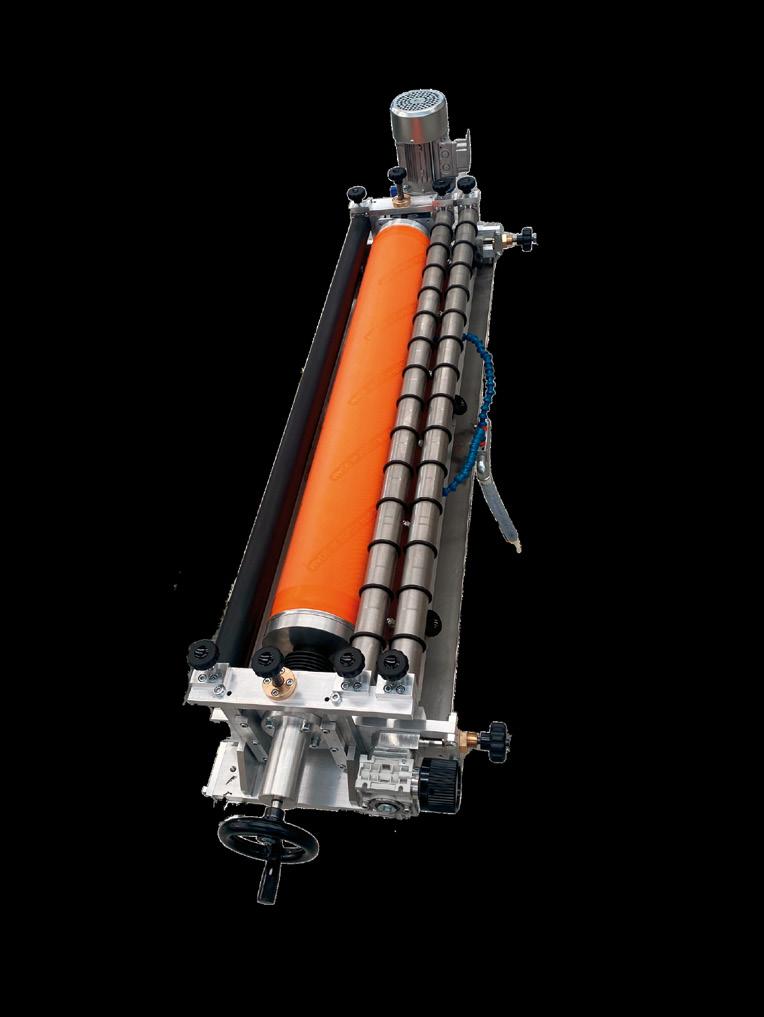


ENGOBING ART!
UNIFORM AND ACCURATE IN TIME ENGOBE APPLICATION.


POSSIBILITY TO PRINT LOGOS OR "MADE IN...".
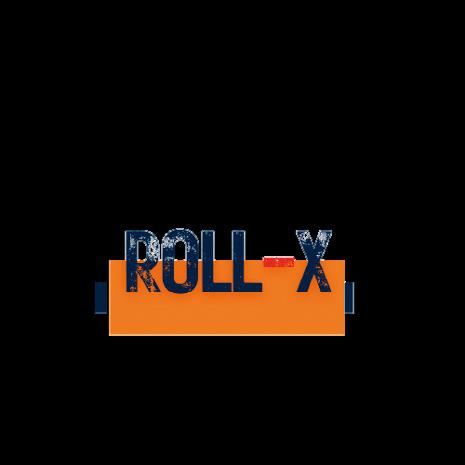

NO MORE DEFECTS OF REFRACTORY DROPS AND DOTTING ON SURFACE










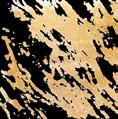
BENEFITS OF PLANARITY OR DEFORMATION VISIBLE AT REFLECTION.


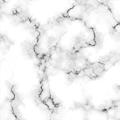


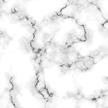



LONGER CLEANLINESS STATE OF KILN ROLLERS.
INCREASE OF MONTHLY HOURS AT FULL KILN



REDUCTION OF FIXED AND MAINTENANCE COSTS PER SQUARE METER.

MADE IN ITALY MADE IN ARGENTINA MADEIN
E n g o b e a p p l i c a t o r
ROLL-X
Q
A digital and sustainable ecosystem for ceramic surface finishing
Un ecosistema digitale e sostenibile per la finitura di superfici
BMR’s R&D Department (Scandiano, Italy)
BMR continues to demonstrate its trend-setting ability with a series of outstanding technological innovations in the field of squaring and finishing of ceramic surfaces. The company’s latest offerings stand apart from those of competitors in terms of their cutting-edge digital technology and sophisticated design. BMR is committed to a process of continuous innovation in which the concept of ceramic finishing is extended to a broader idea of “end-of-line” stage that involves rethinking the cutting, squaring and finishing operations. With this in mine, BMR has introduced a new concept that has given rise to a new product line called BMR Vision
Thanks to seamless integration between machinery development and the digitalisation process, the new range makes up a complete ecosystem capable of meeting all tile and slab finishing requirements on a single platform with a high degree of versatility. It can also efficiently handle small batches, justin-time production and frequent changes of size and surface. Energy efficiency, environmental sustainability and supply chain development are just a few of the innovative aspects of BMR’s Vision range, which results in an increasingly objective and sustainable process that uses digital cameras to monitor operation and thereby conserve energy resources and cut costs.
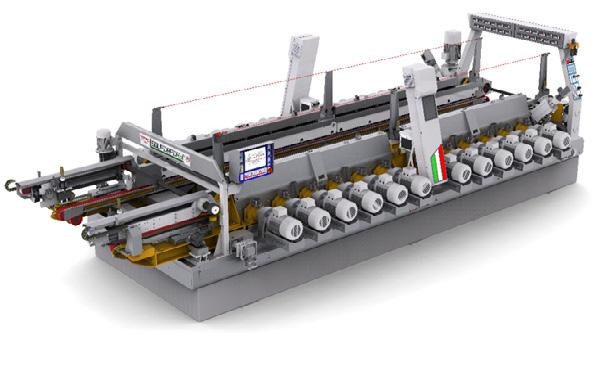
THE NEW SQUADRA VISION
The first machine designed by BMR as part of its new range was Squadra Vision, the descendant of the classic squaring machine with cameras that represents the Scandiano-based company’s flagship technology. Squadra Vision is an advanced, fully automatic system that has undergone a series of technological upgrades incorporating Smart Factory and Industry 4.0 concepts, which bring multiple benefits in terms of energy savings, eco-sustainability and reduced production costs. Tests conducted at customers’ sites have shown that for the same material, removal rate and speed, this camera-based technology has 40% lower grinding wheel consumption than alternative technologies.
Con una serie di innovazioni tecnologiche di estremo rilievo nel campo della squadratura e finitura di superfici ceramiche, BMR conferma anno dopo anno la sua capacità da trend setter. La nuova offerta si differenzia dalla concorrenza nell’avanguardia tecnologica e digitale che punta ai livelli di massima raffinatezza progettuale; un percorso che vede BMR impegnata in un processo di innovazione continua che porta ad estendere il concetto di finitura ceramica verso quello più ampio di “fine linea”, un processo che può e deve evolversi ripensando le lavorazioni di taglio, squadratura e finitura. È qui che BMR introduce un nuovo concetto che dà vita a una nuova linea di prodotti: BMR Vision
Grazie all’integrazione capillare tra le macchine e la digitalizzazione, la nuova gamma è in grado di proporre un ecosistema completo che consente di gestire in modo versatile e su un’unica piattaforma ogni
tipo di esigenza nell’ambito della finitura della piastrella e della lastra, oltre a efficientare lotti ristretti, produzioni just in time e frequenti cambi di formato e di superficie.
Efficienza energetica, sostenibilità ambientale e valorizzazione della supply chain sono alcuni degli elementi innovativi della proposta Vision di BMR per un processo sempre più oggettivo e sostenibile che si lega perfettamente al tema di “agire industriale”, ovvero ad un approccio alla produzione che presta attenzione alle risorse energetiche, preservandole e contenendo i costi attraverso il controllo operato con telecamere digitali.
LA NUOVA SQUADRA VISION
In questo percorso, la prima macchina progettata da BMR nell’ambito della nuova gamma è Squadra Vision, figlia della classica squadratrice con telecamere, tecnologia di punta dell’azienda di Scandiano. Squadra Vision è un impianto evoluto, completamente automatico e ingegnerizzato che, grazie a continui upgrade tecnologici, abbraccia i concetti di Smart Factory e Industry 4.0, dimostrando molteplici vantaggi in termini di risparmio energetico, eco-sostenibilità e riduzione dei costi di produzione. I test già effettuati presso i clienti hanno mostrato come - a parità di materiale, asportazione e velocità - questa tecnologia con telecamere abbia un consumo della
82 CWR 152/2023 Squadra Vision
Squadra Vision is a dry squaring machine with 9 or 12 calibrating units per side, ideal for all types of materials and sizes up to 1800x3600 mm or larger. The new state-of-the-art version with measuring camera system is capable of monitoring the squaring operation in real time and detecting any chipping defects.
In addition, the use of displays combined with automatic advancement of the calibrating spindle, which is equipped with a brushless drive system and belts, makes it possible to determine the precise position of the tool and ensure that it operates automatically once the operator has set the material removal cone. This way, the system corrects the tool’s working position and optimises its effectiveness while maintaining size and productivity settings. In practical terms, the degree of material removal can be changed quickly and easily according to the configuration and type of tool mounted on the squaring machine.

The new machine is also extremely reliable thanks to its construction characteristics and the control system, which allows for data extraction and consequently predictive maintenance. This dramatically reduces the risk of breakages and other issues.
BMR’s patented camera-based system is the only solution of its kind that has been applied to a squaring machine and has now undergone further improvement.
HIGH PERFORMANCE AND SUSTAINABILITY
Squadra Vision is designed to combine high performance with significant benefits in terms of the environment, energy savings, consumption and tool cost. Equipped with a laser system at the line infeed and outfeed, the machine automatically controls numerous functions and parameters, ensuring a higher percentage of first choice products and consequently a reduction in labour and process costs, while at the same time respecting the environment and complying with sustainability standards.
The latest version of Squadra is also very user-friendly for finishing operators. The intuitive graphical interface

FOCUS ON finishing & surface treatment
mole inferiore del 40% rispetto a quello con tecnologie alternative.
Squadra Vision è una squadratrice a secco con 9 o 12 calibratori per lato, ideale per tutti i tipi di materiali e formati che superano anche i 1800x3600 mm. La nuova versione all’avanguardia, con sistema di telecamere di misurazione, permette di visualizzare in tempo reale l’operazione di squadratura e determinare in questo modo anche le sbeccature. Inoltre, la combinazione tra i visori e l‘avanzamento automatico del mandrino calibratore, dotato di sistema di motorizzazione brushless e di cinghie, riesce a determinare l’esatto punto di posizionamento dell’utensile e a garantirne il lavoro in automatico tramite l’impostazione del cono di asportazione da parte dell’operatore. In questo modo, il sistema corregge la posizione di lavoro dell’utensile e ne ottimizza l’efficacia, sempre nel rispetto dei parametri impostati relativi alla dimensione ed al-
la produttività. In termini pratici, è possibile cambiare in modo estremamente intuitivo e rapido la scala di asportazione in funzione della configurazione e del tipo di utensile montato sulla macchina squadratrice.

La nuova macchina risulta anche particolarmente affidabile grazie, da un lato, alle caratteristiche costruttive e, dall’altro, all’intero apparato di controllo che permette l’estrazione dei dati e quindi la manutenzione predittiva. Per questi motivi il rischio di rotture e/o problemi si riduce drasticamente.
Il sistema brevettato con telecamere BMR è l’unico applicato a una macchina squadratrice ed è stato ulteriormente migliorato.
ALTE PRESTAZIONI ALL’INSEGNA DELLA SOSTENIBILITÀ
Squadra Vision è concepita per garantire performance elevate, con considerevoli benefici in termini di rispetto dell’ambiente, di risparmio energetico, di consumo e di costo utensile. Allestita con un sistema laser in ingresso e in uscita della linea, la macchina interviene realizzando un controllo automatico puntuale di numerose funzionalità e parametri garantendo una maggiore percentuale di produzione di prima scelta e, di conseguenza, una riduzione dei costi di manodopera e di processo, rispettando l’ambiente e gli standard di ecosostenibilità.
83 CWR 152/2023
Tool wear - Consumo utensile
Measuring camera - Telecamera di misurazioneutensile
New spindle with high performance and low consumption Nuovo mandrino ad alte prestazioni e bassi consumi
allows for simple control of all machine functions and operations. This ease of use means that any operator can fully exploit Squadra Vision’s capabilities.

CHARACTERISTICS AND ADDITIONAL ADVANTAGES
The following are a few of the innovative features of Squadra Vision:
• new release of the machine software;
• new higher performance spindle capable of operating at lower temperatures;
• next-generation cameras with improved image speed;
• freeze frame function with chipping recognition and incorrect grinding wheel operation detection;

• fully automatic function that enables the machine to operate completely independently;
• improved automatic cleaning of the camera system with complete dirt sealing and waterproofing;
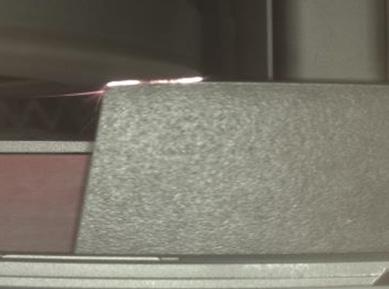
• grinding wheel savings (40% less consumption);
• maximum reliability and ease of use thanks to the intuitive graphical interface;
• reporting and data that can be used for predictive machine maintenance;
• optimised quality: less chipping or breakage, less downtime, greater continuity of production, less wastage of material during size changes;
• constant process control: less operator intervention and greater focus on problem-solving;
• consumption and production data monitoring: all information on the consumption, lifetime and efficiency of the grinding wheels is continuously recorded and saved. Finally, one indirect advantage is the fact that the systematic use of increasingly eco-friendly technologies encourages everyone involved in the production chain, including employees and suppliers, to adopt green and sustainable technological solutions. ◼
L’ultima evoluzione della Squadra porta notevoli vantaggi anche dal punto di vista della semplicità di utilizzo per gli addetti alla fase di finitura. L’interfaccia grafica, sviluppata in modalità intuitiva, permette infatti un controllo particolarmente agevole di tutti gli aspetti funzionali e operativi della macchina. Tale facilità di utilizzo permette a qualsiasi operatore di esprimere tutte le performance di produzione di cui Squadra Vision è capace.
CARATTERISTICHE E ULTERIORI VANTAGGI
Sono numerosi gli elementi innovativi che caratterizzano Squadra Vision, tra cui, in sintesi:
• nuova release del software della macchina;
• nuovo mandrino con migliori prestazioni in grado di garantire una lavorazione a temperature più basse;
• telecamere di nuova generazione con velocità immagine migliorata;
• funzionalità di fermo immagine con riconoscimento delle sbeccate ed individuazione della mola che lavora
in modo scorretto;
• funzionalità “full automatic” che permette alla macchina di lavorare in totale autonomia;
• pulizia automatica migliorata del sistema di telecamere con isolamento totale da sporco e waterproof;
• risparmio mola (40 % di consumo in meno);
• affidabilità e facilità di utilizzo ai massimi livelli, grazie all’interfaccia grafica intuitiva;
• reportistica e dati utili alla manutenzione predittiva della macchina;
• qualità ottimizzata: meno scheggiature (o rotture), meno tempi morti, maggiore continuità di produzione, minor “spreco” di materiale durante il cambio formato;
• controllo costante del processo: interventi di minore entità da parte dell’operatore e più focalizzati sulla risoluzione dei problemi;
• controllo dei consumi e dei dati di produzione: tutte le informazioni relative a consumo, durata ed efficienza delle mole sono costantemente registrate e salvate;
Un vantaggio indiretto, infine, deriva dall’utilizzo organico di tecnologie sempre più eco-friendly che stimola l’intera catena produttiva, compresi i dipendenti e i fornitori, all’utilizzo e al rispetto di soluzioni tecnologiche green e sostenibili. ◼
84 CWR 152/2023
FOCUS
finishing & surface treatment
ON
Chamfer feedback - Retroazione biselli
Ease of use - Facilità di utilizzo
Chipped edge control - Controllo sbeccate
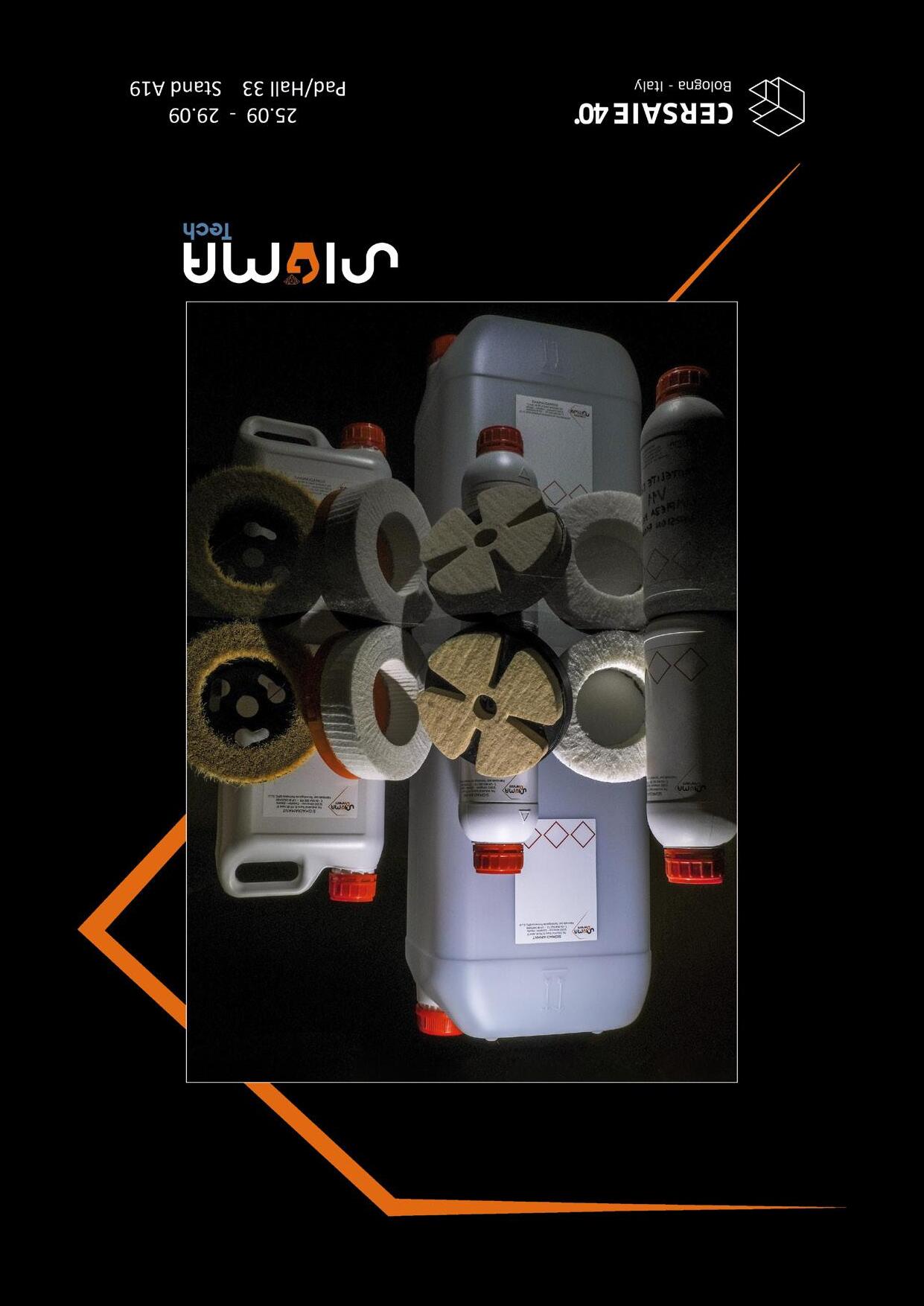



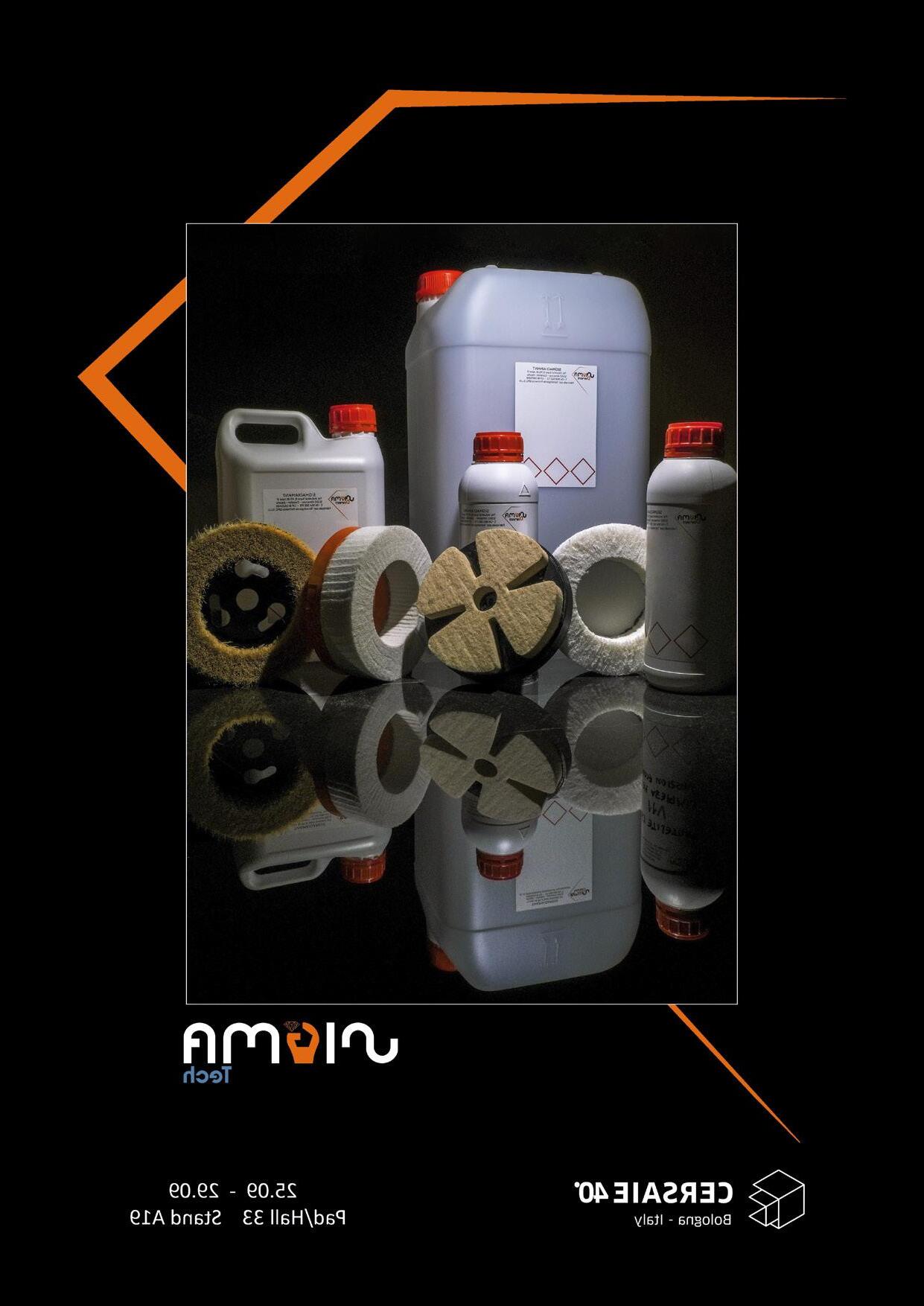
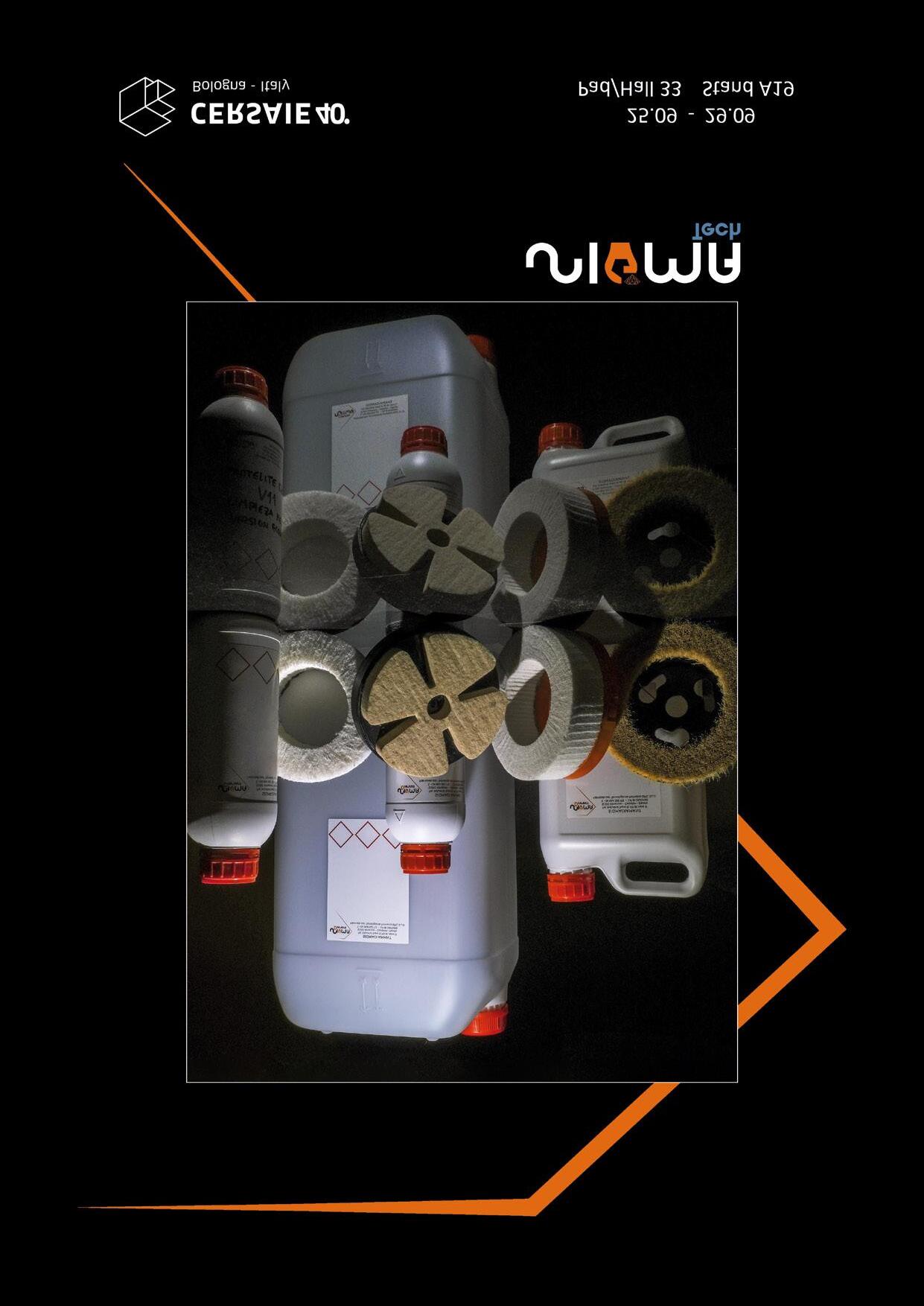


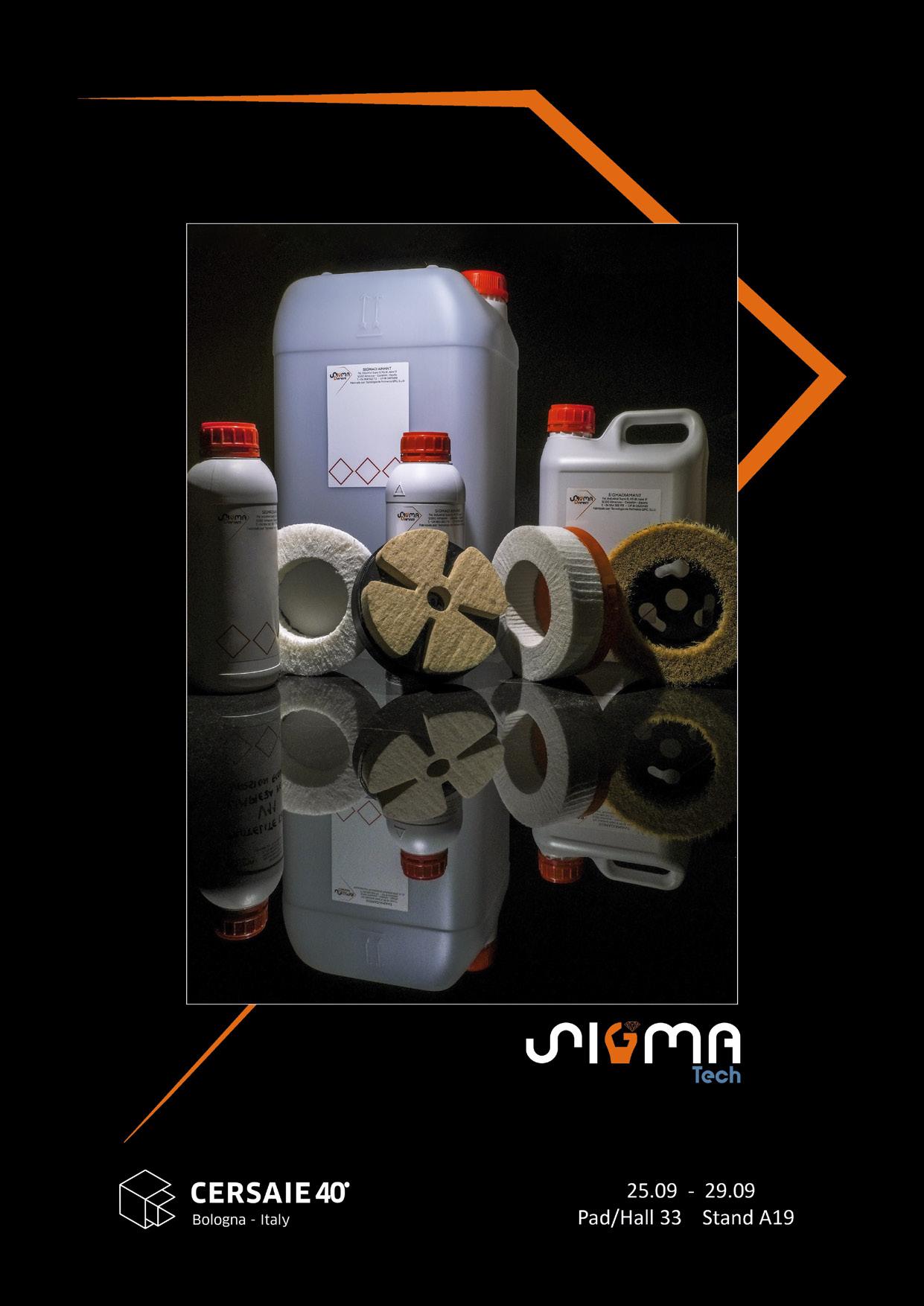
Greater quality, efficiency and productivity in the finishing department
Più qualità, efficienza e produttività nel reparto finitura
Ancora, Gruppo B&T (Sassuolo, Italy)
In recent years, Ancora has undergone a real transformation that has involved all areas of the company’s activity, from internal production to service, and has completely renewed its product range.

Through an extensive program of industrial investments, the company has expanded its integrated and fully internalized production of all squaring, lapping and treatment machines (from carpentry to mechanical processing), thereby guaranteeing high standards of quality and flexibility.
It has also expanded its sales network by hiring new resources and has further strengthened its customer service and support activities by increasing the number of expert finishing technicians at the disposal of customers. This has led to an immediate and significant improvement in customer service, especially for the Italian ceramic industry.
A significant part of this rebranding process involved the research, development and production activities for the new machines. They were launched for the first time at Tecna 2022 in Rimini and showcased last March at an Open House event where customers had the opportunity to visit the company and get a first-hand view of the “Ancora revolution”, including its new industrial asset and technological innovations. These include Tornado dry squaring machine, Matrix technology for lapping large slabs and Powerlux super gloss treatment.
TORNADO SQUARING MACHINE
Tornado is a fully automatic dry squaring machine for ceramic surfaces in sizes up to 360 cm and thicknesses from 3 to 40 mm.
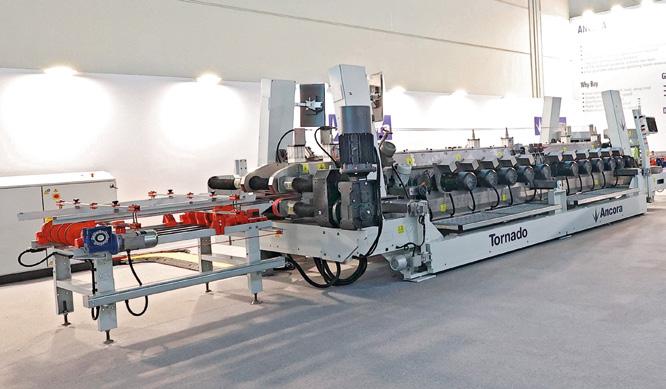
Negli ultimi anni, Ancora è stata oggetto di una vera e propria trasformazione che ha interessato tutti gli ambiti dell’attività aziendale, dalla produzione interna al Service, passando per il rinnovamento completo della gamma prodotto.
Il programma di investimenti in ambito industriale ha permesso di potenziare la produzione integrata e totalmente internalizzata (dalla carpenteria alle lavorazioni meccaniche) di tutte le macchine per squadratura, lappatura e trattamento, garantendo alti standard qualitativi e di flessibilità.
Rinnovata anche la rete commerciale con l’inserimento di nuove risorse, mentre Service e assistenza, fiore all’occhiello dell’azienda, sono stati ulteriormente rafforzati con una maggiore presenza di tecnici esperti in ambito finitura a disposizione della clientela; il risultato, soprattutto nel distretto ceramico italiano, è stato un
immediato e significativo miglioramento del servizio clienti. Una parte preponderante di questo percorso di rebranding ha riguardato tutta l’attività di ricerca, sviluppo e produzione delle nuove macchine, lanciate per la prima volta al Tecna 2022 di Rimini e protagoniste, lo scorso marzo, di un Open House che ha permesso alla clientela di entrare in azienda e toccare con mano “la rivoluzione di Ancora”, ovvero il nuovo asset industriale e le novità tecnologiche.
Tra queste spiccano la squadratrice a secco Tornado, la tecnologia Matrix per la lappatura di grandi lastre e il trattamento super gloss Powerlux.
LA SQUADRATRICE TORNADO
Tornado è la squadratrice a secco, completamente automatica, dedicata alla lavorazione di superfici ceramiche in formati fino al 360 cm e con spessori da 3 a 40 mm. Costruita
86 CWR 152/2023
Built with top-quality materials, it stands out for both its reliability and its ease of use, even for less experienced technicians. It is an extremely robust and stable machine, withan ergonomic design. The new oversized beam guarantees perfect sealing of the pieces being processed, while the new casing allows for easy visual inspection and quick tool change. The automatic solution enables the operator to manage up to three lines simultaneously. Tornado also has a new machine inlet and an innovative patented belt that ensure perfect centering and very high piece stability.Once the recipe and process management have been set, the new laser system (also patented by Ancora) allows to measure and control the material removal process of the tool independently and intervenes in the event of errors. This guarantees precision and consistency over time.
The new squaring machine can be placed at the kiln exit, making the squaring process more efficient and considerably reducing logistics and management costs. As a result, productivity is increased to 20,000 m²/day

Operator intervention is also minimised thanks to the new EASY-STEP software. Extremely intuitive and easy to use regardless of the operator’s level of experience, it updates the machine and production status constantly and guides the operator step by step in managing the line.

Tornado is equipped with highly reliable Smart HP automatic spindles designed for high material removal and high thicknesses. They help the operator adjust tool wear from the HMI panel and improve operational efficiency. As a result, the machine takes only 15-20 minutes to set up and to change the working size. To avoid communication is-sues, the electronic
finishing & surface treatment
con materiali di altissima qualità, si distingue, da un lato, per l’affidabilità e, dall’altro, per la grande facilità di gestione anche da parte dei tecnici meno esperti.
Da un punto di vista costruttivo, si tratta di una macchina estremamente robusta, stabile e dal design ergonomico.
La nuova trave maggiorata garantisce la perfetta tenuta dei pezzi in lavorazione, mentre il nuovo carter consente una perfetta ispezione visiva ed il cambio rapido dell’utensile. Con la soluzione automatica, l’operatore può gestire fino a 3 linee contemporaneamente.
Tornado si caratterizza anche per il nuovo ingresso macchina e l’innovativa cinghia brevettata che assicurano il perfetto centraggio e un’elevatissima stabilità dei pezzi. Una volta impostata la ricetta e la gestione della lavorazione, il nuovo sistema laser
(anch’esso un brevetto Ancora) consente di misurare e controllare il processo di asportazione materiale dell’utensile in maniera autonoma e interviene in caso di errori. Il risultato è garanzia di precisione e continuità nel tempo.

La nuova squadratrice può raggiungere una produttività di 20.000 m²/giorno, massimizzata dal fatto che la macchina può essere collocata all’uscita del forno, consentendo l’efficientamento del processo di squadratura e un notevole abbattimento dei costi logistici e di gestione.
L’intervento dell’operatore è ridotto al minimo anche grazie al nuovo software EASY-STEP: estremamente intuitivo e di facile utilizzo indipendentemente dal livello di esperienza dell’addetto, garantisce un continuo aggiornamento dello stato macchina-produzione e guida passo passo l’operatore nella gestione della linea.
87 CWR 152/2023 FOCUS
ON
part of the spindle is independent from the mechanical part.
With its easier and cheaper maintenance, lower operating costs and reduced energy consumption, Tornado is also a sustainable technology.
ENGRAVING AND SPLITTING
The squaring process is preceded by the engraving and splitting phases. For this purpose, Tornado is equipped with the following systems:
• Kros, the HD engraver that engraves the tile surface continuously and with a high degree of precision and reliability and with the added advantage of easy size change;
• Arko, the HD splitting system which stands out for its stiffness and continuous splitting power, ideal for extra-thick subsizes;

• Combicut HD, the practical and compact solution for easier subsize management.
MATRIX LAPPING/POLISHING MACHINE
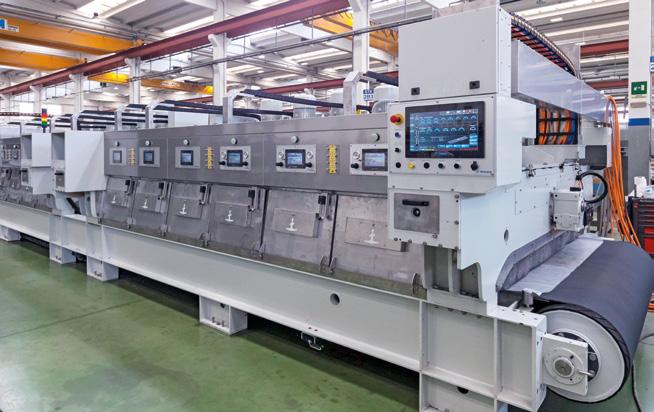
Matrix is the new Ancora technology for the lapping and polishing of porcelain stoneware, specifically designed for large slabs. Powerful and reliable, it represents the ultimate solution to the problems associated with large glossy surfaces, offering unrivalled surface finish quality, perfect gloss and outstanding productivity.
Available in the models HD 4T (4 beams) and HD 2T (2 beams), Matrix can mange sizes from 80 to 200 cm and thicknesses from 3 to 30 mm.
The machine features completely independent beam-bybeam management of the swing stroke, of the speed and of the different decelerations on the whole slab front. It also offers completely independent head-by-head management of the working pressures divided into the various zones, as well as of speed and direction of rotation. In addition, Matrix stands out for its new swing transmission and lubrication system. It also comes with different types of heads, which can be installed according to the customer’s specific requirements. With Matrix it is possible to work continuously (classical
Tornado è dotata di mandrini automatici ad alta affidabilità Smart HP, dedicati a grandi asportazioni ed elevati spessori. Questi aiutano l’operatore a regolare l’usura degli utensili dal pannello HMI e a migliorare l’efficienza operativa. La macchina così equipaggiata richiede solo 15-20 minuti per l’impostazione e il cambio del formato di lavoro. Per evitare problemi di comunicazione, la parte elettronica del mandrino è svincolata dalla parte meccanica. La manutenzione più semplice ed economica, i minori costi operativi e la riduzione dei consumi energetici rendono Tornado anche una soluzione tecnologica sostenibile.
INCISIONE E SPACCO
Il processo di squadratura è preceduto dalle fasi di incisione e spacco. Tornado è quindi equipaggiata con i sistemi:
• Kros, incisore HD che realizza un’incisione in continuo precisa ed affidabile con il vantaggio di una facile gestione nel cambio formato;
• Arko, il sistema di spacco HD che si distingue
per la rigidità e la potenza di spacco in continuo, ideale per sottoformati di alto spessore;
• Combicut HD, la soluzione pratica e compatta per una più semplice gestione dei sottoformati.
LA LAPPATRICE/LEVIGATRICE MATRIX
Matrix è la nuova tecnologia Ancora per la lappatura e la levigatura del gres porcellanato, specifica per grandi lastre. Potente ed affidabile, rappresenta la soluzione definitiva alle problematiche legate alle grandi superfici lucide, offrendo qualità di finitura superficiale, perfetta brillantezza e produttività ineguagliabili.
Disponibile nei modelli HD 4T (4 travi) e HD 2T (2 travi), Matrix è in grado di gestire formati da 80 a 200 cm, e spessori dai 3 ai 30 mm.
Dal punto di vista costruttivo, la macchina presenta una gestione completamente indipendente, trave per trave, della corsa del brandeggio, della velocità e dei differenti rallentamenti su tutto il fronte lastra; offre una gestione completamente indipendente anche testa per testa per quanto riguarda le pressioni di lavoro suddivise nelle varie zone, la velocità e il senso di rotazione. Matrix si caratterizza anche per il nuovo sistema di trasmissione e lubrificazione del brandeggio. Porta inol-
88 CWR 152/2023 FOCUS ON
method) or in slab detachment mode (space between one slab and another). It also allows tools to be changed on one beam while the others are in operation, without production stops. Its equipment makes it perfect for surface processing of any kind of material: wet or dry grit, full-body technical stoneware and digital structures.
Matrix electronics are based on the new dedicated Matrix Smart Solution software for the production management and control and the correction of defects. The machine also features smart diagnostic technology for the automatic management of all alarms, which makes the machine user-friendly while improving performance in terms of both quality and quantity.


POWERLUX SUPER GLOSS TREATMENT
Powerlux is the new Ancora technology for super gloss treatment, which allows to obtain super glossy products, while maintaining the highest levels of productivity and eliminating any defects. The increase in gloss level ranges from 30 to 50 gloss points.
Two models are available:
• Powerlux HD XL, specifically designed for slabs with sizesfrom 120 to 200 cm;
• Powerlux, for more traditional sizes from 60 to 120 cm.
The machine has a feed speed from 5 to 20 m/min., and can manage thicknesses ranging from 3 to 30 mm. It is equipped with an innovative product dosing system and a new exclusive oversized oscillating head, designed to work on large areas while coping effectively with surface depressions. Powerlux is able to independently manage treatment products (by type and quantity) on the two beams. It can also be equipped with various integrated control systems, such as the automatic temperature control system and the controlled and independent treatment management system.The machine is equipped with a SMART software with new dedicated tools for processing management, as well as diagnostic technology for the automatic management of all alarms. ◼
tre in dotazione diverse tipologie di teste, installabili a seconda delle specifiche esigenze dell’azienda ceramica.
Con Matrix è possibile lavorare il materiale in continuo (metodologia classica) o in modalità stacco lastre (spazio tra una lastra e l’altra). Consente inoltre di cambiare gli utensili su una trave mentre le altre sono in funzione, senza fermi di produzione. La sua dotazione la rende perfetta per le lavorazioni superficiali di qualsiasi materiale: graniglia a umido e a secco, gres tecnico tutta massa, strutture in digitale. L’elettronica di Matrix si basa sul nuovo software dedicato Matrix Smart Solution per la gestione e il controllo della produzione e la correzione delle difettologie. La macchina dispone inoltre di una tecnologia di diagnostica smart per la gestione automatica di tutti gli allarmi, che la rende user-friendly, oltre ad aumentare la resa in termini di qualità e quantità.
TRATTAMENTO SUPER GLOSS POWERLUX
Powerlux è la nuova tecnolo-
gia Ancora per il trattamento super gloss, che consente di realizzare un prodotto esteticamente super lucido, mantenendo la massima produttività ed eliminando eventuali difettologie. L’aumento della lucentezza va dai 30 ai 50 punti di gloss. Due i modelli disponibili:
• Powerlux HD XL, specifico per lastre con formato da 120 a 200 cm;
• Powerlux, per formati più tradizionali da 60 a 120 cm.
La macchina presenta una velocità di avanzamento da 5 a 20 m/min. ed è in grado di gestire spessori da 3 a 30 mm. È dotata di un innovativo sistema per il dosaggio del prodotto e di una nuova esclusiva testa maggiorata oscillante, sviluppata per lavorare grandi superfici e gestire l’eventuale presenza di avvallamenti. Powerlux si caratterizza per la gestione indipendente dei prodotti di trattamento (per tipo e quantità) tra le due travi.
È inoltre possibile dotarla di diversi sistemi di controllo integrati, quali il sistema di controllo automatico della temperatura e il sistema di gestione controllata e indipendente del trattamento. La macchina dispone di un software SMART con nuovi tool dedicati per la gestione delle lavorazioni, nonché di una tecnologia di diagnostica per la gestione automatica di tutti gli allarmi. ◼
finishing & surface treatment 89 CWR 152/2023
SurfaceS Group

World of Finishes (WOF), the advanced finishing system from Surfaces Group, is garnering widespread acclaim amongst leading ceramic tile manufacturers. It is a tailor-made system for unique and diversified ceramic surface finishing applications (floors, walls and large formats) that are both exclusive and replicable on a large scale. The process developed by Surfaces Group allows for a wide range of shade variation effects on individual tiles, giving them unique appeal and a similar look to antique natural stone.
Designed for natural, nonlapped surfaces, WOF is capable of creating previously impossible variations and textured effects thanks to the combination of different tools and unique equipment set-ups, thereby ensuring the highest possible degree of customisation. This process further enhances the material effects by altering the texture of the surface.
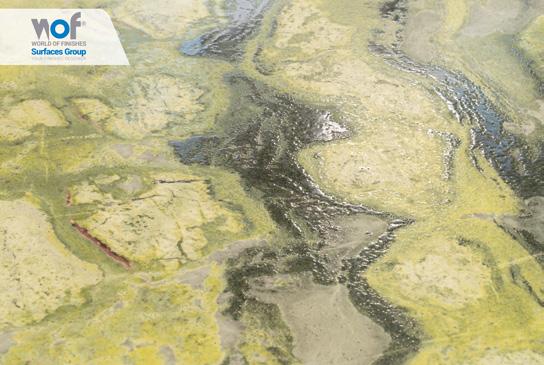
It uses hybrid tools that combine the flexibility of rubber with the abrasive power of diamond. Fickert heads used for polishing alternate with satin finishing tools to create a succession of gloss and matt areas, as well
as extra-thick surface effects. Along with soft or marked shade variations and different finishes within the same tile, the process can create real differences in terms of materials and irregular stratifications that faithfully replicate the timeworn look of ancient stone.
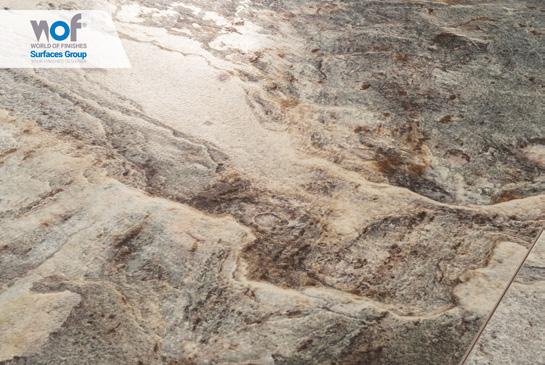
The machine set-up includes specific software programmes capable of creating an infinite range of surface variations that enhance the material effects.
The innovative system was developed by the Surfaces Group’s R&D team in collaboration with the group’s various brands (Adi, Surfaces T.A., Luna Abrasivi, Nocoat, International Chips and Vincent), all of which stand out for their high-quality finishing systems for the ceramic sector as well as glass, stone and agglomerates.
WOF will once again be showcased in the Surfaces Group booth at Cersaie 2023 (Hall 33/Booth D22-E33), where visitors will have the chance to discover all the applications developed to date by combining latest-generation tools and treatments, such as Dry Cut, Flexy Velvet, Flat Reflex Polishing Uniform + Supershine, Remove and NFS.
■■■
World of Finishes (WOF), il sistema di finitura avanzato proposto da Surfaces Group, sta ricevendo ampi riconoscimenti da parte dei più importanti produttori ceramici. Si tratta di un sistema tailor-made per applicazioni uniche e diversificate, esclusive ma replicabili su larga scala, dedicato alle finiture delle superfici ceramiche (pavimenti, rivestimenti e grandi formati). Il processo messo a punto da Surfaces Group permette di ottenere un ampio range di stonalizzazioni sulla singola piastrella, che diventa unica nel suo genere con un’allure molto simile alla pietra naturale antica.
Destinato alle superfici naturali non lappate, WOF consente di creare variazioni e texturizzazioni fino ad ora impossibili, grazie alla combinazione di utensili diversi e setup esclusivi degli impianti, assicurando il massimo livello di personalizzazione. Una lavorazione che esalta ancor di più gli effetti materici andando ad incidere sulla stessa struttura superficiale. Vengono impiegati utensili ibridi che abbinano la flessibilità della gomma alle potenzialità abrasive del diamante. Fickert per levigare si alternano a satinatori, creando alternanze di gloss e matt, ma anche di spessorizzazioni superficiali.
Sono possibili infatti non solo stonalizzazioni, soft o marcate, finish diversi all’interno della stessa piastrella, ma vere e proprie diversità materiche e stratificazioni irregolari che replicano fedelmente l’usura del tempo tipica delle pietre antiche.
Il set-up dei macchinari prevede specifici programmi software che permettono di creare una gamma infinita di variazioni superficiali che vanno ad esaltare gli effetti materici.
Alla base dello sviluppo dell’innovativo sistema, il forte impegno in ricerca da parte del team R&D di Surfaces Group, oltre alle sinergie con i know how dei diversi brand del gruppo (Adi, Surfaces T.A., Luna Abrasivi, Nocoat, International Chips e Vincent), che rappresentano l’eccellenza nei sistemi di finitura dedicati non solo al settore ceramico, ma anche a quello del vetro, della pietra e degli agglomerati. WOF sarà di nuovo protagonista al prossimo Cersaie 2023 presso lo stand Surfaces Group (Pad. 33/Stand D22-E33), dove sarà possibile esplorare nel concreto tutte le applicazioni fino ad ora sviluppate combinando utensili e trattamenti di nuova generazione, quali Dry Cut, Flexy Velvet, Flat Reflex Polishing Uniform + Supershine, Remove e NFS.
90 CWR 152/2023
Donatoni
A small footprint, ease of use and maximum flexibility and versatility in terms of the machining process are just a few of the features that make the Donatoni P425 the ideal solution for machining complex surfaces such as ceramic, especially for the production of kitchen countertops, bathroom vanity tops and floor and wall tiles
The solution consists of a onepiece structure for rapid installation, a high-quality electric spindle designed for energy saving, and a fixed table made of plywood as standard but with layered wood and rubber construction on request.
The Donatoni P425 is also equipped as standard with an ergonomic and functional control panel, a dressing station and sliding front guards specially designed for low weight while permitting maximum visibility of the work area. The standard solution can be expanded with various optional extras, including a camera complete with software, TOOL+, Move System and disc presetting unit and slab thickness detector. The camera with integrated Photoslab software automatically detects the surface of the slabs present on the working table, thereby speeding up machine programming and allowing for optimal slab positioning and defect detection.

The machine is equipped with Parametrix, the software developed by Donatoni since 2006 which has a user-friendly interface allowing even the most complex operations to be programmed in just a few simple steps. In the specific case of cutting ceramic materials, Parametrix allows for detensioning cuts


to reduce internal slab stress, cutting speed acceleration or deceleration to lower the risk of material breakage, and automatic blade dressing.
■■■
Ingombri ridotti, facilità d’uso, massima flessibilità e versatilità in termini di lavorazione, sono solo alcune delle caratteristiche che rendono la Donatoni P425
la macchina ideale per effettuare lavorazioni su superfici complesse come quella ceramica, in particolare per la produzione di piani cucina, top bagno, rivestimenti e pavimenti in ceramica
La soluzione è composta da una struttura monoblocco che garantisce una rapida installazione, da un elettromandrino di altissima qualità concepito in un’ottica di risparmio energetico e da un banco fisso che viene fornito in legno multistrato, ma che su richiesta può essere realizzato anche in layer legno e gomma. Di base, la Donatoni P425 è provvista anche di un pannello di controllo ergonomico e funzionale, di una stazione di ravvivatura e di protezioni anteriori scorrevoli concepite appositamente per essere leggere e dare al contempo la massima visibilità possibile dell’area di lavoro.
Alla soluzione standard è possibile aggiungere diversi optional, tra cui la fotocamera completa di software, il TOOL+, il Move System e il gruppo presetting disco e tastatore della lastra.
La fotocamera con il proprio software integrato Photoslab consente di rilevare automaticamente la superficie delle lastre presenti sul banco di lavoro, permettendo di velocizzare la programmazione della macchina, ma anche di posizionare al meglio i
finishing & surface treatment

pezzi e rilevare eventuali difetti delle lastre.
La macchina è equipaggiata con Parametrix, software prodotto e sviluppato da Donatoni a partire dal 2006, che grazie alla sua interfaccia user-friendly consente di programmare in pochi semplici passaggi anche le operazioni più
complesse. Per quanto riguarda specificatamente il taglio ceramico, Parametrix consente tagli di detensionamento per diminuire lo stress nelle lastre, l’accelerazione e la decelerazione della velocità di taglio per ridurre la possibilità di rotture nel materiale e la ravvivatura automatica del disco.
91 CWR 152/2023 LATEST TECHNOLOGIES ON
Bavelloni
Founded more than 70 years ago, Bavelloni is one of the world’s leading manufacturers of flat glass processing machines and diamond tools. The experience it acquired in the glass sector proved crucial for expanding its expertise in the related field of ceramic machining technologies.

Its range of offerings includes the VE ST series vertical edging machines, which are available in multiple configurations and with a variable number of wheels (from 4 to 14 positions) and are capable of meeting a variety of edge finishing requirements for both slabs and strips. With their rugged construction and high-quality materials, these machines are durable and reliable and deliver high performance for minimal maintenance.

The VE ST edging machines are designed to be able to perform vertical processing (up to a maximum height of 3 m), thereby reducing their footprint compared to traditional horizontal-feed machines. This also makes it easier and quicker for the operator to set up the machine. For each size change it is only necessary to enter the thickness and removal quantity via the control panel, resulting in significant time savings. The most common procedure in the production of staircases and kitchen countertops is without question raw grinding at 46° followed by slab gluing. This operation, which is often still carried out manually, can now be completed in record time and with great precision using all the models in the VE ST series, even those equipped exclusively with 4 or 5 diamond wheels (VE 350 4 / 4 S / 5 / 5 FP ST). These models (with the exception of VE 350 4 S ST) can also grind the slab edge if required, while VE 350 5 FP ST can also produce a back arris.
In addition to 46° chamfering,
models with 8 and 11 wheels (VE 350 8 / 11 ST) can produce both raw and polished flat edges with arrises for kitchen countertops. To guarantee maximum flexibility, these machines are equipped with multifunctional back arris spindles (which are also suitable for raw or polished grinding of strips with arrises) and when necessary they can stop arris processing according to a set measurement (for kitchen countertops with a peninsula on one side).
Models with 10 and 14 spindles (VE 500 V10 / V14 ST) are certainly the most complete in the range, and as well as performing the same finishes as the VE 350 8 ST and 11 ST are also equipped with a 6-motor tilting unit to produce chamfers at a variable angle from 0° to 45° with both a raw and polished finish. The corresponding SCS models are equipped with an automatic spindle control system which improves finish quality, reduces waste and optimises wheel consumption.
Thanks to close cooperation with its tool division, Bavelloni is also able to supply wheels capable of producing the desired finish with vertical edgers. The range includes high productivity metal and resin bond cup wheels that are specifically designed for grinding and polishing the edges of slabs and can meet a variety of production requirements. Bavelloni diamond wheels are produced in various geometries and feature a high-performance metal bond. Polishing wheels in numerous grit sizes are also available to ensure a high-quality finish. Thanks to the snail lock system, changing polishing tools is quick and easy.
■■■
Operativa da oltre 70 anni, Bavelloni si configura come uno dei principali produttori al mondo di macchi-
ne per la lavorazione del vetro piano e utensili diamantati. L’esperienza maturata nel settore si è rivelata strategica per allargare le competenze anche nell’ambito delle tecnologie per la lavorazione dei materiali ceramici che presentano molte analogie con il vetro.
Tra le proposte, le molatrici verticali serie VE ST, disponibili in molteplici configurazioni e con un numero di mole variabili (da 4 a 14 posizioni), adatte a soddisfare molteplici esigenze di finitura del bordo sia di lastre che di strisce. La struttura robusta e l’utilizzo di materiali di qualità conferiscono longevità e affidabilità a questi macchinari, riducendo al minimo la manutenzione e assicurando prestazioni di alto livello.

Le molatrici VE ST sono concepite per profilare in verticale (fino a massimo 3 m di altezza) riducendo gli ingombri rispetto a macchinari tra-
dizionali che lavorano in orizzontale. Questa caratteristica permette inoltre di semplificare e velocizzare le operazioni di settaggio macchina da parte dell’operatore. Ad ogni cambio di formato, infatti, sarà necessario inserire solo spessore e asportazione dal pannello di controllo con evidente risparmio di tempo.
La lavorazione attualmente più diffusa nella produzione di scale e piani cucina è, senza dubbio, la profilatura dello smusso grezzo a 46° per successivo accoppiamento delle lastre mediante incollaggio. Questa operazione, spesso realizzata ancora manualmente, si può invece ottenere in tempi record e con grande precisione con tutti i modelli della serie VE ST, anche quelli dotati esclusivamente di 4 o 5 mole diamantate (VE 350 4 / 4 S / 5 / 5 FP ST). Questi modelli (eccetto VE 350 4 S ST) sono in grado di eseguire anche la rettifica del filo,
92 CWR 152/2023 LATEST TECHNOLOGIES ON
se richiesto; VE 350 5 FP ST realizza inoltre anche il filetto posteriore. I modelli a 8 e 11 mole (VE 350 8 / 11 ST), oltre allo smusso grezzo a 46°, permettono di realizzare anche il filo piatto grezzo e lucido dei piani cucina. Per garantire massima versatilità, queste molatrici montano un mandrino posteriore multifunzione che può eseguire anche il filettino standard su costa dritta con filetti (grezzi o lucidi) o interrompere la lavorazione del filet-
to in caso di piani cucina con penisola su un lato.
Le molatrici a 10 e 14 mole (VE 500 V10 / V14 ST), sicuramente le più complete della gamma, oltre a eseguire tutte le lavorazioni già previste per i modelli VE 350 8 ST e 11 ST, dispongono di un gruppo basculante a 6 motori, per realizzare smussi ad angolo variabile da 0° e 45°, con finitura sia grezza che lucida. Le corrispondenti versioni SCS offrono una maggiore automazione grazie
tecno Diamant
Tecno Diamant is one of the leading manufacturers of diamond tools and offers innovative solutions for finishing and treating ceramic surfaces.


With almost thirty years of experience and expertise, the Formigine-based company is able to pre-empt styles and trends and add value to finished products in terms of quality and aesthetics. For this purpose, the new range of Fickert tools presented at Tecna 2022 are proving to be an invaluable aid in slab and tile finishing operations, as they are capable of transforming the surface layers and giving them extremely high levels of gloss. As well as adapting easily to existing technologies, these Fickert tools stand out for their abil-
ity to achieve an infinite variety of finishes with any kind of machining process. Thanks to their high flexibility, these tools can be adapted to each manufacturer’s individual requirements by customising the diamond compound, altering the level of hardness or softness of the rubber and customising the arrangement of the blocks.

Abrasive Fickert tools are designed and manufactured by expert technicians at the Tecno Diamant Lab in Spezzano, a space that has been expanded in recent years and equipped with state-of-the-art Industry 4.0 technology for completely inhouse production.
Tecno Diamant can offer individual consulting and guarantees prompt and efficient deliveries.
al sistema di controllo dei mandrini automatico che migliora la qualità del prodotto finito, riduce gli scarti di produzione e ottimizza l’utilizzo e il consumo delle mole.
Grazie alla sinergia con la divisione utensili, Bavelloni è in grado di offrire anche le mole adatte per ottenere la finitura desiderata con le molatrici verticali. La gamma include infatti una varietà di mole a tazza metalliche e resinoidi per molatrici verticali, appositamente pensate
per la molatura e lucidatura del bordo delle lastre e adatte a soddisfare svariate esigenze produttive. Le mole diamantate Bavelloni, prodotte in diverse geometrie, sono dotate di legante metallico che assicura prestazioni elevate. Sono inoltre disponibili mole lucidanti in numerose granulometrie che assicurano una finitura di qualità. Grazie all’attacco a chiocciola, la sostituzione degli utensili lucidanti in macchina risulta inoltre semplice e rapida.
■■■
Tecno Diamant, tra i leader nella produzione di utensili diamantati, offre soluzioni innovative per la finitura e il trattamento delle superfici ceramiche.
Con un know-how quasi trentennale, l’azienda di Formigine (MO)
è in grado di anticipare stili e tendenze conferendo valore aggiunto al prodotto finito in termini di qualità ed estetica. In tal senso, la nuova gamma di prodotti Fickert presentata in occasione di Tecna 2022 si sta rivelando un prezioso alleato nelle operazioni di finitura di lastre e piastrelle, in quanto permette di modificare gli strati superficiali, conferendo alti livelli di super gloss. Oltre ad adattarsi facilmente alle tecnologie esistenti, i Fickert si distinguono per la capacità di realizzare infini-
te varianti di finitura su ogni tipo di lavorazione. Grazie alla grande flessibilità, questi utensili possono essere adattati alle diverse esigenze di ogni produttore, calibrando ad hoc la mescola diamantata, modificando il livello di durezza o morbidezza della gomma e personalizzando la disposizione dei blocchi.
I Fickert abrasivi vengono progettati e realizzati da tecnici esperti all’interno del Tecno Diamant Lab di Spezzano, uno spazio potenziato negli ultimi anni e completo delle più innovative tecnologie per l’industria 4.0, contraddistinto da una produzione completamente home made.
Tecno Diamant è in grado di offrire consulenze personalizzate e un servizio di consegna tempestivo ed efficiente.
93 CWR 152/2023
finishing & surface treatment
DellaS Group
The Dellas Group is a global manufacturer of diamond tools for ceramic lapping and finishing operations that celebrates its 50th anniversary this year. In response to the growing demand for increasingly innovative ceramic furnishing elements in both industrial and urban applications, the Italian company has developed a range of even more versatile tools such as the 170 mm long Fickert heads for lapped finishing
In the polishing process, it is important to ensure that the polished surface is as flat as possible. For this purpose, the Dellas R&D lab has conducted process optimisation studies focusing on various aspects regarding the properties of the tool and the material being machined.
A surface is described as glossy when incident light is reflected with the lowest possible degree of scattering. Mechanically, this is achieved by abrading the surface uniformly to produce regular, homogenous micro-scratches whose depth and width are of a similar order of magnitude to the wavelength of the incident light.
For Dellas, optimising the polishing process means reducing costs and/or production time and improving finished product quality in terms of finish and




gloss. Its specialist team works closely with ceramic companies and observes the operation of automatic finishing lines in order to determine their specific requirements. New product prototypes are then studied and developed at the company’s facility in Lugo (Verona). Before being introduced to the market, they undergo tests, measurements and performance evaluations with a view to ensuring continuous improvement.
■■■
Dellas Group, che quest’anno festeggia 50 anni di attività, opera a livello mondiale nella produzione di utensili diamantati per la lappatura e finitura della ceramica. In risposta alla crescente richiesta di elementi di arredo in cera-
mica sempre più innovativi, sia in campo industriale che urbanistico, l’azienda italiana ha sviluppato utensili ancora più versatili come i Fickert da lappato lunghezza 170 mm.
Nel processo di lucidatura è importante rendere una superficie lucida anche il più planare possibile. Per questo, il laboratorio R&S di Dellas ha eseguito studi sull’ottimizzazione del processo, che vede coinvolti diversi fattori connessi alle proprietà dell’utensile e del materiale in lavorazione. Una superficie si definisce lucida quando la luce, incidendo su di essa, viene riflessa con il minor grado di dispersione. Meccanicamente ciò si ottiene abradendo in modo uniforme la superficie, fino ad ottenere dei micro-graffi regolari e omogenei, di profondità e
Gmm inDuStrial componentS
GMM Industrial Components will continue to act as the exclusive distributor for the EMEA region for Gates’ innovative Flex grinding belts featuring Tarax technology. The renowned US manufacturer, a global leader in the field of power transmission products and services, has renewed its contract with GMM Group’s parent com-
pany. The aim of the partnership is to deliver high added-value solutions based on the use of advanced technologies capable of maximising production efficiency in ceramic surface grinding and finishing plants while at the same time improving energy performance for greater plant sustainability. The unique high-performance and long-last-
ing Flex grinding belts can be integrated into all major grinding systems and use innovative materials based on the patented Tarax technology, which significantly extends the belt service life in even the most challenging conditions of speed and temperature. Gates grinding belts are easily recognisable due to their orange or green cover with a
ampiezza paragonabili (come ordine di grandezza) alla lunghezza d’onda della luce incidente. Per Dellas ottimizzare il processo di lucidatura significa ridurre i costi e/o i tempi della produzione, migliorando la qualità dei prodotti finiti in termini di finitura e lucido. Il suo personale specializzato collabora sinergicamente con le aziende ceramiche, osservandone la produzione sulle linee di finitura automatica per comprenderne le specifiche esigenze. Successivamente, presso lo stabilimento di Lugo (Verona), dove ha sede l’azienda, vengono studiati e sviluppati i prototipi dei nuovi prodotti che, prima di essere presentati al mercato, vengono sottoposti a test, misurazioni e valutazioni delle performance, in un’ottica di miglioramento continuo.
new and tougher green coloured tooth compound. They require less maintenance, resulting in less downtime, increased production, less wastage of resources and a smaller environmental impact.
■■■
Gmm Industrial Components continua la distribuzione in esclu-
94 CWR 152/2023 LATEST TECHNOLOGIES ON
siva per l’area EMEA delle innovative cinghie da rettifica Flex con tecnologia Tarax a marchio Gates. Il noto produttore americano, leader mondiale nei prodotti e servizi per la trasmissione di potenza, ha confermato la partnership all’azienda capofila del Gruppo Gmm. La collaborazione tra le due realtà punta alla fornitura di soluzioni ad alto valore aggiunto, tramite l’utilizzo di tecnologie avanzate, in grado di elevare al massimo gli standard di efficienza produttiva negli impianti di rettifica e finitura delle superfici ceramiche e, di pari passo anche

al miglioramento delle prestazioni energetiche per una maggiore sostenibilità degli impianti. Le particolari cinghie da rettifica Flex ad alte prestazioni e durabilità, integrabili nei principali impianti di rettifica, impiegano materiali innovativi della tecnologia brevettata Tarax, in grado di aumentare notevolmente il ciclo di utilizzo delle cinghie, anche in condizioni di velocità e temperature severe. Facilmente riconoscibili dalla copertura tecnica di color arancione o verde, con un nuovo e più resistente compound per denti di colore verde, le cinghie da retti-
fica Gates necessitano di manutenzioni ridotte, che si traducono quindi in minori fermo impianti
con conseguente incremento produttivo e minore spreco di risorse anche per l’ambiente.
elettromeccanica malaGuti
Elettromeccanica Malaguti is the GMM Group’s industrial revamping company which specialises in the regeneration and repair of mechanical and electromechanical components for industrial automation. The expertise of specialised technicians combined with the use of premium brand spare parts guarantees the quality of repairs and allows worn mechanical components to function efficiently.
An SKF Certified Partner specialising in the revamping of all components used in finishing departments, Elettromeccanica Malaguti completely reconditions the grinding spindle and restores it to the same level of production efficiency as a new component. In all its spindle reconditioning operations, Elettromeccanica Malaguti replaces the internal mechanical components (shaft, seals, bearings) with original SKF components. In addition, it uses special greases for the first internal lubrication in order to reduce the operating temperature of the spindle, thereby extending its service life and postponing replacement.
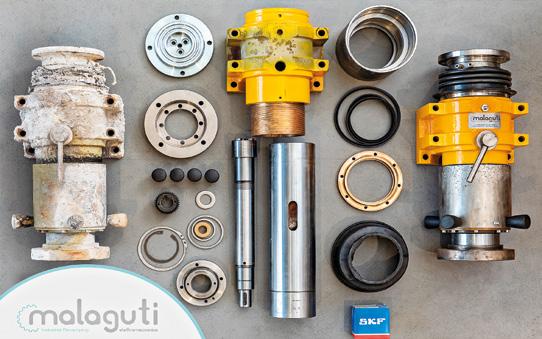
To guarantee continuous and efficient production and eliminate waiting times, Elettromeccanica Malaguti also provides an onsite replacement service called Gemini which involves collecting non-functioning spindles directly at the client’s factories and at the same time supplying reconditioned, tested and certified components. This important solution is part of the Gmm Group’s programme of sustainability-oriented services, in this case promoting the reuse of valuable industrial resources according to the principles of the circular economy.
■■■
Elettromeccanica Malaguti è l’azienda del Gruppo Gmm che si occupa di revamping industriale, specializzata nella rigenerazione e riparazione di componenti meccanici ed elettromeccanici dedicati all’automazione industriale. La competenza di tecnici specializzati e l’utilizzo di ricambi delle migliori marche garantiscono la qualità delle riparazioni, consentendo efficienza e funzionalità a componenti meccanici usurati.
Specializzata nella rigenerazione di
tutti gli elementi adoperati nei reparti di rifinitura, Elettromeccanica Malaguti, “SKF Certified Partner”, fornisce un revamping completo del mandrino da rettifica, in grado di ristabilire il livello di efficienza produttiva del prodotto rigenerato al pari del componente nuovo. I mandrini rigenerati da Elettromeccanica Malaguti, infatti, prevedono la sostituzione di tutte le componenti meccaniche interne (albero, tenute, cuscinetti) con componenti originali SKF. Per la prima lubrificazione interna, inoltre, è previsto l’utilizzo di specifici grassi che permettono di ridurre la temperatura di esercizio del mandrino, allungandone la vita utile e posticipan-
done la sostituzione.
Per garantire una produzione continua ed efficiente, azzerando di conseguenza i tempi di attesa, Elettromeccanica Malaguti fornisce anche il servizio di pronta sostituzione in loco denominato “Gemini”, il quale prevede il ritiro dei mandrini non più funzionanti direttamente presso i vari stabilimenti del cliente, e la contemporanea consegna di elementi già rigenerati, collaudati e certificati. Questa significativa soluzione s’inserisce in un piano di fornitura da parte del Gruppo Gmm di servizi orientati alla sostenibilità che promuovono il riutilizzo di preziose risorse industriali secondo i dettami dell’economia circolare.
95 CWR 152/2023
finishing & surface treatment
In recent years, ceramic tiles have evolved from the status of a commodity to a material that combines powerful aesthetic impact with the highest levels of technical performance. This change is attributable both to digital decoration and to the advent of large sizes and surface finishing treatments such as lapping and polishing. Porcelain tiles stand out for their exceptional technical performance such as mechanical strength, chemical resistance, durability and stain resistance. However, the polishing process often leads to a significant deterioration in terms of cleanability. Polishing, and to a lesser extent lapping, removes a few microns from the surface layer, opening up the micro-porosity typical of both glazed and unglazed porcelain. If they are not adequately protected, these open pores are easily attacked by dirt and chemical and physical agents, compromising the integrity of the product.

With this in mind, Smaltochimica has developed Smaltoclean, a complete line of products for the treatment of lapped and polished surfaces capable of restoring stain resistance performance and reducing the sensitivity to chemicals typical of porcelain tiles. Smaltoclean products significantly improve the treated surface’s resistance to coloured, acid
finishing & surface treatment
and alkaline staining without leaving rings or altering the gloss level or sheen. The range consists of:
• an acid pickling agent that prepares the surfaces by removing residues left from the polishing process and creating micro-roughness that ensures excellent adhesion of subsequent treatments;


• specific colloidal-based treatments which fill and seal open porosities;
• a series of dyes that can be added to protective treatments to enhance the finishing of dark coloured products;
• innovative formulations capable of producing an in-situ post-vitrification process in a small thickness which restores the integrity of the surface compromised by polishing treatments.
■■■
Negli ultimi anni la ceramica si è resa protagonista di una vera e propria rivoluzione cambiando radicalmente il concetto di piastrella che da “commodity” è diventata un materiale che unisce un grande impatto estetico a prestazioni tecniche di altissimo livello. Protagonisti di questo cambiamento, oltre alla decorazione digitale, sono l’avvento dei grandi formati e i trattamenti di finitura superficiale tra cui la lappatura e la levigatura.
Il gres porcellanato si contraddi-
stingue per le ottime prestazioni tecniche, quali la resistenza meccanica e chimica, la durevolezza e l’ottima resistenza alle macchie. Qualora sia sottoposto a levigatura, si nota frequentemente un netto peggioramento della sua pulibilità. La levigatura e, in misura minore, la lappatura asportano una porzione di qualche micron dello strato superficiale aprendo micro-porosità presenti in profondità sia nel gres smaltato che in quello tecnico. Se non adeguatamente protette, queste discontinuità vengono facilmente aggredite da sporcizia e agenti chimico-fisici compromettendo l’integrità del prodotto. Smaltochimica ha sviluppato Smaltoclean, un’intera linea di prodotti per il trattamento delle superfici lappate o levigate in grado di ripristinare la resistenza alla macchia e ridurre la sensibilità agli agenti chimici tipici del gres porcellanato.


I prodotti Smaltoclean migliorano sensibilmente la resistenza a macchie colorate, acide e basiche della superficie trattata senza lasciare aloni né alterare la lucentezza e la riflessione. La gamma si compone di:
• un decapante acido per preparare le superfici rimuovendo i residui lasciati dalla precedente levigatura e producendo micro-asperità superficiali che garantiscono l’ottimo aggrappo dei trattamenti successivi;
• specifici trattamenti basati su particelle colloidali che riempiono e sigillano le porosità aperte;
• una serie di coloranti addizionabili ai trattamenti protettivi per esaltare il finishinig dei prodotti scuri;
• vari formulati innovativi in grado di produrre in situ una post-vetrificazione in spessore sottile che ripristina l’integrità della superficie compromessa dalla levigatura.
FOR 30 YEARS THE MOST INFLUENTIAL INTERNATIONAL MAGAZINES FOR THE CERAMIC INDUSTRY & DESIGN PROFESSIONAL



Smaltochimica LATEST TECHNOLOGIES ON

www.tecnodiamant.it
TARGET NET ZERO: APULUM RISES TO THE CHALLENGE
OBIETTIVO NET ZERO: APULUM ACCOGLIE LA SFIDA
Milena Bernardi - m.bernardi@tiledizioni.it
One of Europe’s largest tableware manufacturers and the market leader in Romania, Apulum Porcelain Factory has been operating since 1970 in Alba Iulia, the city built on the site of the Roman fort of Apulum and former capital of the Principality of Transylvania. Here, in a 160,000 square metre production facility, the company produces 50 million pieces/year, 90% of which are exported. The company’s main markets are Europe and Mexico, but it also ships its products to Japan, South Korea, Hong Kong and North America, where they are sold by its biggest customer IKEA.
Apulum has seen steady growth and development in recent years, and posted revenues of €36 million in 2021. Its success owes much to the focus on innovation and the state-of-the-art technology introduced by the new owner, the Italian company Rody Time Italia led by Alvaro Santini and Rodica Vasin, which has been the majority shareholder since 2007. In particular, the company has made significant investments in process automation and digitalisation. “The use of robotics enables even the most complex product formats to be produced and finished to perfection, significantly reducing the percentage of waste and making the process more efficient and aligned with our sustainability goals,” the company said.
As Apulum’s main technology supplier since 2010, Sacmi is supporting the company through its process of expansion and upgrading, which now includes a focus on the circular economy and a zero-impact future.
TARGET ZERO WASTE
A Sacmi ATM18 spray dryer designed specifically for tableware body production was recently installed at the Alba Iulia

Tra i più importanti produttori europei del tableware e primo assoluto in Romania, Apulum Porcelain Factory opera dal 1970 ad Alba Iulia - l’antica Apulum, già capitale del Regno di Transilvania. Qui, in uno stabilimento produttivo di 160mila mq di superficie, produce 50 milioni di pezzi/anno di cui il 90% esportati. Le principali destinazioni sono l’Europa e il Messico, ma gli articoli fabbricati ad Alba Iulia si possono trovare facilmente anche in Giappone, Corea del Sud, Hong Kong o in Nord America, commercializzati negli store di IKEA, il principale cliente dell’azienda rumena.

Uno sviluppo e una crescita costante hanno caratterizzato gli anni più recenti della storia di Apulum che ha chiuso il 2021 con un fatturato di 36 milioni di euro. Questo si deve soprattutto allo spirito innovativo e al ricorso alle tecnologie più moderne voluto dalla nuova proprietà, ossia la italiana Rody Time Italia guidata da Alva-
ro Santini e Rodica Vasin che detiene la maggioranza relativa dal 2007. Importanti gli investimenti in automazione e digitalizzazione dei processi. “Grazie alla robotica – spiegano in azienda – è possibile realizzare e ritoccare alla perfezione anche i prodotti con i formati più complessi, riducendo notevolmente la percentuale di scarto e portando il processo ad una maggiore efficienza e in linea con i nostri obiettivi di sostenibilità”.
Partner tecnologico di spicco, con intense collaborazioni che proseguono dal 2010, è Sacmi, che sta supportando l’azienda nel suo percorso di espansione e qualificazione produttiva, focalizzata oggi anche all’implementazione dell’economia circolare verso un futuro “a impatto zero”.
OBIETTIVO RIFIUTI ZERO
A fare recentemente il suo ingresso nello stabilimento di Alba Iulia è un atomizzatore Sacmi ATM18, specifico per la produzione di impasti per stoviglieria, che consentirà ad Apulum di internalizzare e verticalizzare parte della produzione di granulato e di riciclare totalmente in linea gli scarti di processo, riutilizzandolo come materia prima. L’obiettivo, infatti, è di valorizzare gli scarti di lavorazione, con il riciclo integrale degli scarti verdi e di quelli cotti, previa macinazione, all’interno dell’atomizzatore.
98 CWR 152/2023
of its granulate production and recycle process waste totally in-line, reusing it as a raw material. The goal is to fully recycle green scrap and waste (and fired scrap after grinding) in the spray dryer.
This farsighted project was agreed on in December 2021, well before the international situation regarding energy prices and raw materials procurement became so critical. The machine has an evaporating capacity of 1,000 litres/hour and is capable of producing approximately 1.6 tonnes/hour of spray-dried powder (the precise quantity depends on the standard moisture content of the slip entering the machine and the required residual moisture content percentage of the output, which varies between 2% and 3% according to the recipe). Although it does not entirely meet Apulum’s current production requirements, the machine marks the first step towards the adoption of a circular economy policy aimed at reducing the company’s environmental footprint, minimising its reliance on resources and lowering its procurement costs.
Sustainability and efficiency are further enhanced by the design of the spray dryer, which combines an independent lance spraying system (a total of 7 lances, each with 2 nozzles) with solutions for dust and fume abatement by means of cyclones and wet filters compliant with current emissions standards and regulations. The project involved close cooperation between Sacmi and Apulum’s technical teams, from the infrastructure work (the roof was adapted prior to installing the machine) to auxiliary equipment and steelwork. Sacmi also supplied systems allowing the spray dryer to be fully integrated with the existing body preparation line.
GREATER EFFICIENCY, LESS WASTE
The project follows on from Apulum’s previous investments in Sacmi technology. In 2021 the Romanian company completed the purchase of a new Sacmi-Sama isostatic press (PHO Green), the sixth such solution installed since 2015, along with a Nebula airless glazing system suited to single-fire tableware production. Along with their high efficiency, both solutions make a significant contribution to environmental sustainability. The PHO451 Green press allows for up to 30% savings in energy and raw material consumption, while Nebula uses dedicated systems to capture vapourised glaze and completely reintroduce it into the process, thereby avoiding waste and the risk of contaminating the workplace. ◼
getto estremamente lungimirante, dato che è stato definito dalla proprietà nel dicembre 2021, ben prima quindi dell’aggravarsi del contesto internazionale sul caro energia e delle difficoltà su molti dei tradizionali canali di approvvigionamento delle materie prime.
Dotata di capacità evaporativa di 1.000 litri/ora, la macchina consente di ottenere circa 1,6 ton/ora di granulato, con range variabile in funzione dell’umidità standard della barbottina in entrata e della percentuale di umidità residua richiesta in output (tra il 2 e il 3%) a seconda delle ricette. Pur non colmando le attuali necessità produttive di Apulum, l’impianto rappresenta il primo passo per implementare logiche di economia circolare riducendo l’impronta ambientale e al tempo stesso la dipendenza dalle risorse e i costi dell’approvvigionamento.
Sostenibilità ed efficienza sono inoltre agevolate dallo schema progettuale dell’atomizzatore che, accanto al sistema di spruzzatura a lance indipendenti (7 lance in totale, ciascuna dotata di 2 ugelli) affianca le soluzioni per l’abbattimento dei fumi contenuti nelle polveri tramite cicloni e filtro a umido, nel rispetto delle normative vigenti sulle emissioni.
Il progetto ha visto una stretta
nici Sacmi e Apulum, a partire dagli interventi sull’infrastruttura – dove la macchina è stata installata con successo previo l’adeguamento delle coperture – alla realizzazione di tutti gli asservimenti, comprese le carpenterie. A cura di Sacmi anche la fornitura dei sistemi che consentono la piena integrazione dell’atomizzatore nell’impianto di preparazione impasti esistente.
PIÙ EFFICIENZA, MENO SPRECHI
Il progetto mette a valore i precedenti investimenti di Apulum in tecnologia Sacmi. Solo nel 2021 l’azienda rumena aveva perfezionato l’acquisto di una nuova pressa isostatica Sacmi-Sama (PHO Green) che ha portato a sei le soluzioni analoghe installate dal 2015, e del sistema di smaltatura a spruzzo tramite cabine airless Nebula, particolarmente indicato per le produzioni tableware in monocottura. Oltre all’alta efficienza, entrambe le soluzioni si distinguono per il loro apporto in termini di sostenibilità ambientale: la PHO451 Green consente di risparmiare sino al 30% nei consumi di energia e materie prime, mentre Nebula si avvale di opportuni sistemi di captazione dei vapori dello smalto che viene completamente reimmesso nel processo evitando sprechi e rischi di contaminazione dell’ambiente di lavoro.

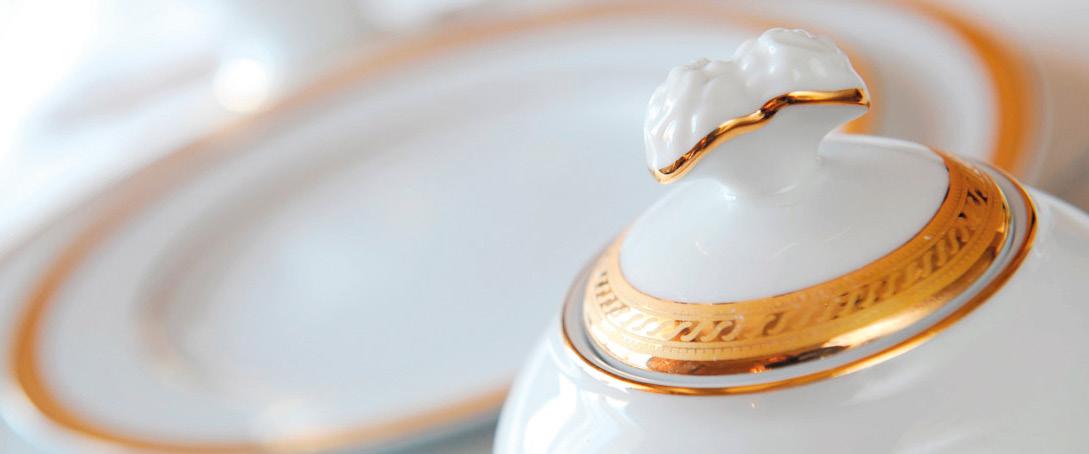
tableware
99 CWR 152/2023
◼
CIRCULAR ECONOMY: FROM WASTE TO RECYCLING
ECONOMIA CIRCOLARE: DALLO SCARTO AL RICICLO
Minerali Industriali Engineering (Novara, Italy)
Recent sociopolitical events have forced the entire business world to rethink production processes, and the ceramic industry is no exception.
While innovation remains the main driver, there is an increasing focus on sustainability in terms of raw materials procurement and energy consumption. The aim is to improve the efficiency of all processes while maintaining the industry’s excellent results and reducing costs and consumption, for the wellbeing of humans and the planet.
Minerali Industriali Engineering - MIE supplies state-of-theart technologies for the preparation of raw materials for ceramic bodies and has a forward-looking vision aimed at optimising efficiency and sustainability . Thanks to its more than a century of experience in raw materials processing combined with continuous R&D efforts, the group is renowned for its extensive expertise covering various fields of application.

SOLUTION REC
The Solution REC series from MIE meets the need for greater efficiency and sustainability. It consists of a range
Le dinamiche sociopolitiche degli ultimi tempi hanno costretto il mondo imprenditoriale, e dunque anche l’intera filiera ceramica, ad un ripensamento del processo produttivo: non solo l’innovazione quale traino primario, ma anche una sempre maggiore attenzione ad aspetti di sostenibilità che tengano conto delle materie prime, della loro importanza e della loro reperibilità, e dei consumi energetici, per efficientare ogni lavorazione in modo da garantire i risultati d’eccellenza del comparto contenendo i costi e i consumi, per il benessere dell’uomo e del pianeta.
Minerali Industriali Engineering
- MIE è tra i partner dell’industria ceramica e offre tecnolo-
gie di ultima generazione per la preparazione di materie prime per gli impasti ceramici, guardando a questi nuovi input con una vision evolutiva che ottimizza efficienza e sostenibilità. L’esperienza di oltre un secolo nel trattamento delle materie prime e la costante attività di Ricerca&Sviluppo, infatti, permettono al gruppo di vantare un know-how consolidato e riconosciuto nei differenti settori d’applicazione.
SOLUTION REC
Con la serie Solution REC, MIE ha voluto rispondere proprio all’esigenza di una maggiore efficienza e sostenibilità. Si tratta di una gamma di processi
100 CWR 152/2023
of extremely versatile “End of Waste” processes for recycling waste from various industrial sectors including ceramics, glass and stone agglomerates and for grinding industrial minerals in general.

The ground materials can subsequently be reused in companies’ production cycles, ensuring a significant long-term reduction in disposal costs. All REC solutions can be customised according to the available layout and specific customer requirements.

Using a closed-loop model , all waste can be mixed with a smaller quantity of high-quality infeed material, a solution that brings considerable financial savings in terms of raw material purchases and energy and logistical costs, as well as a lower environmental impact by avoiding landfill.
“End of Waste” estremamente versatili per il riciclo di scarti provenienti da diversi settori industriali: dalla ceramica al vetro, all’agglomerato lapideo, alla macinazione di minerali industriali in genere, che si prestano a essere reimpiegati nel ciclo produttivo interno alle aziende, garantendo nel lungo periodo un consistente abbattimento dei costi di smaltimento. Tutte le soluzioni REC possono es-
WASTE type
Green body waste
Ceramic tile manufacturers
sere personalizzate rispetto al layout disponibile e alle esigenze specifiche del cliente. Grazie a un modello a ciclo chiuso, tutto lo scarto può essere miscelato in alimentazione con una minor quantità di materia prima “nobile”, con notevoli risparmi economici in termini di acquisto di materie prime, di costi energetici e logistici, con un minore impatto ambientale per effetto del mancato conferimento in discarica.
WASTE type
Green body waste
SOLUTIONS
Ceramic tile manufacturers
SOLUTIONS for





Rec Green Body is an innovative system that allows the recovery of materials at a lower cost than the known traditional techniques. This process takes place through several stages, including:
Rec Green Body is an innovative system that allows the recovery of materials at a lower cost than the known traditional techniques.
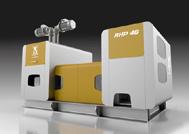
GREEN BODY RECYCLING
1. humidifying stage;
2. compacting stage;
3. grinding stage.
This process takes place through several stages, including:
1. humidifying stage;
GREEN BODY RECYCLING
2. compacting stage;
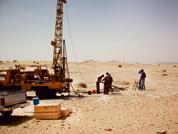
3. grinding stage.
Thanks to these phases, the recovered materials can be reused as new raw materials.
The use of Rec Green Body helps to reduce the environmental impact of waste and to preserve natural resources, thus contributing to a greater sustainability of our planet.
Thanks to these phases, the recovered materials can be reused as new raw materials.
The use of Rec Green Body helps to reduce the environmental impact of waste and to preserve natural resources, thus contributing to a greater sustainability of our planet.
technology
101 CWR 152/2023
PHASE 1 Geological survey PHASE 2a Laboratory est Minerals Treatment Center Industrial test ASE 3 Custome care PHASE 2b PHASE 4 Layout definition & engineering PHASE 5 Dedicated turn-key solutions PHASE 6 A COMPANY OF THE GROUP www mineraliengineering it www mineraliindustriali it From MINE to PRODUCT Dedicated turn key solutions for the treatment of non metallic ores ADVERTISING
Solution REC can also use the patented Fusion® technology , the cutting-edge dry raw materials preparation technology which almost completely eliminates water consumption while maintaining the same quality standards as ceramic body produced using wet technology. Along with water savings, additional advantages for the entire industrial process include lower energy consumption and the reduction of pollutants. Fusion® also guarantees a high degree of production flexibility and in the case of Solution REC operates effectively even with smaller quantities of raw materials while maintaining the excellence of this Italian-made technology.
To optimise the various processes, MIE has developed different ranges of Solution REC:
• REC MUD and REC GREEN BODY , for recycling unfired wastes, mainly in the tile, sanitaryware, engineering stone and limestone sectors;
• REC Ti and REC Pi for fired tile and sanitaryware waste;
• REC GLASS for recycling glass
THE REC GREEN BODY SOLUTION
The REC GREEN BODY range was developed for recycling unfired waste, from the cutting and squaring process of large panels.
The waste, which has a moisture content of 3%, is humified and subsequently compacted, ground and sieved. This process improves the final granulate’s homogeneity, flowability and density, resulting in a high level of stability during the pressing, drying and firing phases. ◼
Solution REC può utilizzare anche la tecnologia brevettata Fusion®, l’evoluzione Dry-Tech delle tecnologie di preparazione delle materie prime, che elimina quasi del tutto il consumo d’acqua mantenendo gli stessi standard qualitativi dell’impasto prodotto con tecnologia a umido; ulteriori vantaggi per l’intero processo industriale riguardano non solo il risparmio idrico, ma anche i minori consumi energetici e la riduzione degli elementi inquinanti. Inoltre, Fusion® garantisce una elevata flessibilità produttiva che, con Solution REC, risulta efficace anche con quantitativi più ridotti di materie prime, assicurando comunque l’eccellenza assoluta di questa tecnologia Made in Italy.
Per garantire la migliore ottimizzazione dei differenti processi, MIE ha sviluppato la serie Solution REC per differenti campi d’applicazione:
• REC MUD e REC GREEN BODY, per il recupero degli scarti crudi, principalmente nei settori Tile, Sanitaryware, Engineering Stone e Limestone;
• REC Ti e REC Pi per gli scarti cotti nei settori Tile e Sanitaryware;;
• REC GLASS per il riciclo del vetro
FOCUS - REC GREEN BODY
Il REC GREEN BODY è stato sviluppato per i produttori di piastrelle e finalizzato al riciclo degli gli scarti crudi del taglio e della rettifica delle grandi lastre. Lo scarto che generalmente si presenta con un’umidità del 3% viene prima idratato per poi essere successivamente compattato, macinato e vagliato. Grazie a questo processo si ottiene un granulato finale con caratteristiche di omogeneizzazione, scorrevolezza e densità, garantendo elevata stabilità nelle fasi di pressatura, essiccazione e cottura. ◼
advertisers’ list MIE Minerali Industriali 101 Novaref 19 Off. Smac III cop Poppi Clementino 6 Powtech 2023 40 Sacmi IV cop Setec 33 Sigmadiamant 85 Solar 1 Studio MM 77 Surfaces Group 104 System Ceramics II cop Tecnodiamant 97 Torrecid 3 World Jet 80 Ancora 11 Bmr 13 Cai 75 Ceramco 57 Cersaie 103 Certech 15, 25, 41 Donatoni Macchine 23 Durst 69 Efi Cretaprint 2 Elle K Automazioni 65 Gmm 71 Gruppo B&T 4, 8 Inter Ser 7, 37, 81 Joseph Lundgren Consulting 18 Kulzer 32 Lamberti 21
102 CWR 152/2023 technology
Ahead of evolution

Bologna, 25-29 settembre 2023
Salone Internazionale della Ceramica per l’Architettura e dell’Arredobagno

www.cersaie.it
L’evento per scoprire in anteprima le tendenze degli spazi architettonici. Il luogo d’incontro di progettisti, contractors e operatori del trade provenienti da tutto il mondo.


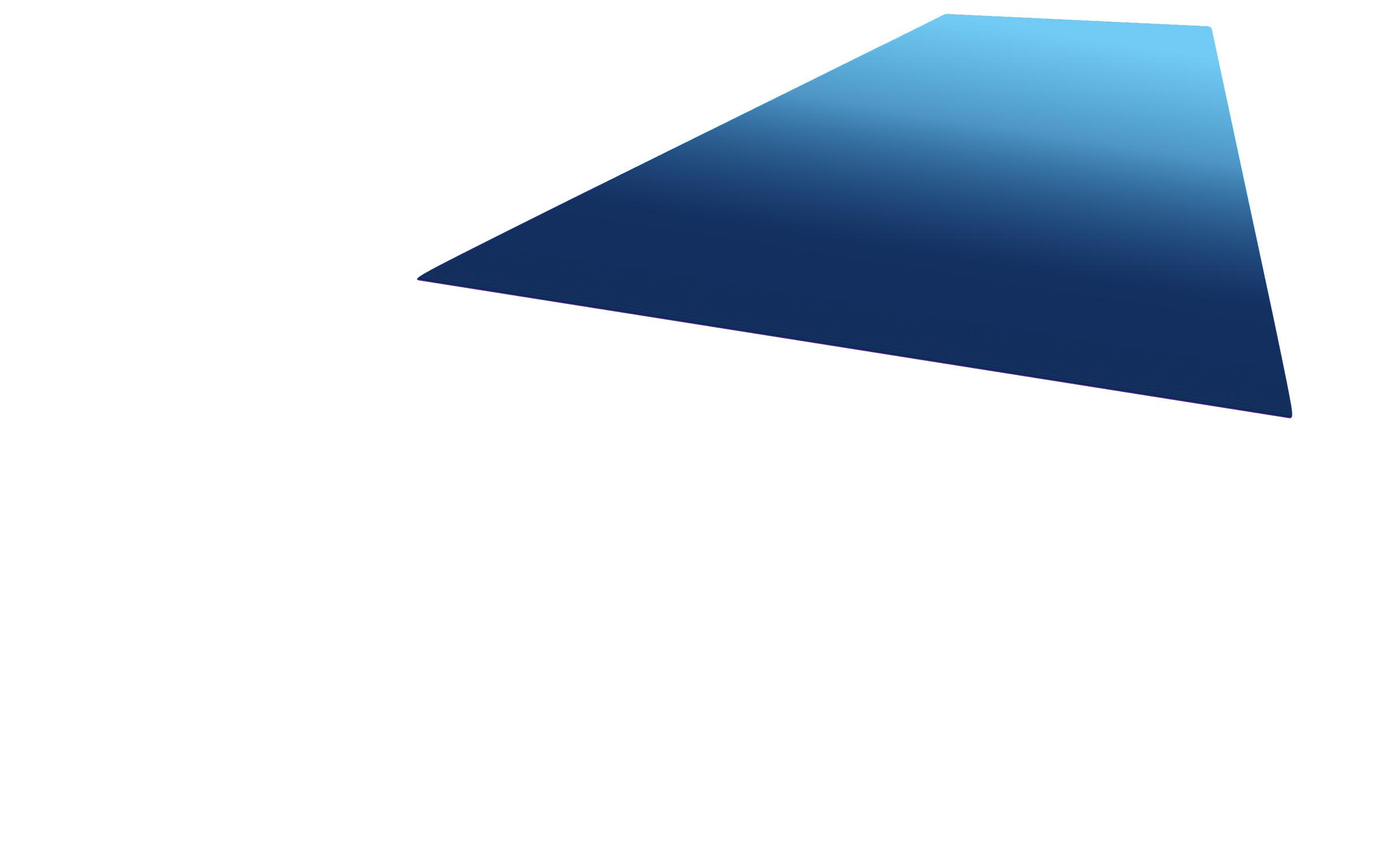
In collaborazione con Promosso da CONFINDUSTRIA CERAMICA
Organizzato da Con il supporto di



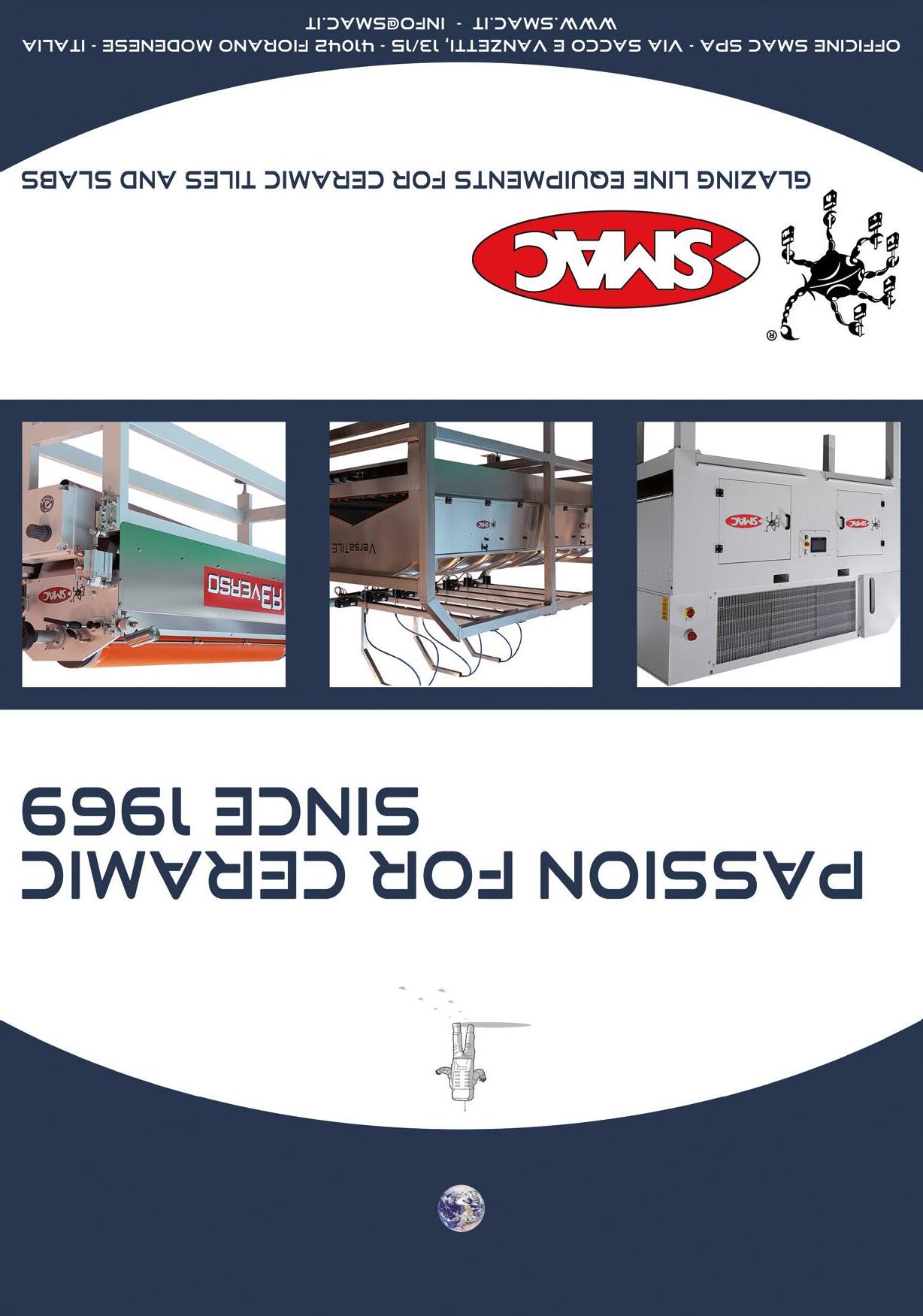








554 SACMI.COM
It’s up to us to minimize emissions
That’s why the SACMI Maestro kiln range guarantees minimum consumption and optimizes heat exchange by using high-speed-flame combustion. Maestro kilns let manufacturers save up to 1,108 tons/year of CO2, the equivalent of one person taking 554 Milan-New York flights. Reduce CO2 and NOx emissions while lowering energy consumption.

KILN RANGE
THE NEW MAESTRO
Milan - New York flights’ worth of CO2 saved IN A YEAR momic


































 Pradelli
Pradelli


































 The press without mould for traditional tiles and big slabs
The original stacking machine for traditional and extra-large sizes
The high productivity digital printer with exclusive FD1 printhead
The ultra-high productivity and fully automated squaring machine
The innovative firing technology powered by hydrogen
The new packaging system for big size ceramic tiles
The worldwide success for grits digital application
The new technology for Super Gloss treatment
The press without mould for traditional tiles and big slabs
The original stacking machine for traditional and extra-large sizes
The high productivity digital printer with exclusive FD1 printhead
The ultra-high productivity and fully automated squaring machine
The innovative firing technology powered by hydrogen
The new packaging system for big size ceramic tiles
The worldwide success for grits digital application
The new technology for Super Gloss treatment












































































































































































































































































